
FREE Vol. 19 No. 12 (2) • SEPTEMBER (2) 2012 • www.indianlink.com.au FORTNIGHTLY SYDNEY Level 24/44 Market St, Sydney 2000 • GPO Box 108, Sydney 2001 • Ph: 18000 15 8 47 • email: info@indianlink.com.au Sydney • Melbourne • Adelaide • Brisbane • Perth • Canberra Top honours for Indian Link at Multicultural Media Awards

2 SEPTEMBER (2) 2012 www.indianlink.com.au

SEPTEMBER (2) 2012 3 NATIONAL EDITION
CDC (Complying Development Certificate)



Enormous reduction in processing time





Building approvals are simplified














CDC is a Government legislation in place that allows a fast track approval




Time saving = $$ saving
Be rewarded for the speed and efficiency of CDC and save up to $20,000 * off the cost of your home.

Wincrest are leading the way with CDC approvals. We will introduce you to Ken Smith from Rapid Inspect, NSW Government Accredited Building Certifier – BPB0789. Ken can assist in providing you with information about fast track approvals of your proposed new home.

Visit us at Homeworld 5, Kellyville, call 9629 5559 or visit wincrest.com.au to find out how you can build your dream home faster.




4 SEPTEMBER (2) 2012 www.indianlink.com.au 4 SEPTEMBER (2) 2012 www.indianlink.com.au OVERALL WIDTH 11.890m OVERALL LENGTH 16.350m GROUND FLOOR PLAN FIRST FLOOR PLAN DISPLAY FACADE Photographs shown are for advertising purposes only and are not part of any offer. Wincrest Homes reserves the right to alter prices and plans without notice. Prices stated do not include site costs or authority requirements. Builders Licence Number 213442C. ABN 58 135 562 873. August 2012.
* CONDITIONS APPLY GYRATE_WC365
For information on the NSW Housing Code visit wincrest.com.au/CDC-complying-development
INDIAN LINK
PUBLISHER
Pawan Luthra
EDITOR
Rajni Anand Luthra
ASSISTANT EDITOR
Sheryl Dixit
MELBOURNE
Preeti Jabbal
CONTRIBUTORS
Usha Ramanujam Arvind, Roanna Gonsalves, Sandip Hor, Vidya Bhardwaj, Avi Chandiok, Komal Utsav Jagad, Noel GdeSouza, Frankey Gerard Fernandes, Rohana Wood, Saroja Srinivasan, Sowpernica, Rani Jhala, Priyadarshini Chidambaranathan
ADVERTISING MANAGER
Vivek Trivedi 02 9262 1766
ADVERTISING ASSISTANT
Nitika Sondhi 02 9279 2004
DESIGN
Danielle Cairis
Indian Link is a fortnightly newspaper published in English. No material, including advertisements designed by Indian Link, maybe reproduced in part or in whole without the written consent of the editor. Opinions carried in Indian Link are those of the writers and not necessarily endorsed by Indian Link. All correspondence should be addressed to Indian Link
Level 24/44 Market St, Sydney 2000 or GPO Box 108, Sydney 2001
Ph: 02 9279-2004 Fax: 02 9279-2005
Email: info@indianlink.com.au

www.indianlink.com.au
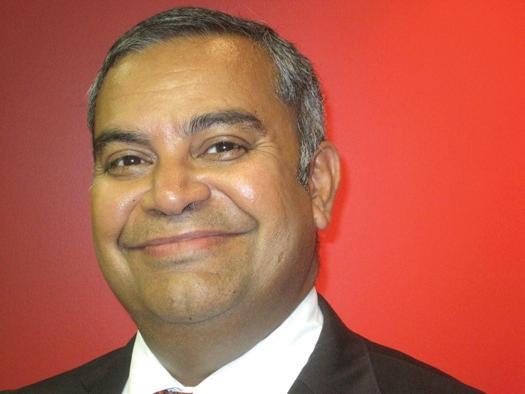
Handful holds community to ransom
Australians cherish, comes with a price.
PAWAN LUTHRA
In Australia’s multicultural community there is no place for violence as seen in Sydney recently, when a handful of protestors clashed with the police in Hyde Park. The demonstrators had gathered in protest against a low grade US film about the Prophet Muhammad. The seemingly peaceful demonstration turned ugly, and the images from there have shocked us all. Mainstream Australians particularly, grappled with what they saw in a park well known for its symbolism to the country’s contribution to keeping the world free of tyranny and oppression.
To note, at Hyde’s Park’s southern end is the ANZAC War Memorial. Its domed ceiling is decorated with 120,000 gold stars - one for each of NSW’s military volunteers during World War I. The main feature internally is a bronze sculpture of a young deceased soldier, held aloft on his shield by three female figures, representing his mother, sister and wife. The sacrifice for freedom which all
Freedom gives us the opportunity not only to express our views, but also to seek information and arm ourselves with knowledge. It is important to have our voice heard: in fact, there have been a number of protests against the State government recently on solar power rebate cuts, changes to workplace reforms and federally, against the carbon tax, among others. But that a third grade, nonsense film – which most of the protestors claim in hindsight of not even having seen – could incite a few hundred to come out to protest, was indeed astonishing. What it created was an opportunity for misguided elements to hijack the event and stage a protest against causes unknown.
As predicted, this has caused a backlash against the Muslim community which has worked hard to build the bridges with the mainstream. It has given oxygen to those zealots, media loudmouths, radio shock jocks and internet trolls, to further the misconception that all Muslims are fanatics and troublemakers, who do not belong here.
Of the estimated 250,000 Muslims in NSW, there were less than a thousand at this protest, and of these less than a
dozen would be the real mischief-makers. The Muslim community, like the Hindu community in Australia, has its own heroes. With parliamentarians Ed Husic and Shaoquett Moselmane, sportspersons Usman Khawaja and Hazem El-Masri, media personalities like Waleed Aly and Akmal Saleh, the level of Muslim participation in mainstream activities has been increasing steadily. These heroes need to take the message out that a religion which is more than 5,000 years old and has deep beliefs in its core values can not and should not, allow a third rate movie to create any harm to itself or its followers
What is heartening to note also is that in the week following the Hyde Park violence, 25 Muslim organisations joined forces to condemn the violence. In the past it has been a challenge to get them to work together, as Australia’s Muslims are made up of 27 nationalities and as many different cultures and histories.
That moderate Muslims have spoken up after Hyde Park augers well for multiculturalism in Australia. A handful may have held a community to ransom at Hyde Park, but here is an opportunity for the community to unite and move forward in this new land we all call home.
SEPTEMBER (2) 2012 5 NATIONAL EDITION
EDITORIAL
SPIRITUAL Chinmaya Mission events
Ganesh Chaturthi
Sat 22 Sept 4.00pm to 5.30pm.
Childrens’ camp
24-26 Sept School holiday camp for kids ‘Satyanarayan Katha’. Details Chinmaya Sannidhi 02 8850 7400.
Navratras 2012
20, 21, 22 Oct The Mukti Gupteshwar Mandir is organizing a 3-day spiritual festival to perform Mahayagya of Navagraha yagya, Trisakti yagya and Mahamrityunjay yagya as well as rudrabhishek on jyotirlingam. Plus, launch of the Holy Book: Shiv Dharm Maha Shastra. Details Rama 0422 22 67 24.
Religious discourses by Sri Velukkudi Swami
7 – 11 Nov The Vedic Society of Victoria announces a series of lectures in English by the renowned Sri Velukkudi Krishnan Swami. Sri Velukkudi Swami comes from a long parampara (tradition) of religious scholars and is singularly equipped to give pravachans on all forms of Hindu scripture, due to his knowledge of various Hindu theological traditions. He has
What’s on
travelled widely, giving religious discourses and representing Hindu dharma in world forums and his lectures on the Bhagawad Gita are at once awe-inspiring and moving, lucid and erudite. Details Ramesh Raghuraman 0406 133 233.
Children’s classes by G.O.D
The Global Organisation for Divinity conducts ‘Gopa Kuteeram’, monthly spiritual educational classes for children aged 4-12 years. 4.00 - 5.30 pm on the 4th Sunday at the Crestwood Community Centre, Crestwood Drive, opp.Conway Ct, Baulkham Hills. Classes are free. Parents can join in the devotional lecture by Sri Deepak Vinodji, kirtans and prayers in the adjacent room during the children’s classes. Details Jayashree 02 9620 4676 or visit www.godivinity.org.au
MISC
Seniors Sri Om Foundation is planning to set up a Day Centre (from Sept/Oct 2012) at Liverpool for Seniors above the age of 65 with any disability. This Day Centre will be primarily for Liverpool LGA residents. The centre will be open once a week
(Tues or Wed), from 10 am to 2 pm. All the activities, including transport, morning tea and lunch and once a month outing will be provided FREE. Details Jay Raman 0410 759 906.
FUNDRAISER
Opportunity International’s Food for Thought
Food for Thought: “Eat. Drink. Be Generous” invites Australians to host a meal for friends and family in October to raise funds and awareness for impoverished communities in honour of International Day for Eradication of Poverty on Oct 17. To register your event, please go to www. foodforthoughtevent.org.au

Diwali with a twist
Fri 5 Oct Mona Singh (Mrs India Australia 2011), Poonam Chandiramani and Ranju Chaddha present a festive Diwali night. Join in for a night of extraordinary entertainment, sumptuous dinner and … a surprise element that will not be revealed until the night! Venue Urban Tadka, 321 Mona Vale Rd, Terrey Hills. $50 per head. Details Mona 0438 079 781.
Baltarang 2012
7 Oct Ekal Vidyalaya Foundation
Australia is organizing a fund raising event at Bowman Hall, Blacktown, Sydney. It is going to be a fun-filled evening of dances, dramas and songs performed by young local artists, and choreographed by top Sydney dance schools. All proceeds will go towards educating poor children in rural and tribal parts of India. All donations are hence fully tax deductible. Details Devendra Gupta 0411 597949 or visit the website www. ekal.org.au
I-India Project’s Diwali Night
Sat 10 Nov I-India Project is organising a wonderful night of themed entertainment including Bollywood singing and dancing, magic and comedy. Grand Ballroom, Four Seasons Hotel, 199 George St, Sydney, 6.30pm. Details Renate Barnett 0402 958 582.
FESTIVAL
North Shore Ganesh Utsav
Sat 22 Sept The first ever Ganesh festival in Sydney’s North Shore, come along for Ganesh puja, food stalls, cultural program, painting competition, and much more. Asquith Community Centre (10a, Old
Berowra Road, Hornsby NSW), 5.00pm-8.30pm
Details Rashmi 0414 771 605 or visit northshoreganeshutsav. com
Sydney Jain Mandal’s Dandia Night
Sat 13 Oct Come and enjoy a family fun event at Campbell Park Scout Hall, Wilga St, Off Victoria Rd West Pennant Hills, NSW 2125. 6.00pm-11.00pm Raffle tickets, best dressed prize for male and female, lots of food and much more Details Abha Jain 0432 248 791.
Navratri
Sat 20 Oct Navratri Cultural Group presents Raas Garba at Michael Wenden Aquatic Leisure Centre 62 Cabramatta Road, Miller (Near Liverpool) NSW 2168. 6.30pm – 11.00pm. Details Nimesh Shah 0437 980 296.
Deepavali Milan
Sat 10 Nov Celebrate Diwali with friends on the North Shore: Laxmi Poojan, cultural program, lucky draw prizes, dinner. Town Hall, 1186 Pacific Highway, Pymble NSW, 6.00pm. Details Kamini Sahni 0401 059 923.
6 SEPTEMBER (2) 2012 www.indianlink.com.au



SEPTEMBER (2) 2012 7 NATIONAL EDITION
Ambitious talkfest opens up virgin terrain
Inaugural writers’ conference seeks dialogue to share the wealth of Indian and Australian regional literary culture
BY USHA RAMANUJAM ARVIND

Australia’s rollercoaster relationship with India is all set to ride a new high after a successful writers’ forum, the first of its kind, opened fresh new pathways between the two nations, tapping into each other’s intellectual and cultural identities and thereby forging what could be long lasting relationships in hitherto unexplored terrains.
Leapfrogging over linguistic and political barriers, the high profile Australia India Literatures International Forum (AILIF) organised by University of Western Sydney’s (UWS) Writing Society and Research Centre (WSRC) brought together a selection of creative talents from both countries for a meeting of minds. Two leading publishers (R Sivapriya of Penguin India and Mita Kapur of Siyahi) and ten acclaimed writers representing many regional dialects flew down from the subcontinent for the largest literary exchange of its kind experienced so far in Australia.
The Indian delegation was led by veteran theatre personality and playwright Girish Karnad, and included Dalit writers Gogu Shyamala and Sharan Kumar Limbale; Mamang Dai and Kinpham Singh Nongkynrih, both writers from the north east; social historian and women studies researcher CS Lakshmi; Urdu storyteller Mahmood Farooqui; Hindi novelist Uday Prakash; Malayali writer NS Madhavan; and Gujarati poet Prabhodh Parikh.

While Indian writing in English has a huge market worldwide commanding an impressive global readership, the literary offerings in myriad regional Indian languages remains virgin territory. Likewise, the rich vibrancy of Australian indigenous writing is a niche area with immense potential. As well, multicultural writers of modern Australia have countless tales to tell, imbibing many literary and cultural traditions that dissolve geographic boundaries. The forum sought to link these diverse traditions of storytelling through one common platform.
festivalWriters
writers, to generate interest in their respective traditions and enable closer interaction and collaboration between them, in the process, spearheading research and commercial ventures,” Dr Chakraborty stated.
While Australian literature has a significant presence in the English departments of Indian universities, it has not yet penetrated the sizeable regional language markets, Dr Chakraborty lamented.
“It will therefore be directly beneficial for Australian writers to interact with their Indian counterparts to explore possibilities of reciprocal publication in translation, and it will be equally fruitful for vernacular Indian writers to expand on Australian vistas,” she noted.
behalf of the Indian writing community. “To represent all of India’s languages and dialects is to represent so many complex cultures, an almost impossible task,” he stated with revealing candour. “Each language is a ferocious nation proud of its unique heritage. Bloody conflicts have resulted from the demands of linguistic recognition. Language divides us, but it also unites us. And India has survived and flourished because of its respect for diversity”.
The VC later hosted a reception for the visiting writers.
“The Australia India Literatures International Forum (AILIF) hopes to develop and strengthen Australian ties with one of the fastest growing markets for literature,” said event facilitator and post-doctoral fellow at WSRC, Dr Mridula Nath Chakraborty. “It will have the twin effect of promoting inter-lingual ideas and enable translations of high quality between these literatures, thereby helping Australia and India understand each other’s societies and foster closer cultural relationships”.

She added, “Indian publishing is at a high point at the moment, and major global publishing houses are rapidly moving into the subcontinent to cash in on a highly literate English-proficient clientele. Australia is in a good position to capitalise on this, as our hidden gems of Australian Aboriginal, Indigenous and multicultural writing, derived from traditions other than the European, are especially unknown in the subcontinent”.
“This forum brings together vernacular writers from India with Australian multicultural

Funded by the Australia India Council (AIC) in association with the Literature Board of the Australia Council for the Arts (ACA), the Copyright Agency Limited (CAL) and Australia India Institute (AII), the forum was held on September 3-6 at the State Library of NSW.
Addressing the inaugural session held at the Female Orphan Building of the picturesque UWS campus, Vice Chancellor Janice Reid said, “Like India, Australia is an ancient country. We look forward to strengthening ties between these two great nations. An event of this scale has not been undertaken before. The forum will contribute significantly to our multicultural fabric and we hope to build on the research of each other’s cultural milieu.”
Girish Karnad was given the onerous task of speaking on
Exploring the diverse traditions of contemporary writing in India and Australia over the course of the four days, the bold and ambitious talkfest at Metcalfe Auditorium examined how “linguistic diversity, vernacular cosmopolitanism and global regimes of translation shape and effect literature”.
Open to public, the thoughtfully chosen panel sessions included speakers from both nations followed by interactive discussions. Old traditions and new cultures, poetic imagination, the salience of place, politics of location, enduring role of myths, great human migration, Girmitiya cultures of Pacific Ocean, linguistic allegiances and the hybrid writer, purpose of translation and role of publishers were some of the issues discussed. The State Library bookstore also made available the works of local and visiting writers.
The forum also included special presentations on Nobel Laureate Rabindranath Tagore as well as revival of ancient Dastangoi tradition.
8 SEPTEMBER (2) 2012 www.indianlink.com.au
sp E c IAL RE p ORT
Karnad with guests at the dinner reception
“The forum will contribute significantly to our multicultural fabric and we hope to build on the research of each other’s cultural milieu”.
UWS Vice Chancellor Janice Reid
UWS Vice Chancellor Janice Reid with Indian writers at the Australia India Literatures International Forum (AILIF)
Dr. Mridula Nath Chakraborty
Photos: Ben Denham
The making and mastering of myths
festivalWriters
Indian and Australian writers discuss the importance of myth in literature and its importance in shaping mindsets
Many of us are familiar with Girish Karnad, the accomplished actor and film director. In a career spanning 40 decades, Karnad has acted in innumerable films across languages such as Kannada, Hindi, Tamil, Malayalam and Telugu.
But it is as a playwright that Karnad is most acclaimed. He has written fourteen plays in Kannada, his adopted language, including Yayati, Tughlaq, Nagamandala, Hayavadana, Agni Mattu Male and Taledanda. They have won him some of India’s top awards and honours including the Padma Bhushan and the Padma Shri, the Jnanpith for Kannada in 1998, amongst several others.
This multi-faceted writer was in Sydney recently to participate in the Australia India Literatures International Forum (AILIF). He was part of a panel of four writers discussing ‘Myth and the Writer’ on September 5 at the State Library of NSW.
Girish Karnad pioneered the use of myth and folklore in Indian theatre, and many of his plays make extensive use of myths to highlight social ills. A strident critic of the Hindutva movement and the rise of religious fundamentalism in India, Karnad’s speech focused on the misuse of myths for political purposes by these agencies.

The audience hung onto his every word, while he briefly outlined the development of religion and myth in India from the Vedic ages to the Bhakti movement. “Myth was the background to an enormous tragedy that took place in 1992,” he said, referring to the demolition of Babri Masjid. Describing the events leading up to this tragic episode, Karnad elaborated saying, “This is a perfect example of how a mythical subject is taken, politicized and turned into a political event… how Rama a mythical figure was transformed into a political figure.”
Karnad spoke of the changes this event had wrought, how it was now acceptable for respectable journalists and writers to engage
in anti-Muslim writing in the mainstream media. Also, people now felt they had a right to break the law in order to uphold their own personal beliefs and myths.
On a lighter note the multi-
influence on Indian theatre for many years. But during the ‘60s when writers started looking for further inspiration, they turned to Indian myths and used them to express their anguish and passion. “That is how I wrote my play Yayati,” said Karnad.
The eminent writer said he chose to focus on this issue rather than his own writing, as over the years, the use of myths has reduced to insignificance in Indian writing and we are instead starting to witness its increasing use in politics.
Next on the podium was Subash Jaireth, an Indian writer based in Canberra. The author of three books of poetry and a work of fiction, Jaireth joked about how he was a “writer of very minor significance”, compared to Karnad who has himself been turned into a mythical figure.
He spoke about the importance of myths and their reality. “The epics such as Ramayana and Mahabharata are sort of older versions of Wikipedia. They are stories built upon stories upon stories. So there are always gaps and cleaves which provide the writer an entry point, where they can enter and cull out pearls,” he noted.
The author talked about his own experiences with the world of myths, reading from his first book of poetry about Yashodhara, the wife of Buddha and his recent book To Silence, a collection of three fictional autobiographies.
The third writer of the day Malcolm Knox is an award winning Australian writer and journalist. A former literary editor of the Sydney Morning Herald, he has won several awards including the Ned Kelly Award for Crime Writing, the Colin Roderick Award and the Walkley Award for journalism. His works of fiction include Jamaica, A Private Man and Summerland. His most recent work called The Life is about a surfing legend called DK, past his prime, who is now overweight and living with his mother.
myths where they can find themthey have to be magpies”.
According to him, the surfing world offers an opportunity for myth creation. Surfers are always searching for that elusive perfection referred to as the ‘mythical left’ and they create “story upon story” about surfing champions, elevating them to the status of mythical figures. Knox talked about the humorous side of surfer terminology, peppered with terms like ‘epic’, ‘legend’, ‘legendary’, ‘the stuff of legend’, all referring to that great surfing experience.
Knox took the example of a real-life surfer Michael Peterson, on whom his main character DK is based, who was transformed into a figure of legend. The wealth of stories about the surfer was compiled into a biography; but his biographer Sean Doherty had to admit that although many of them were embroidered, they were too good to leave out of his biography. This is a perfect example of how communities create their myths through storytelling.
The last speaker Nicholas Jose is author of seven novels including his most recent, The Red Thread, and two collections of short stories. He is Professor of English and Creative Writing at the University of Adelaide. Jose spoke about many aspects of myth, including the differences in myths across different cultures and the experience of communicating across the differences.
“The element of myth comes from one culture to another, a powerful borrowing that must be handled with care. We need to experience it from the inside not as something recorded by an outsider … but as something made real by objects in the story, something lived and living. Stories and images that speak across this space have a mysterious capacity to change and shift even as they retain their core energy,” he stated.
faceted writer stated, “Since I have to talk about myself, I will do so for two minutes”, which brought a bout of laughter from the audience. He talked of Bernard Shaw being an overwhelming
The sharp contrast between the focus of the first two speakers and the third was almost comical. While the Indian writers focused on the abundance of legends in Indian culture, their use and misuse, Knox looked at the lack of myths in Australian culture. “Australians have to get their



The questions raised by the audience ranged from the unifying nature of myths to the existence of countries without myths. The panellists each brought in their own perspectives, reflective of the vast cultural differences between countries. But the discussion also highlighted the unifying role of the writer across cultures and brought into focus the importance of myths in writing.

SEPTEMBER (2) 2012 9 NATIONAL EDITION
sp E c IAL RE p ORT
CHIDAMBARANATHAN
Photos: Ben Denham
Girish Karnad
Malcolm Knox Nicholas Jose
Paul Sharrad and Subhash Jaireth
Excuse me, your border is perforated
BY ROANNA GONSALVES
One passionate scholar. 12 Indian writers. 24 Australian writers. Innumerable stories. This was the Australia India Literatures International Forum (AILIF), held at our magnificent house of books, the State Library of New South Wales from September 4 to 6, 2012. The legendary writer and actor Girish Karnad led a stellar contingent of writers from India who shared the space with many Australian writers including award winning Indigenous writers Alexis Wright and Ali Cobby Eckermann.
A love affair and the birth of AILIF
Before we continue with the story of AILIF, we must first tell the story of how AILIF was born. It is in part, the story of a Delhi girl, Dr Mridula Nath Chakraborty from the Writing and Society Research Centre (WSRC) at the University of Western Sydney (UWS), the passion and brains behind AILIF. The story bears telling because it reaffirms the value of multilingualism and the value of a ground-breaking event such as AILIF. It began when Dr Chakraborty or Mridula as she is familiarly called, became fascinated by the work of the celebrated Hindi writer, Munshi Premchand when studying in an English medium school in Delhi. Upon the insistence of her mother, she then learnt to read and write in her mother tongue, Bengali. The story continued when Mridula began working with Katha, the acclaimed publishing house that specializes in translations, and she fell deeply in love with Indian literature in translation, finding a “renewed sense of the fantastically expressive intricacies and idioms of the vernacular tongues, the regional languages of India”. However, it is upon her arrival in Australia that the plot thickens. Mridula’s eloquent words tell us of a journey of revelation, one that many of us have undertaken as Indian immigrants to Australia, finding that Australia is truly
festivalWriters
multilingual, with almost 400 languages spoken here by people of 270 ancestries. With the backing of the WSRC at UWS, and its very supportive director Prof Anthony Uhlmann, she was spurred onto action.
“I came to this country four years ago with the usual stereotype of it being a monolingual nation. But by simply taking a train, I
would encounter the sounds and languages from all corners of the world in all their energy and urgency,” she revealed. “I was increasingly aware of the many indigenous languages that resound in this continent. Even as I enjoy the spectacular style and success of Indian writing in English, I knew that I wanted to showcase vernacular Indian literature in all its richness. Most of the world knows and celebrates Indian writing in English, but does not really have any sense of the breadth and depth of its 22 official regional languages and 300 dialects, or the literatures that flourish in them. This is what I wanted to bring to Australia. AILIF is a coming together of these soundscapes, these multifarious tongues of the world, from my home country to this one. The scale was large to begin with; but it was astonishing to discover the many Australian
voices I found in the process of bringing my two worlds together. I knew that I would have to pick and choose between the Indian languages, but doing the same with Australian literature was even more difficult, given the range of established and equally talented emerging voices I kept finding”.
Potent perforations
NS Madhavan, the muchadmired Malayalam writer, in his presentation at AILIF, memorably spoke of the Malayalam language as being perforated. The image of a perforated language, bringing to mind the borders of the old dot matrix printer paper or a fishing net, is so potent that it immediately lays bare the primacy and inevitability of perforation in human existence, as is in the natural world around us. It reminds us that like Malayalam, our lives, stories, and indeed all our languages are perforated, full of necessary and welcoming holes, where currents of influence from the East, West, North, and South, from above, from below,



from all around, may blow in and blow out, endlessly regenerating and reshaping the very holes themselves.
For those of us involved with creating new stories of Australia’s multicultural reality, the idea of perforations also reminds us of the primacy of diversity, and we applaud the role played by AILIF in celebrating this.


“AILIF is a salutary reminder that like genetic diversity, we need linguistic diversity, or else the human tongue will wither away and perish like a single strand of DNA,” said Mridula. “At a time when Asia is becoming increasingly important to Australia, and Indian migration is on the rise here, it is important to remember that India exists in myriad tongues, religions, cultures and modalities. Indian writing in English usually offers a metropolitan view of the contrasts and contradictions of the vast subcontinent. Vernacular literature offers a valuable way of understanding these nuanced multiplicities of India and opens

10 SEPTEMBER (2) 2012 www.indianlink.com.au
sp E c IAL RE p ORT
In the vast, enigmatic world of vernacular literature lies the opportunity to tell our stories and listen to those of others
Photos: Ben Denham
the window to a textured, layered world”.
She went on, “Outside of cricket, Australia occupies a limited space in the Indian imagination. As bilateral relations between the two nations increase in coming decades, it will be critical to understand what makes this island nation tick. What better way to enter this world than through its aboriginal, indigenous and multicultural literatures, which tell unique stories about the nation to itself and the world?”
The other thing about perforations is that they can erase boundaries and facilitate exchange. Mamang Dai from Arunachal Pradesh reminded us about the numinous exchange between the human and the non-human, of talking to the land and listening as the land talks back. Bem Le Hunt, the Indian-English-Australian writer of three acclaimed novels, reminded us of those primal perforations between fact and fiction itself.
“The minute you write about a place it becomes fictional,” she said.
Prabodh Parikh’s enchanting presentation on the art of Tagore pointed to exchanges within the self, to the overflow of self while erasing the self. Mahmood Farooqui’s enthralling lecturedemonstration of Dastangoi, an ancient form of epic storytelling in Urdu, pointed, among other things, to perforations of formal conventions to revive and reinvent fading performative forms. Sharon Rundle and Meenakshi Bharat have been creatively perforating literary borders between India and Australia with their muchcommended edited anthologies of short stories by Indian and Australian writers, Alien Shores (2012) and Fear Factor: Terror Incognito (2010).
Dhoti borders and other challenges
AILIF was also a space where the dirt could be gathered from under the carpet and brought once more, into the light. CS Lakshmi (Ambai) recounted the times when she was used to being patronized and dismissed by male writers who would complement her on her looks or her clothes, rather than on her writing. So she decided to give them a taste of their own medicine, saying, “The border of your dhoti is really beautiful! Where did you buy it? I would also like to buy one for my husband.”
The appreciative laughter from the audience did not mean that women writers scorn genuine and well-phrased compliments; instead that such compliments must not come at the expense of recognizing and valuing the actual writing itself.


When Gogu Shyamala spoke very movingly and with fierce

f estival W riters
intelligence about the struggles, triumphs, everyday joys and sorrows of the Dalit people of Telangana, there were few dry eyes in the audience. She spoke of language being highly politicized, and of how she writes in an indigenous, ‘authentic’ Telegu that is vastly different from the Sanskritised Telegu spoken by the powers that be. Our languages are perforated differently by the different politics of the places in which they are spoken. So while in India, Sanskrit may be the language of oppression and erasure for some; in Australia, it is a language that maybe used to resist oppression and erasure, deliberately marking diversity and claiming legitimacy within a multicultural society, as the Indian Australian poet Michelle Cahill told us through her precise and illuminating poetry. Kynpham
Sing Nongkynrih from Meghalaya, in enlightening and entertaining the audience with his poem about a ‘cantankerous mother’, reminded us of the power of words and the responsibility with which they must be handled.
The politics of the publishing world did not go unremarked.
Kabita Dhara, founder of Brass Monkey Books, an Australian
publishing house that aims to publish writing from India in Australia, said she was “looking for stories that show how similar we are rather than how different we are”. Yet she and Mita Kapur from Siyahi Literary Agency - a writer herself, spoke of the challenges they faced with the dearth of literary sensitivity and professionalism of some publishers and booksellers in India and elsewhere. Sharan Kumar Limbale, the Dalit writer and activist writing in Marathi pointed to an economy of oppression within publishing. He spoke of the challenges faced by Dalit writers trying to get published and paid in an industry dominated by upper castes. “If anything is revolutionary (in a manuscript), they just delete it,” he said. Uday Prakash, the celebrated Hindi writer, spoke of the majority of writers who are very poorly paid by many roguish Indian publishers.
Storytellers of our culture
As a growing presence in Australia, we in the Indian Australian community want to see ourselves in the mirror of the Australian story. What does
it mean to be an Australian? Does being Indian Australian fit into that story? Writers are the storytellers of our culture, be it Indian, Australian, or IndianAustralian. The AILIF panel chaired by Christopher Cyrill, comprising emerging Indian Australian writers such as Manisha Amin, Aashish Kaul, Chris Raja, Kunal Sharma, and this writer, try to tell the stories of Indian Australians. In doing so we are trying to write ourselves into the larger multicultural, multilingual Australian story, writing back but also writing forward, writing ourselves into this Australian landscape while being mindful of course, that it always was and always will be, Aboriginal land. Finally, Mridula’s words amplify the whispers around the State Library during AILIF, where appreciative multilingual conversations repeatedly asked for more such encounters, more such opportunities for Indians and Australians to meet, to perforate borders both linguistic and cultural.
“I would like to see, coming out of AILIF, translations of Indian literature into English; the Indian community in Australia can make a significant contribution by sponsoring and funding the translation and publications of such books,” she said. “On the other side, I would like to see the stereotypes about Australia being broken in India through translations of aboriginal, indigenous and multicultural Australian literature into the various Indian languages. There has been a clamour to have this forum become an annual event in Australia: this is very much possible given the diversity of the languages and literatures in both countries. However, the big aid to make this vision happen will be financial support. There is enough goodwill and momentum at this moment to make AILIF go places: we should ride the wave and make this happen!”
There is a world out there, in here, waiting for our stories. All that is left is for us to create them.
Khynpam
SingNongkynrih,
Prabodh Parikh
N.S.
Uday Prakash
This
Kabita
Suneeta
SEPTEMBER (2) 2012 11 NATIONAL EDITION
Most of the world knows and celebrates Indian writing in English, but does not really have any sense of the breadth and depth of its 22 official regional languages and 300 dialects or the literatures that flourish in them.
“I would like to see the stereotypes about Australia being broken in India through translations of aboriginal, indigenous and multicultural Australian literature into the various Indian languages”.
Dr Mridula Nath Chakraborty
Left page, clockwise: Ambai, Mamang Dai, Inez Baranay, Bem Le Hunt
Subhash Jaireth, Judith Beveridge, Michelle Cahill, Prabodh Parikh
Mahadevan
page, from top: Mahmood Farooqui and Mita Kapur
Dhara, Sharon Rundle, R. Sivapriya
Peres da Costa and Michelle de Kretser
Literature of anguish
BY USHA RAMANUJAM ARVIND
So if you see someone like me
Who’s drunk and loud and cursing
Don’t judge too hard, you never know What sorrows we are nursing. (little bit, long time, Ali Cobby Eckerman’s collected poems)
For many Hindus, words like ‘Shudra’, ‘Pariah’, ‘Domba’, ‘Asprushya’ or ‘Panchama’ (the list goes on) instantly bring up unforgiving memories of a bitter chapter in history that is best forgotten or better still, wished away.
Quite literally meaning ‘outcaste’, the words refer to the lowest caste in the ancient Varna system. Dictating social position, it speaks of many centuries of injustice, oppression and brutal discrimination. Since the days of breakaway movements like Buddhism, Jainism and more recently the Brahmo, Arya Samaj and Ramakrishna movements, an honest and sincere attempt has been made to right the wrongs and to compensate this much-maligned community. And thankfully, more enlightened members of the ‘forward’ caste have championed these emancipation efforts.
While the Indian Constitution officially calls them ‘scheduled castes’, the names coined by Phule and Gandhi – Dalit (crushed) or Harijan (God’s people) are the preferred terms these days. Many an initiative has also been taken towards ‘positive discrimination’.
Accounting for almost a quarter of India’s population, a number of Dalits have held influential positions. Since the sixties, Dalit literature is a thriving phenomenon that has recently forayed into new markets in India and elsewhere. From the ‘obligatory Dalit’ (as Girish Karnad so powerfully put it) of mainstream movies and literature, they are now real personae with strong voices and uplifting stories.
Two of their influential writers Sharankumar Limbale and Gogu Shyamala spoke passionately about the impact of literature in changing attitudes, not only of Dalits but other caste members as well.
Limbale and Shyamala were among the panellists at the opening session of the Australia


festivalWriters
Be it Aboriginal or Dalit, tribal or indigenous, the two socially rejected communities spanning two entirely different continents, have so many parallels.
but of brutality against Dalits. How can it be nice? Yet I had to write it. How could I neglect the call of my people? I did not know the structure of literature but I wanted to share the pain of my people. Words just flowed out”.
Sadly, his introduction into literary circles has been a painful one, creating social tension as well as deep personal rifts. His own community, including his family, rejected Limbale for laying bare the naked truth of Dalit life in all its ugly reality.
The soft-spoken author’s autobiography Akkarmashi (Untouchable) erupted like a volcano two decades ago.
“How could I not write? It is my birth-right to express my protest through my writings. It is my attempt to cleanse the stain on our country,” Limbale told Indian Link. “Our people’s struggle is my paper, our movement is my ink, the people are my books and my protest is my parliament”.
His writings verbalise the deep pain, the suppressed anger and wounded pride of the entire community of marginalized people.
Katha, the embodiment of fertility and biodiversity, and the freedom struggle for independent Telengana.
“We are avachas and adrushas, made by Hindus but not Hindus,” she said.
Her powerful writing has been translated into many regional dialects, besides English. My father may be an elephant, my mother only a small basket, Merit interrupted, Infected wounds are but the tip of the iceberg. An outspoken activist of Dalit rights and women’s upliftment, Shyamala has also written prolifically on the issues she is passionate about. Her simple Telugu quotations moved the audience to tears.

Akin to India’s untouchables, the story of the ‘stolen generations’ is yet another shameful chapter in human history. It is the heart-rending tale of half-castes and non-entities, of isolation and social rejection. The deep angst and anguish of these ‘half-breeds’, form the basis of Ali Cobby Eckerman’s poetry.
rejected communities spanning two entirely different continents, have so many parallels. Their
writer unashamedly stated, “is the literature of drainage water. It is not the literature of imagination
It is this very anguish that is conveyed in the works of Gogu Shyamala, an advocate, women’s activist and champion of the Telengana movement in remote rural Andhra Pradesh. Shyamala who is deeply indebted to her first publisher Navayana, spoke of the matrilineal matriarchic family system of her community. Her storytelling also belongs to the protest tradition. She spoke proudly of her mother goddess
Pochamma Katha and Ellama
Australian politicians have since made botched attempts at rewriting history, but have they been able to heal the deep wounds? More importantly, have the half-hearted policies effected real social change in these sidelined communities?
I’ll dance with mob on this red Land, munda wiru place I’ll dance away them half-caste lies ‘cos I got my Nana’s face!
The well read and widely travelled Eckerman hopes to be the change agent her community needs to rally back to dignity and social acceptance.
12 SEPTEMBER (2) 2012 www.indianlink.com.au sp E c IAL RE p ORT
There are many painful parallels to draw between the Dalits and the Aboriginals, both socially displaced peoples who tell their stories through their literature
Photos: Ben Denham
Ali Cobby Eckerman
Sharankumar Limbale, Alexis Wright and Gogu Shyamala
Free Visa Assessment* for Students & their Employers

• “I was a student in Australia. Mr. Ramneek helped me for a 457 visa.”
- Chaudhari Prakash, Ashfield, NSW
• “Many thanks for acting promptly when needed.” – K. Patel, 457 Sponsor, Sydney

• “Very satisfactory service provided by Mr. Ramneek Madahar regarding my visa complications.” - P. Singh, Ellenbrook, WA
• “Everything was well planned & Systematic. Must recommend for Immigration issues.” - H. Gandhi, 457 Visas, Merrylands, NSW

• “I am really very thankful & overjoyed... lead me through the toughest situation to final success.” - N. Singh, GSM grant under 2 months.
• After 8503 (no further stay), condition waiver, my student visa was refused. Thank you Mr. Ramneek for a successful appeal at the Migration Review Tribunal without a hearing. P.D. Glenmore park, NSW
• “I got my 457 work-permit (from student visa) within 4 weeks. Mr. Ramneek done his work very accurately, on time, without any failure & provides perfect guidance. I am very happy with his work & very thankful to him” - Chirag Patel, Kew, Victoria.
• “I was able to negotiate through the complicated process & retain a baker full time in my business. For 457 working visas, Mr. Ramneek Madahar’s services are highly recommended. Definitely a 5 star service.” - Harry, Bakery Owner, Oatley, NSW
• “I was finally able to receive confident & correct advice in relation to my situation from Mr. Ramneek Madahar.” - G. Bastola, For SC457 Visa, Homebush, NSW
• “Thank you for your timely assistance with our restaurant sponsorship and 457 visa grant.” CH Patel & DC Patel, Restaurant Owners, Camberwell, Victoria
• “Ramneek Sir has made our 457 visa 100% successful. Thank you forever.”
- Shruti Shah, Merrylands, NSW
• “I was on a Bridging visa for my SC885 visa application on 110 points. Mr. Ramneek made my 457 visa possible.” - C. Patel, Merrylands, NSW
• “For any complex cases, to anyone who needs help in immigration... don’t worry you are in safe hands.” - A.H., 457 Work Visa, Cronulla, NSW
“I sincerely recommend Mr. Ramneek’s services for immigration.” -K.K., Central Coast,NSW
• “Thank you Ramneek, I wish you all the best.’ - S. N., GSM Visa, Egypt
• “Mr Ramneek Madahar, thank you very much for our PR. Your efforts are appreciated & thanks for looking after my case – D. Patel, Business Skills, Melbourne, Victoria
• “I am thankful to Ramneek for my permanent settlement in Australia.”
- Vikas, GSM, Parramatta, NSW
• “I applied for Regional - SC119 visa under the DRC on 15/11/2011, the visa was granted on 09/02/2012. Mr. Madahar has handled my application very well.” - Vijaya, Bourke, NSW
• “Thank you Mr. Ramneek for my ENS PR under exceptional circumstances.”
- S. Kumar, Croydon, NSW
• “Thank you for your support & help towards my ENS PR.” – S. N., Ingleburn, NSW.
• “I am very thankful to Ramneek Sir for his help & support for my ENS residency. I had no hopes left & was planning to go back to India with my family.”
- K. Shah, South Strathfield, NSW
• Thanks Very – very much for your help for extending my student visa and 457 and RSMS advice. - A.Rani, Smithfield
For appointments, please call 02-9745 3106 or 0412 764 600 or email: enquiries@tglt.com.au
SEPTEMBER (2) 2012 13 NATIONAL EDITION Course Admissions (Australia wide), Student Visas, Work/Sponsorship Visas (457s, RSMS, ENS), Partner Visa, Family Visa, Tribunal Appeals & Waivers, General Skilled Migration.
* Provision of complimentary advice &/or assessment for our eligible students &/or their employers is at our sole discretion.
The Great Learning Tree Pty Ltd (Ramneek Madahar, RMA# 0428459) UNIT 6, 24-26 Morwick St., Strathfield, NSW 2135 (5 min. walk from Strathfield Station. Opp. Strathfield Recreational Club/Tennis Courts)
Education, Career & Visa Solutions @ The Great Learning Tree
Just some of our many satisfied clients:
Calling all Students, Employers! There has never been a better time to apply for a SC 457 visa (Employer Sponsorship)
ONGC-UNSW partnership to tap unconventional oil resources
Joint collaboration seeks solution to depleting oil reserves tapping other unconventional resources
BY USHA RAMANUJAM ARVIND

The UNSW School of Petroleum Engineering (SCOPE) has forged a crucial research agreement with the Indian government run Oil and Natural Gas Corporation Ltd. (ONGC) to evaluate the production potential of an “unconventional oil resource”.

The partnership will explore the “feasibility of recovering hydrocarbon fuel from hardto-access offshore geological structures known as basement reservoirs”.
ONGC has been particularly interested in its Heera Fractured Basin at Mumbai Offshore located on the western continental shelf of India.
Working closely with its counterparts in US, UK, Germany, France and Japan, SCOPE is a recognised leader in the area of geothermal energy technology.
The latest memorandum of understanding, valued at $2.05 million over the next two-anda-half years, is the fourth major project between UNSW and ONGC. It builds further into the existing five-year partnership, entered first in 2002 and which has since been extended twice.
“This is an important partnership for UNSW that has grown with time,” stated Professor Val Pinczewski, Head of SCOPE.
“ONGC certainly have a need for the sort of high level technological developments we have been making, and we think they are an excellent partner to work with,” he noted. “At UNSW we have ongoing programs in geothermal energy led by Professor Sheik Rahman, which basically look at characterising
fracture systems in rock structures and forming strategies to develop these fractured reservoirs. We also have programs in fracturing hard rocks to enhance production. Together, these research efforts will provide the framework for this project”.
“The actual technology you need to develop these reservoirs is not much different from the technology used to develop shale gas,” he further explained. “This is already very big in the US, and has the potential to become very big in Australia. So for us there are some really good synergies between what we can do here in the local context and what we’re doing internationally with partners like ONGC.”
According to Professor Pinczewski, UNSW’s experienced engineers and geo-scientists
will be developing a range of mathematical models to predict fracture characteristics of this particular basement rock type, simulate fluid flow through its interconnected fracture system and estimate the hydrocarbon potential.
Later on, they will be conducting experiments with rock samples provided by ONGC and applying their models in the field to test how much oil is recoverable.
“For the last 10 years we have been cooperating on different areas of hydrocarbon reservoir development. During this period two projects have been completed, one is in progress and the fourth - the fractured basement study is about to start”, Professor Rahman told Indian Link “SCOPE has developed specific
tools and methodology for characterisation and development of fractured basement and this partnership gives us an opportunity to apply the knowhow that we have developed for exploitation of geothermal resources in Australia,” he added.
Professor Rahman has made a pioneering contribution in the development of Australian geothermal resources, particularly drilling methods and equipment for highly stressed and abrasive environments. He has advanced the technology of hydraulic fracturing to stimulate and develop naturally fractured reservoirs. This technology has already been successfully applied in New South Wales, Queensland, South Australia and Victoria.
Additionally, the work will feed into the Australian Energy
INTRODUCING THE NEW INDIAN LINK RADIO APP FOR IPHONE, IPAD AND ANDROID


Research Institute, a sustainable energy think-tank based at UNSW which connecting engineers, scientists, economists and policy experts, both Pinczewski and Rahman believe.
Naturally found in Earth’s sub-surface, hydrocarbons are currently the primary source of energy supply. The extraction of liquid hydrocarbon fuel (otherwise known as petroleum) from sedimentary basins is integral to modern energy development.
It has been estimated that a large proportion of the world’s proven oil reserves are found in naturally fractured reservoir rocks.
A subset of naturally fractured reservoirs, basement reservoirs has been exploited for a while now. Since the late nineties however, there has been marked increase in interest largely due to inflated oil prices that have forced researchers to delve deeper into alternative methods that were previously deemed uneconomical. As well technology for accessing remote oil sources has improved, particularly drilling methods, sophisticated down-hole tools and seismic techniques.
The MoU will benefit ONGC significantly as well. With its ever-increasing population, India is facing acute energy shortages. Tapping into existing but hitherto unidentified and under-utilised resources like basement reservoirs could be a welcome addition. Since oil discovery in 1974, ONGC has made substantial investments for additional development works at the western shelf. The basin is the largest in India and includes Mumbai High, Bassein and Heera and Neelam producing fields.
With ONGC recently striking new reserves off Mumbai coast, perhaps the biggest ever so far, SCOPE is already looking to closely collaborate on the new development as well.
14 SEPTEMBER (2) 2012 www.indianlink.com.au INDIAOZ
Consul General of India Arun Kumar Goel, Vice-Chancellor Prof Fred Hilmer, Mr Rakesh Sharma from ONGC, and Deputy Vice-Chancellor (Research) Prof Les Field.
Empowering rural women in remote Rajasthan
I-India Australia’s support for the ‘Gudri Project’ taps into a much-loved art form to eradicate poverty
BY USHA RAMANUJAM ARVIND

When Abha and Prabhakar Goswami were commissioned by UNICEF to do a study on street children in remote Rajasthan, they were moved by what they saw – abject poverty, destitution, vulnerability, unsafe work practices and severe malnutrition. Coming from severely disadvantaged backgrounds themselves, the duo set up the I-India Project to give rescued street kids a fresh start.
Since its humble beginnings, the project has found additional benefactors around the world who have facilitated many new programmes to make these children not just well-nurtured, but self-sufficient as well.
The Jhag children’s home, Annapurna canteen, structured curriculum based learning at Prem Pathashala, Ladli girl’s home, rudimentary healthcare facilities and Franklyn Scholar vocational training centre have been some of the positive outcomes along this arduous, but fulfilling journey.
Most of these facilities were made available through the unstinting efforts of I-India’s Australian offshoot, which since 2007 has time and time again rallied their resources to sustain the expanding project.
I-India Project Australia (I-IAP) has teamed up with Singaporebased Street Children’s Project to raise funds and brainstorm for fresh new directions.
I-India Australia founders Celia and Renate Barnett are now lending their support to another exciting venture – the Gudri project.
Set up in 2010, the project is the brainchild of Abha and Prabhakar’s daughter-in-law Darshana Goswami, and aims to empower local women by providing them a steady and sustainable means of selfemployment. The project provides illiterate women from the poorest slums both training and resources to hand-stitch quilts, floor covers and homewares. ‘Gudri’ is an ancient Rajasthani tradition, where block-printed cotton fabrics are layered and sewn in straight lines to form an appliqué work. The Street Child Project is working closely with the Indian team to design products that appeal to the western marketplace. The products made from this venture have been sold all round the world.
Besides tools and supplies, women participating in the programme are provided rations,
solar lights and blankets, as well as a share of the profits. By reaching out to women, the Gudri project aims to improve these women’s quality of life which extends to their families as well, thus eradicating the root causes of poverty in their respective communities. The Gudri women have since formed cooperatives, taking ownership of the project and have worked tirelessly on their beautiful craft. “Darshna Goswami is working tirelessly to extend the project as far as possible to benefit as many women as possible on a limited budget. We were able to see the work for ourselves for the first time in November last year,”
Renate told Indian Link
“After driving south from Jaipur, we left the highway and trundled across the desert, through a few villages and then out into the
middle of nowhere. All you can see as far as the horizon is sand, and small shrubs. Eventually we pulled off the road into a small area of land, where a number of shacks had been set up out of corrugated iron,” she explained.
“As we pulled up we could see women gathered in the rough shade of the lean-to shelters. They were all hard at work, quickly sewing long lines into gathered layers of fabric. They smiled at us as we arrived, and then went back to their work, quickly tugging the thread through the fabric,” she added.
“What we were seeing was the first opportunity these women had had to gain employment, and to help to support their families. For the first time in their lives, they had been given a vocation and a means of helping themselves
out of poverty. The project not only empowers women, and assists families financially, but also changes attitudes of entire villages in relation to the rights and roles of women,” she stated.
The Gudri Project was one of nine finalists in UNIFEM’s ‘Project Inspire 2012’. The winning project will receive a grant of US$25,000.
A digital and social media-driven initiative targeted at empowering marginalised women and disadvantaged children in the Asia Pacific, Middle East and Africa region through entrepreneurship, Project Inspire is in its second year. Founded on the fundamental belief that empowering women fuels thriving economies spurring productivity and growth, the project hopes to give the right support through access to funding
The project provides illiterate women from the poorest slums both training and resources to hand-stitch quilts, floor covers and homewares



“The project not only empowers women, and assists families financially, but also changes attitudes of entire villages in relation to the rights and roles of women”
Renate Barnett
and skills development.
The scheme was launched for centenary celebrations of International Women’s Day in conjunction with Master Card.
Targeting youngsters in the 1835 age brackets, the project also hopes to inspire young changemakers to create a better world of opportunities. Gudri Project team members included Darshana Goswami, Pippa Reid and Edwina Ong.
Call for pitches, which included 5-minute videos, written proposals and live presentation opened on March 8. Gudri Project was shortlisted from over 350 other proposals worldwide.
Two other India-based projects – E-learning for change and Women’s private personal marketplace, also made the final cut.

SEPTEMBER (2) 2012 15 NATIONAL EDITION INDIAOZ
Old favourites come to life again
Aarthi and Swathi graduate with flying colours at their debut arangetram

is a graduation performance typically undertaken after several years of dance training and only student is capable. It is a test of both the student’s talent as well as the Guru’s knowledge. Aarthi and on September
was a huge success, with the sisters gracefully displaying their significant talent and showcasing their Guru Gayatri Krishnamurthy’s boundless knowledge.
Innovation and creativity were the buzz-words of the evening. It was evident in all aspects of the event – right from the selection of items to the unusual method of announcements, and the tasty food served in the interval!

The recital commenced with a Nataraja Anjali in ragam nattai, set to adi talam. In a traditional arangetram, the items follow a typical format or margam as specified by the Tanjore quartet in the early 18th century. Usually, arangetrams begin with an Alarippu, a dance of pure nritta which serves as a warm up for the rest of the performance. The Nataraja Anjali, performed by both sisters as the invocation, included many of the basic movements seen in the Alarippu and was an apt choice for the opening item. The dance paying tribute to Nataraja, the Lord of Dance, was well choreographed and neatly executed. Both girls displayed good anga shudham or body perfection
and neat poses.
The items were announced by the dancers themselves, in a prerecorded movie. This unusual mode of compering lent a more intimate touch to the evening, but unfortunately was not without its own glitches. The second item was a keertanam on the Goddess Tripurasundari, deity of Thiruvannur, in ragam sudha saveri performed by Aarthi. As this item took the place of the jathiswaram, a pure nritta piece, the keertanam was choreographed with substantial jathis in a complex rhythmic pattern (kanda chaapu talam). Aarthi rose to the occasion, performing the adavus in perfect rhythm without missing a single beat. As with all artistes, there is certainly scope for improvement – paying more attention to posture in arai mandi and perfecting the teermanams – will go a long way in fine-tuning this elegant dancer.

The highlight of the arangetram was the varnam, presented as a dialogue between the nayika (heroine) enacted by Aarthi, and the sakhi (friend) enacted by
Swathi. This varnam is unique to the Dhananjayans’ students as it was scripted by the Dhananjayans themselves, and composed as a poem by Periyasami Thooran. It follows the format of a ‘siladai’, a dialogue of arguments and rebuttals based on puns and double meanings. This beautiful poem, Aaduvum mayil, was set to ragam reetigowla and adi talam. The sakhi teases the nayika by making fun of her beloved Lord Muruga. She first criticises his father, then his mother and brother, and finally Muruga himself. The nayika counters all the criticisms levered by the sakhi, but gets very upset when she insults Muruga directly. The dance was very well executed by Aarthi and Swathi with both dancers displaying excellent abhinaya. In this varnam, the girls demonstrated their ease with natya or the dramatic element of dance and were able to enact the stories convincingly to an enraptured audience.
Following the intermission, Swathi presented Idadu padam followed by Aarthi in Chinanchiru kiliye, and Swathi again in Maadu meikum kanne. Despite being so
young, Swathi displayed great maturity in her abhinaya. This, together with her nimble footwork and innate grace, makes her a very captivating dancer. All three padams were gracefully executed with excellent bhavam and kept the audience captivated. Indeed, the audience seemed to relish watching old, evergreen favourites being presented by the young and talented artistes.
The final item was the popular thillana composed by Dr Balamuralikrishna in ragam kunthalavarali set to adi talam. This pure nritta piece was performed with great élan by Aarthi and Swathi. The high calibre of the dancing served to highlight the exquisite choreography of this melodious thillana. Despite being the ultimate piece in an exacting performance, the girls danced beautifully providing a visual treat for the audience. Watching them flit about the stage reminded me of young gazelles, mesmerizing one and all with their graceful movements.
Aarthi and Swathi are very fortunate to have Smt Gayatri
Krishnamurthy of Thrayee Dance Academy as their Guru. Sisters sharing the stage can often lead to unwelcome comparisons. The girls’ Guru has developed a margam that demonstrates the progression of each dancer through the various aspects of dance, yet gives scope for individual expression and provides minimal grounds for comparisons. She gave ample opportunities for dramatic interplay and produced a show that highlighted the best of Aarthi and Swathi while offering the audience an almost professional performance.

The dancers were ably accompanied by an excellent orchestra comprising of Subha Harinath and Aparna Ramachandran on vocal, Chrissan Segaram on mridangam, Balaji Jagannathan on violin and Ramani Thiagarajan on flute. The Guru, Gayatri Krishnamurthy provided nattuvangam support.
I had a very enjoyable evening watching Aarthi and Swathi debut on stage: hope to have several more opportunities to see them dance in the future.
16 SEPTEMBER (2) 2012 www.indianlink.com.au STAGE
East meets west at the Sydney Opera House
Renowned musician Nitin Sawhney and his team mesmerise with a wide repertoire of captivating melodies and rhythms


SANDIP HOR
W
orld famous IndianBritish musician Nitin Sawhney is equally comfortable presenting a musical performance on stage, as facing questions at a national television show on various issues from education and the internet, to the war in Afghanistan. He aptly proved this during his recent visit to Australia when on September 3, Sawhney appeared as a panellist on ABC’s highly acclaimed programme Q&A. The following evening he took centrestage at the Concert Hall at the Sydney Opera House, mesmerising a capacity audience with his melodious and rhythmic compositions.
For a live performance from an artist of high repute and fame, it was not unusual to find the auditorium packed with connoisseurs of music. Obviously expectations were high and Sawhney the maestro didn’t disappoint. Unique, powerful and entertaining are the best words to describe his 90-minute programme. His ensemble comprised of Aref Durvesh on tabla and dholak, Ian Burdge on cello, Martyn Kaine on drums, Ashwin Srinivasan on flute and vocals, and guest vocalists Tina Grace, Nicki Wells and Rahel. Combining instruments and voice, Sawhney presented over a dozen tracks from his albums Beyond Skin, Sunset, Prophesy and others. They all reflected his class in combining the best of east and west. There were strong influences of Indian taals and ragas in many numbers, even the inclusion ofBengali and Hindi in the lyrics. Some renditions generated high energy, inspiring the audience to clap with the rhythms. Aref Durvesh demonstrated his strong percussion skills throughout, but enthralled the audience with high beats in the last item of the evening, in duo with Nitin on guitar. Ashwin amazed everyone by wonderfully alternating between flute and vocal, while Nicki was outstanding, singing a Sanskrit sloka that depicts the quality and features of Lord Krishna. She also impressed the audience singing, Nadiya bair bhai, a famous composition of Nitin in Hindi based on the style of the traditional thumri
Summing up the entire performance, the event was a lush
Required
musical odyssey that reflected how exquisitely and intelligently Nitin has raised the bar of fusion music.
Nitin’s last visit to Australia was in 2010 as a guest of the inaugural Parramasala Festival of South Asian Arts. Then, he had performed with his symphony orchestra live, a score he composed to accompany the restored 1929 Indian film A Throw of Dice.

Born and brought up in the UK, Sawhney is one of the most distinguishing and versatile voices in world music today. His contributions to the world of music are wide and varied. On one hand he is a composer, songwriter and with multi-instrumental skills, while on the other he is a prolific actor, writer, director, producer,
Sempre Bella Beauty Salon is looking to recruit Beauticians and Salon Manager. Sponsorship may be available for qualified candidate.
commentator and a notable disc jockey.
To his credit he has 9 highselling albums, all of which have received praise from critics, and over 50 film and television scores including BBC’s landmark series The Human Planet. Sawhney has scored for and performed with many of the world’s leading orchestras, and collaborated with and written for the likes of Paul McCartney, Sting, The London Symphony Orchestra, AR Rahman, Brian Eno, Sinead O’Connor, Anoushka Shankar, Jeff Beck, Shakira and Will Young. He has been a regular DJ with famous London club ‘Fabric’, and composed extensively for famous dancer Akram Khan, besides many theatrical productions.
Sawhney has also compiled music for videograms; the popular game ‘Heavenly Sword’ and its sequel ‘Enslaved’ are two extraordinary samples of his creation in this category.
His accomplishments include four honorary doctorates from British universities, a coveted Mercury Award nomination and fellowships from LIPA and the Southbank University. An Associate of Sadler’s Wells, he sits on the board of London’s Somerset House, acts as a judge for BAFTA, BIFA and other prestigious awards, and works tirelessly towards the cause of musical education. Ironically however, while adding these many feathers to his cap, in 2007 Sawhney declined an OBE award for ethical reasons.
Staff s TAGE
Education • Visa s • Migration Austr A li A n Vis A s peci A list Ausmigrations & consultancy services consult Varun gupta on 0404 011 560 (Grad. cert. Australian Migration law & practice) our 100% commitment to you • 457 Visa • student/spouse/Parent Visas • Permanent/temporary residency • Employer nomination Visas (Ens) • regional sponsored (rsMs) Visas • Mrt/rrt review matters • section 20 notices • student dependant Visa • change of course/new admissions • Visa cancellation/refusals • tourist visa for nationals of india, nepal, Bangladesh and Pakistan • discount for students



NATIONAL EDITION
Call Raj on 0415 788 122 SEPTEMBER (2) 2012 17
We
promise that at all times we will act in your best interest, honestly, sincerely and ensure visa application meets the requirements, giving you best possible chance for a successful application outcome.


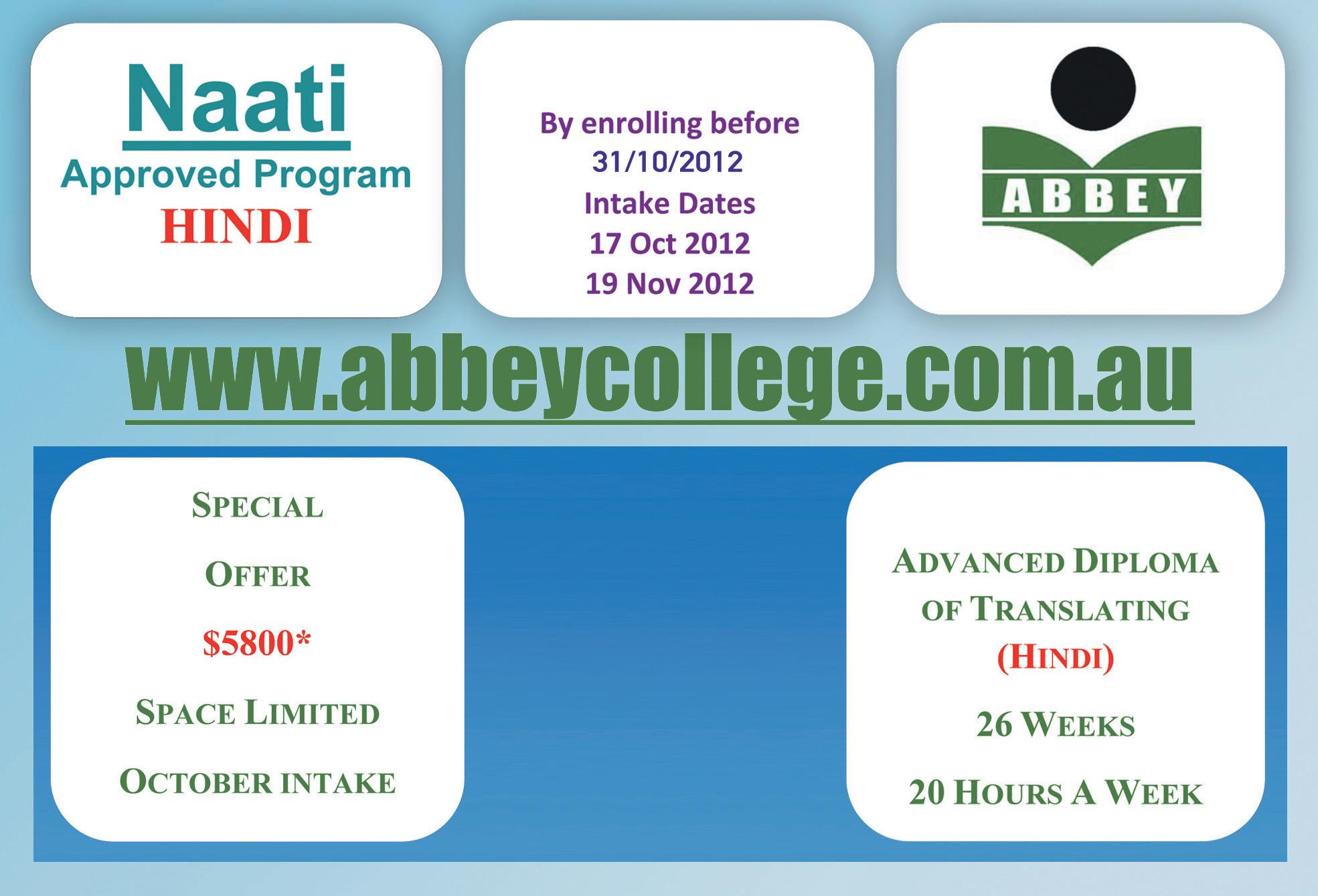


18 SEPTEMBER (2) 2012 www.indianlink.com.au Herbal Hair and Beauty (for ladies only) Specialised from Overseas (Shahnaz Herbal) and Australia • Threading • Hair cutting / Colouring / Streaking • Waxing / Nail / Body treatment • Beauty and Skin care • Simple Mehandi and Bridal Mehandi • Wedding and Engagements packages (Indian brides) • Facials Shop 34, 74 Genesis Building Rawson St, Epping 2121 (Entr y also via Beecroft Rd) Ph: 9868 4040 Mob: 0430 343 565 Monday closed Open from 10:00 am to 6:00 pm Shop 3, 22 Henley Road (inside the Arcade) Homebush West 2140 Ph: 8746 0400 Mob: 0413 062 984 Open 7 days Open from 9:30 am to 5:30 pm Harvinder Kaur (Nenu) Beauty therapist & Hair stylist Look Good Feel G ood *$5800 does not include enrollment fee, material fee and bridging course fee (if applicable) Abbey College Australia reserves all rights to final interpretation Logic Entity Australia Pty. Ltd ACN: 107 680 026 CRICOS: 02658G NTIS: 91136 Enroll now to secure your place Please contact WWW.ABBEYCOLLEGE.COM.AU INFO@ABBEYCOLLEGE.COM.AU Phone: (02) 9212 4470 SAVE $1300
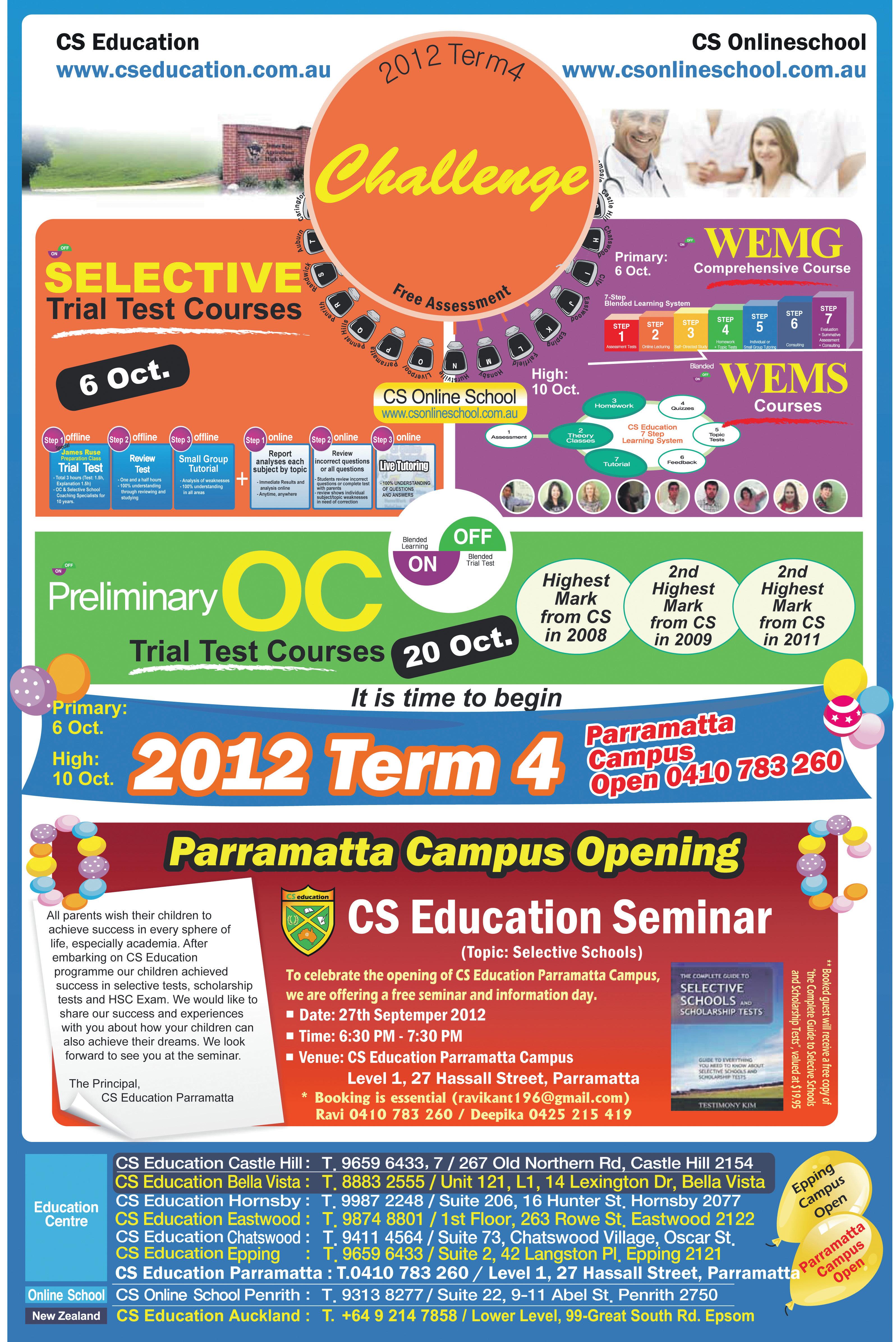
SEPTEMBER (2) 2012 19 NATIONAL EDITION
Premier O’Farrell talks over tea
Afew months ago in its editorial, Indian Link raised the issue of the rare sightings of Premier O’Farrell at Indian gatherings in Sydney. While there were immediate counterclaims by the Premier’s press office, Mr O’Farrell’s actions speak louder than words as, over the past few months, the community has had greater engagement with him. The Premier’s presence at the UIA India Australia Fair was well received, and recently, he requested the Council of Indian Australians (CIA) to organise a community forum for their members and the Indian media through which he could elucidate on government policies and the State government’s engagement with the Indian community.
Following a torrid week of flak with the media weighing in opposing the State government’s cuts to the education sector, Premier O’Farrell, flanked by the Minister for Citizenship and Communities Victor Dominello, and Member for Hornsby Matt Keane, looked remarkably calm as he arrived on 15 Sept at Crown Plaza, Bella Vista for morning tea.
Welcoming the Premier, CIA President Subba Rao Varigonda spoke of the work which the organisation was doing for not only the Indian community, but also the benevolent nature of their activities through the donating of funds to the Queensland Flood relief in 2011 and the Cancer Council of NSW in 2012. He took the opportunity to remind the Premier that not only would it be appreciated if a member of the CIA was part of the Ministerial
Consultative Committee, but also how funding could help the CIA to assist the community better.
The formal presentation of 11 executive committee members was followed by a short video presentation highlighting India’s achievements, those of Indian Australians, developed by Sanjeev Mishra from TV Ozone.
Next, Barry O’Farrell took centrestage and confirmed that the goals of his government are similar to those of the CIA, of accountability, integrity and good governance. He reiterated his mantra of how cultural diversity can be the platform for good growth, and the importance of engaging the multicultural community with their connections in their country of origin, to progress business opportunities.
Talking about NSW’s engagement with India, Mr O’Farrell did acknowledge that with five
Premiers of NSW in five years, the message can be confusing and so it was necessary for him to visit India regularly to create a better brand for NSW. He is looking forward to his forthcoming second visit in two years, in October-November 2012.
Premier O’Farrell then opened the discussion and invited the audience to put forth any issues of concern. What followed was a free-flowing forum for about half an hour, in which the Premier took questions on education cuts in NSW, business opportunities with India, Air India flying to Sydney, among others. He was quite clear that it was necessary to reign in spending in the back rooms of the education department. “Only 1,800 of the 45,000 jobs will be cut, and no front line teachers will go. Education is over 21% of our State budget and we need to manage the costs well so that we can manage our finances well. The cuts of $1.7
billion will be over 4 years,” he revealed. Mr O’Farrell said he was not surprised by the level of anger generated by his decision to slash the education budget. However, NSW had to make up billions in lost GST revenue from Canberra, he said.
The Premier did indicate that there was a need for GST reform at the federal level so that some taxes such as the payroll tax can be reduced, but he did not foresee any progress on this front with the current lack of political will in Canberra.
He also expressed a keenness for Air India to fly to Sydney and through Nihal Gupta, his adviser on all things Indian, they will collectively engage in communication at the highest levels in civil aviation during his visit to India.
For the Indian community in NSW, Mr O’Farrell acknowledged

that there was room to consider a representation from CIA on the Ministerial Consultative Committee, but ruled out any special funding for the organisation other than what was available through the normal channels. “The State budget is very tight and it is difficult to allocate any more monies,” he told the gathering. However, he was keen to address the concerns of the group for a Hindu crematorium and advised them to take it up with the relevant minister. “I will do all I can to help,” he promised.
The morning tea called on request of the Premier allowed a productive interactive forum for the Premier to talk to the community. Such Town Hall style presentations should become a regular occurrence within the local community, for better interaction with their political representatives.
Pawan Luthra
Demo on VFS services well received
The community gets an insight into the working of specific procedures undertaken on behalf of the Indian government
Continuing the Community Familiarization programme from its Melbourne presentation in early September, VFS Global geld its NSW version at its offices in Sydney recently. This programme seeks to reach out to community stakeholders to provide an insight into how consular services are delivered through VFS Global, the service provider authorised by the High Commission of India in Australia to accept applications for specified services. These services include Visa, Passport, Overseas Citizen of India (OCI), Persons of India Origin (PIO), Police Clearance Certificate (PCC) and India Drivers Licence Verification (IDLV).
The Consul General of India (Sydney)Arun Kumar Goel presided over the function and shared his views on how VFS Global and the Consulate work together in sync to ensure ontime processing of applications. He congratulated VFS on the professional work they have undertaken to ensure smooth running of the various activities they perform on behalf of the Indian government. “Turn around times for processing of paperwork are now at excellent levels,” said Mr Goel. “VFS has even provided great facilities at their lodgement offices for people to use such as photographic booths to assist with applications”. He
was addressing a small but select audience at the familiarisation programme. Country head for VFS in Australia, Harpreet Singh also shared the organisation’s ongoing passion for excellence, and their commitment to making the processes simpler and better for the community to access their services. These include doorto-door services with document tracking services and quicker response time by staff at VFS. The audience was taken through a brief presentation based on the core objective of the programme, and then on a tour of the Visa Application Centre to demonstrate how stringent procedures are followed,
and the emphasis on Physical and Information Security. An important part of the programme was to also to inform key community stakeholders how they could assist with passing key information to other members of the community especially with reference to why certain procedures need to be followed (for example, completeness of an application, photo specifications and procedures for applications in an emergency, etc.)
The feedback was positive and community members gathered were pleased that they were now more aware than before of VFS Global’s role and how the organisation played an important
part, although performing mainly administrative tasks.
VFS Global is the world’s largest outsourcing and technology services specialist for diplomatic missions worldwide with over 708 Visa Application Centres located in 83 countries across 5 continents as at 31 August 2012. It serves the interests of the diplomatic missions of 37 sovereign governments. It has successfully processed over 48 million applications since its inception in 2001.
VFS Global serves the High Commission of India/ Embassy of India in 19 countries worldwide.
20 SEPTEMBER (2) 2012 www.indianlink.com.au cO mmu NITysc

SEPTEMBER (2) 2012 21 NATIONAL EDITION
Mountain Majesty
BY AVI CHANDIOK
In April 2012, I embarked on a 9-day trek to see the Annapurna and Dhaulagiri range of mountains in Nepal, reaching heights of 3850m well above the tree line, and into thinning atmosphere where yaks have no problems breathing, but human beings can be stricken with mountain sickness.



I had been in full-flow training for my walk for several months. What had driven me to sign up for this long, hard trek? Had I been deluded by my childhood memories of snow covered mountains that now appeared in my mind as through a smoky haze on a video screen. Or had I been seduced by the evening film night at the travel agent which showed 30/40 somethings in fashionable winter gear glowing with health, joking and laughing, sitting around a heater with snow-capped mountains all around? It had clearly slipped my mind that I was 65 years old, a grand-dad, with a solid history of ill-health behind me. Had I even consulted my doctor before booking?
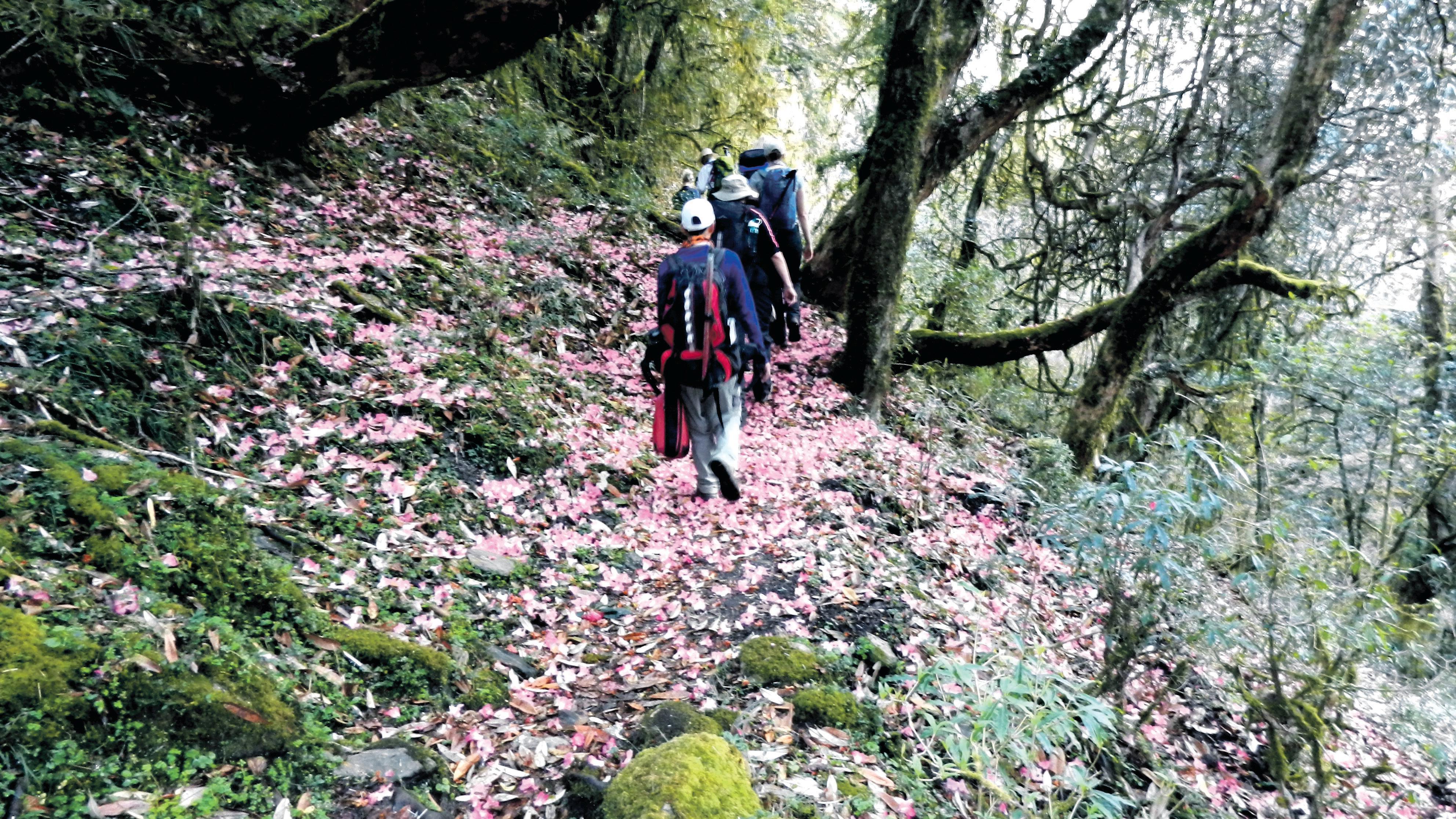
My departure from Australia was fast approaching and with it my fears and apprehension grew. Was I over-estimating my fitness? What if something happened to me on the way? The mountains of Nepal are not exactly equipped with medical clinics and have no ambulances up there. People with health problems have to be carried down by porters and then via jeep to the nearest medical facility, we were told. Memorably, our trek leader said, “Guys, make sure you have your credit card with you and it has plenty of balance.” Apparently because in case of emergencies the helicopter would fly out from Kathmandu only if one’s credit card is clear of transactions. When I phoned my wife to pay off the credit card, she asked if I had gone to Nepal for a walk or to shop!
Our Kathmandu hotel was luxurious, in stark contrast to our accommodation in the coming days. We would carry backpacks with our daily requirements, and porters would carry our kitbags with everything else needed for
the trek. We were instructed to wrap everything in plastic bags, for good reason. It could rain at any time and a wet sleeping bag or wet clothes would be no fun at all.
We woke at 5:45am to catch a flight to Pohkara on Yeti Airlines – yes, I’m not kidding, Yeti Airlines! It might as well have been Buddha Air. At this stage I was seeking strength and not enlightenment so Yeti was nice.
The job of the trek leader is a critical one and our entire safety, well-being, satisfaction and enjoyment was entirely in the hands of this individual. Fortunately, we were blessed with the best, with two other guides joining us in Pohkara. Each day, the porters would collect our kitbags in the morning, and would be at our nights lodging well ahead of us looking as if they had just been for a stroll in the park.
So here we were at the Annapurna range, where the walk was to start, and it didn’t look good because in front of me was this great big mountain range which went on and on and higher and higher… We donned our backpacks and started off, walking uphill for 2½ hours, but that wasn’t bad. We got to Sauli Bazaar with the sound of a fast flowing river in our ears, starting up for Ghandruk the next day.
The trek was headed to Khopra Ridge at 3700m, allowing 6 days to ascend and 3 to descend. The route was circular, so we saw different scenes throughout our walk. We walked over very roughly laid narrow stone paths surrounded by terrace farms along the mountainside. The landscape had a picture postcard sort of look, with the river rushing down the mountain.
On our second day we had 6000 steps to climb, the quickest way to go higher, but definitely not the easiest at an elevation of 1950m. (I had trained for this by climbing up the stairs repeatedly at a 6-storey car park). We climbed over 700m that day, but because of unkind weather, had no view of the Annapurnas. But once the evening sky changed to a pinkish orange, our trek leader assured us of clear skies the next day.
Up before dawn the next morning, the light revealed the silent majesty of Annapurna and Machipuchare, also called Fish-tail due to the shape of its peak. Huge and powerful, right in front of us!

seniors
Trekking the Annapurna may not be everyone’s dream, but the experience is well worth the walk
sun’s rays on the peaks, slowly, very slowly spreading lower while we stood in comparative darkness, and total silence! The sky was deep blue, purple, violet, and then pink. This is what we had walked, climbed, waited and prayed for!
During the remainder of the trek the weather followed a pattern of heavy rain, hail or snow in the evenings and nights, but we had clear skies each morning. We stood in silence before beginning the trek each day, feeling the awesome power of the mountains around us. The peaks rose up like the design of temples and cathedrals which strive to reach higher into the sky. Truly temples to the Gods! White snow like marble walls glinted as if studded with jewels as the sun moved higher.
2500m is a significant altitude from a medical point of view, as at this height the air starts to get thinner and above this height, no matter what one’s level of fitness, Acute Mountain Sickness (AMS) can strike. I knew I had to simply test myself, take the risk and see what happens, and I was now ready.
On our way to Tadapani however, one of our group had to
return to Pokhara due to illness, accompanied by a guide. As we progressed higher, often the only electricity available in the lodges was provided by solar panels. Another consequence of going higher was that prices too became progressively higher!
wind through forests of rhododendron trees in full bloom in April, making the Annapurna region a heavenly delight with entire mountainsides cloaked in hues of pink. We climbed on, soon finding our tracks getting narrower and having to concentrate harder


hundreds of metres
have priority and, for safety, everyone stands close to the hillside watching them go by carrying cages of poultry, gas cylinders and other supplies.
We approached Bayli Kharka at around 3500m, and the air was quite cold. It’s surprising how 6-7 hours of strenuous walking can keep the body warm well into the night. Hot water bottles and cameras too, are placed inside the sleeping bags, as batteries deteriorate rapidly in the cold.
In the lodge before going to bed, we relaxed around a potbellied stove fuelled with wood and dung, with our boots drying out with the heat. Our evening meals were always good, partaken in the light from dim solar lamps or dimmer kerosene lamps.
We had snow, wind, fog, clouds and icy conditions at night, but we could now see Dhaulagiri and the other peaks. The majesty of the mountains is even more awe-inspiring as Dhaulagiri stands massive like a huge fort with lesser peaks around it. We thought this is what we came for,
but the truth was that these views were considerably enriched by the experience of the walk that brought us here. We could see streams of Tibetan prayer flags as they fluttered in the breeze, each flutter a prayer of worship seeking divine Our route took us down from 3500m to Upper Sisitibung at 3000m, and we could see mighty mountain ranges that go on and on as far as the eye can see.
On our final climbing day, regrettably, the second of our party exhibited symptoms of AMS, and had to be taken lower immediately. We carried on, and after a hard walk we were at our goal, Khopra Ridge, best described as a shoulder that extends towards the mountain ranges. It was extremely cold: there was snow on the ground as we walked through snow-laden clouds to the edge of the deepest gorge in the world – the Kali Gandaki river gorge, which is all of 7000m from the Dhaulagiri side.
We woke well before sunrise and I could sense the excitement. The weather had cleared, the moon was still up shimmering in a slight haze, the sky was blueblack and the mountains, all of them from the Dhaulagiris to the Annapurnas were in front of us, close to us. It was a magical sight as the sun’s rays touched the tips of the peaks and very slowly started to peel back the darkness to reveal glittering, silver snow. The colour in the sky changed, but at -6 degrees, I could barely hold my camera. We were spellbound, ignoring calls to breakfast, simply looking. My trek notes state ‘… felt something quite moving/ spiritual. Maybe it’s the closeness and stillness of these colossal peaks and mountains. Absolutely freezing!’
We packed all our belongings, readying ourselves for the descent over three days, beginning from Khopra Ridge along a very
What had driven me to sign up for this long, hard trek? It had clearly slipped my mind that I was 65 years old, a grand-dad, with a solid history of ill-health behind me.
with a pickaxe so we could walk in relative safety. We continued our descent through long, steep downhill climbs until we reached our transport waiting to take us back to Pokhara.
We had crossed many suspension bridges, made friends, stored countless memories and had accomplished what we had set out to do. For me it was a great adventure, and possibly the best thing I had ever done. With this experience I have gained a lot: strength of spirit, a quiet confidence, a sense of private satisfaction. But there was also a sense of something left behind, a little bit of myself perhaps, for which I’ll probably go back some day.
Clockwise from top left : Walking on rhododendron petals
Avi resting in an ancient tree trunk
Annapurna 1, 8091m and Annapurna South 7219m



Freezing nights in tents with Dhaulagiri in the distance
The Dhaulagiris from Khopra Ridge

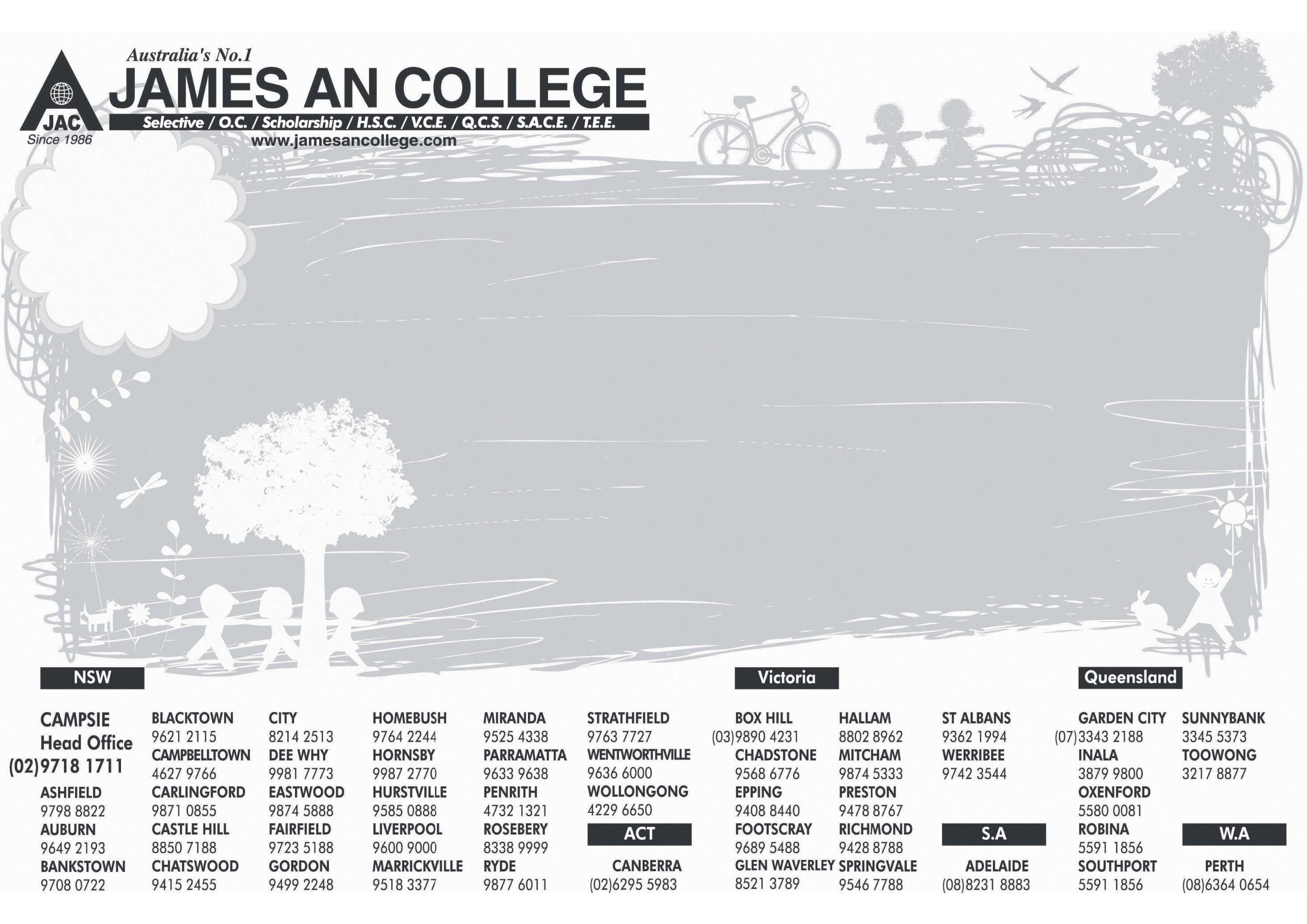

24 SEPTEMBER (2) 2012 www.indianlink.com.au Pay & Enrol by 21st September 2012 and get a 10% discount! ATTENTION YEAR 5 STUDENTS Deadline: 30/09/12 (25% off) LAST CHANCE! who are applying for Selective High Schools WEEK 1 Mon 24th Sept ~ Fri 28th Sept WEEK 2 Tue 2nd Oct ~ Fri 5th Oct 10:00am ~ 3:00pm (Lunch Break 1:00 ~ 1:30pm) 10:00am ~ 3:00pm (Lunch Break 1:00 ~ 1:30pm) Enrol 20 + WEEKS of T h E follo W ing jA m ES A n coll E g E’S E xclu S iv E S p E ci A l SE l E c T iv E S chool S p E ci A l cour SES A nd E njoy 25% di S coun T!!! • JAC Selective English & Maths (SEM) • JAC Selective General Ability (SGA) • JAC Selective Writing Skills (SWS) Deadline: You must enrol before 30/09/12! HURRY!!! TIME IS RUNNING OUT! Take advantage of this special offer now!

SEPTEMBER (2) 2012 25 NATIONAL EDITION
Priyanka’s got talent
A young indian-Australian makes her singing debut with one of Bollywood’s best music directors

emotion into the song to make it soulful,” adds Priyanka.

 BY KOMAL UTSAV JAGAD
BY KOMAL UTSAV JAGAD
Indian-Australian singer
Priyanka Bhanushali has been flying high in Bollywood recently, but she still wants to fly! Confused? This young lady with a melodious voice will be releasing her debut album in November 2012, but she still aspires to taking flying lessons and becoming a pilot.
However for now, the 19-yearold is already making a mark in Bollywood with her singing abilities, having worked on her debut album with Aadesh Shrivastav, the renowned and critically acclaimed music director and composer.
“I am doing the album with Aadeshji; it has eight tracks and will be completed by the end of this year,” says an excited Priyanka. “I have already recorded four solo songs for it and will be doing a duet song each with Aadeshji and Shaan as well. The album is mix genre and includes ragabased classical Punjabi folk tracks, and a couple of club and dance numbers, among others,” she adds. So how did Priyanka get her first break with Aadeshji? “It happened quite suddenly during my visit to India. One of my uncles in Mumbai helped get his contact details and I sent him snippets of my pre-recorded songs. When he heard the songs, Aadeshji immediately wanted to meet me and analyse my voice,” recalls Priyanka. “In amchi Mumbai style he said, ‘Ye ladki fahd dalegi!’ (‘She is going to crack it!’) Surprisingly, on very first day we recorded a Hindi club track verse, which was very unusual for me, as I had never sung a Hindi song previously,” she added.
How did Priyanka cope with a language unfamiliar to her? “I believe music is the language of the world. It’s about music, not the language. It was not very difficult as I was lucky to have people around me who support me to make things easier. I nailed the verse in one hour which left Aadeshji so impressed that he wanted to sign me for his own label,” she says.
“The team was very welcoming and now the studio feels more like a second home to me. They explain every song and its meaning, which helps me add
Of all the tracks, Priyanka admits that she loves Raata Milaya the most. “It was a challenging number and had a Punjabi classical touch to it,” she says. Priyanka spent two weeks in Mumbai recording for the album, and she is due to return there soon, to put finishing touches to the songs.
Priyanka is no stranger to music, as she is currently studying for her Bachelor degree in Music and Sound Engineering from the Australian Institute of Music. Her parents recognised their daughter’s talent at a young age and dad

Anand Bhanushali proudly claims that her first guitar was specially customised to suit her six-yearold hands, as she is left handed.
Priyanka began by learning the guitar and keyboards, and she has come a long way since then. The young lady began singing only at 14, and it is testimony to her talent that in just five years she is already recording an album with Shaan and Srivastava.
Priyanka spends a whopping three to five hours practicing singing every day, and records songs in her studio at home. She studied music since high school and cleared auditions for several Universities, finally choosing the AIM. This young lady takes keen interest in writing lyrics as well as composing songs. Priyanka is like a complete package – the right attitude, confidence, great looks and of course, great singing.
Priyanka’s family moved to Australia in 2004, and her parents have been ever supportive of her talent and career choice. “My parents have always encouraged me to follow my dream and live my passion,” she says. “Priyanka makes our day brighter,” says proud dad Anand. “Her pure soul is reflected in her heart-warming voice, she is our hope and blessing from the Almighty.”
Naturally, a few established artistes have influenced her singing, like Sunidhi Chauhan, Beyonce, Rihanna, Delta Goodrem and Adele. She also likes western commercial music like R&B, hiphop and ballads, and has sung with various gigs here in Australia.
So what’s next in the pipeline for this talented young singer? “Well, plans are on to record an album of western music in my studio, which will have eight songs and basic melodies. The project started recently, and will be a link between Australia and India, taking the connection one step closer,” says
Priyanka who candidly admits that if her singing career hadn’t taken off, she would have made a foray into the modelling world.
“I love the entertainment industry and have always followed fashion shows and competitions like Miss Universe and Miss World. If it wasn’t for my singing success, I
would have chosen to be a model”.
Priyanka’s singing career seems to be already in mid-flight, and we wish her luck. But with all these exciting plans in the pipeline, will she have time to indulge in her hobby of taking flying lessons and piloting an aircraft? You bet! And guess what? She’ll do it!
“The album is mix genre, and includes ragabased classical Punjabi folk tracks, and a couple of club and dance numbers, among others”.
26 SEPTEMBER (2) 2012 www.indianlink.com.au people
priyanka Bhanushali
Priyanka Bhanushali
With Bollywood music producer Aadesh Shrivastav, and the photo he tweeted of her
02 9687 7766
ENTERTAINERS DELIGHT
This is a fantastic opportunity to purchase a Tri level townhouse in a well sought after area and is close to all amenities. This property is simply ready to move into with no work to do at all! This beautiful 3 bedroom 3 level townhouse is situated at the rear of the block. Features: - Living and separate dining with tiled flooring thought-out. 3 extra-large bedrooms all with built-ins, main bedroom (attic style) with ensuite, split air con and walk-in wardrobe. 2 extra-large bedrooms on middle floor with floating floor boards as well as stairs, Lovely gas cooking kitchen, granite bench top, Dishwasher and lots of cupboards to store. Internal Stairs leading to double lockup garage with storage space. Extra Large paved entertaining area, plus more room for the kids or pets to play. This property is great as an investment or a family looking step in to the market. So call FRED on 0414 074 915 now to inspect before it’s too late…..



QUAKERS HILL




This 545sqm block is the perfect opportunity to build your dream house, located on one of the most prestigious streets in Quakers Hill. Walking distance to schools, sporting fields, parks and public transport, it offers the ultimate in superior living for the Quakers Hill area.


Call our office today on 02 9687 7766 for more information.
ATTENTION DEVELOPERS
MONEY MAKING OPPORTUNITY
Prime development opportunity in the heart of Quakers Hill. 1010Sqm of land with 18m+ frontage, this is potential to sub-divide into 2 separate dwelling OR 2 x duplex (STCA). Located on quit street and within walking distance to Train Station, shopping Centre and schools.








This is a prime opportunity, don’t miss out!
So call Fred on 0414 074 915.




• Two great size bedrooms
• Modern kitchen with dish washer
$570,000 $339,000 $510,000 $379,000
• Vast open plan living and dining area with brand new solid timber floors
• Two large balconies


• Single lock up garage
• Security complex
SEPTEMBER (2) 2012 27 NATIONAL EDITION
52a Marion Street Harris Park NSW Thinking of selling or ren T ing?? solD solD solD solD solD solD solD solD solD solD solD solD call now for a free marke T opinion no obligaT ion s ahil s apra 0423 291 280 f re D k hurana 0414 074 915
solD solD
free call ausTralia wiDe 1800 070 921 sYDneY * melbourne * brisbane * aDelaiDe * perTh
Vedic Astrology technique!

Use the astrological influences as the means to meet or to overcome the faults and failures, or to minimize the faults and to magnify the virtues in self. A genuine consultation provides an analysis of career, relationship, health, finance & explores your secrets that you did not know before.
• Astrology Consultation ( Natal Chart &Palm Reading)


• Vastu-Feng Shue for prosperity (home & business)
• Classes- Astrology, Sanskrit & Hindi
• Addiction Recovery,Chronic disease & Managing Stress
• Yoga and Meditation Retreat(Interstate and Overseas)
Acharya Rajan Sharma, a consultant astrologer, Master’s in Vedic Astrology (MA, MPA), Lecturer –University, Sydney. He conducts authentic astrological consultation, classes, lectures & workshops. Consultation is available through face to face, phone, Skype, postage and E-mail. ABN: 71906442070

Mob: 0434 570 379
Moorebank and Marrickville
fivedimensionvedic@yahoo.com
28 SEPTEMBER (2) 2012 www.indianlink.com.au
your life; receive a powerful,
Improve
www.astrospiritual.com






SEPTEMBER (2) 2012 29 NATIONAL EDITION • LR-MR-HR-HC LICENCES • NO RTA DRIVING TEST REQUIRED! • ADVANCED DRIVER TRAINING • ONE ON ONE TRAINING ONLY • BUS DRIVING AUTHORITY SINGH’S TRUCK DRIVING SCHOOL FOR BOOKINGS CALL 0433 572 723 JATINDER SINGH 0433572723 Book truck and bus driving authority together and get $100 off the full price. *One day courses are available safety is our priority LICENCE NUMBER: 012225 GET YOUR TRUCK DRIVING LICENCE NOW. No driving test to obtain bus driver authority! Takeaway for Sale Walk in/ walk out Long lease Low rent Premium shopping centre $69,000 or near offer Serious Buyer only Call on 0401266140
Trinamool quits UPA, Congress reaches out to Mamata
West Bengal Chief Minister Mamata
Banerjee recently withdrew her Trinamool Congress party’s support to the UPA government, but both she and the Congress indicated a last minute compromise may still be possible.
Banerjee announced the unexpected decision after a three-hour meeting of party leaders in Kolkata, four days after the central government unleashed a wave of reforms aimed at kickstarting a stagnant economy.
Adding to the central government’s woes, ally DMK announced that it would join a nationwide strike soon against FDI in retail and the hike in diesel prices.
At her aggressive best, Banerjee told the media that Trinamool’s six ministers -- one cabinet and five ministers of state -- would submit their resignations to Prime Minister Manmohan Singh soon.
“We can’t be a party to anti-people decisions. We had expected the government would roll back their decisions. But they have decided against it.
“So we ... are withdrawing our support from UPA-2,” she said, speaking mainly in Bengali.
“This government has lost its credibility,” she added.
However, Banerjee gave a lifeline to UPA, saying she would reconsider withdrawal of support if the government took back its decision to allow foreign direct investment (FDI) in multi-brand retail, cut the hiked diesel prices by Rs.3, and raised the number of subsidised cooking gas cylinders each household can get in a year to 12.
It was the most serious hiccup yet in the
Trinamool’s three-year-relationship with the government that had seen Banerjee stepping down as the railway minister to form the government in West Bengal, and forcing her successor Dinesh Trivedi to quit last year for hiking fares.
Simultaneously, the Congress said that it still viewed the Trinamool as a valuable ally.
“Till a final decision is taken, we consider the Trinamool a valuable ally,” Congress general secretary Janardan Dwivedi said.
The Trinamool, with 19 members in the 545-seat Lok Sabha, was the second largest constituent in the multi-party UPA.
This would make the UPA more dependent on the Samajwadi Party and Bahujan Samaj Party, which extend outside legislative support to the UPA regime.
Within minutes, the Bharatiya Janata Party (BJP) asked the government to prove its majority in the Lok Sabha.
Marxist leader Sitaram Yechury suggested that Banerjee could still go back on her decision, and was supported by Rashtriya Janata Dal leader Lalu Prasad.
At her press conference, Banerjee lashed out at the Congress, saying the FDI decision was unveiled to divert attention from the coal blocks allocation controversy involving the government.

She accused the Congress of acting unilaterally, without giving respect to its allies. “We cannot tolerate this.”
“If FDI is allowed in retail market, where will the retailers go? There will be a disaster,” she said.
Banerjee said she spoke to UPA chairperson Sonia Gandhi four days back, requesting her to persuade the government to roll back the decisions on FDI, diesel and cooking gas cylinders.
“But nothing of that sort happened.”
The Trinamool chief demanded to know why the government was not bringing back the huge volumes of black money allegedly stashed by Indians in foreign banks.
“Somebody has to bell the cat,” she said, explaining her decision.
A day after the government announced its economic decisions, Banerjee had declared that her party would take “hard decisions” if these were not taken back. Her 72-hour deadline ended on September 17.
The Trinamool-UPA break-up comes just before a nationwide strike called by all opposition parties against the economic decisions.
Telangana issue again rocks Andhra assembly
The Telangana issue rocked the Andhra Pradesh state assembly once again with Telangana Rashtra Samithi (TRS) stalling the proceedings and demanding a resolution for carving out a separate state.
Speaker N. Manohar adjourned the house for half-an-hour amid noisy scenes and heated arguments among members. He later held a meeting with floor leaders of all parties but it failed to end the deadlock as TRS, Bharatiya Janata Party (BJP) and CPI insisted on a resolution on Telangana while main opposition Telugu Desam Party (TDP) wanted debate on electricity shortage and ‘tainted’ ministers.
As soon as the house met for the day in Hyderabad, the speaker announced that he was rejecting adjournment motions moved by TDP, TRS and other parties on various issues. The TRS members rushed to the speaker’s podium and insisted that the resolution on Telangana be taken up immediately.
In an attempt to find a solution, the speaker sought the views of various parties on the issue. TRS floor leader E. Rajender demanded that the assembly immediately pass a resolution urging the centre to take immediate steps for formation of separate Telangana state.
When Lok Satta leader Jaiprakash Narayan told the house that IBM employees had left Hyderabad for Bangalore due to the protests over Telangana, TRS member Harish Rao raised an objection. There was heated argument between the two.
Two ministers Danam Nagender and Mukesh Goud disrupted the proceedings when independent member N. Janardhan Reddy was speaking in favour of a separate state.
Amid the din, the speaker adjourned the house and called all floor leaders for a meeting in his chamber. However, the meeting failed to find a solution.
The first day of the monsoon session had also witnessed uproar over Telangana. The TDP and other opposition parties are already agitated over the government convening only a five-day session. They feel the duration is not adequate to discuss people’s problems.
‘Chewing betel leaf may help fight cancer’
Chewing paan or betel leaf could help fight a form of bone marrow cancer, a group of Indian researchers say.
A molecule derived from betel leaf may be beneficial to patients suffering from a cancer in which the bone marrow makes too many white blood cells and the body refuses to respond to common drugs, said a study by scientists in Kolkata and Mumbai.
An alcoholic extract of the betel leaves helps patients suffering from chronic myeloid leukaemia (CML) - the most common form of leukaemia in adults in India - holding out hope of improved treatment.
The research was carried out by the Indian Institute of Chemical Biology (IICB), the Institute of Haematology and Transfusion Medicine, Kolkata, and Piramal Life Sciences, Mumbai.
“We have conducted a study and seen that the compound hydroxychavicol (HCH) is the major component of the alcoholic extract of the betel leaves and it might contribute, at least in part, to the observed anti-CML activity of the leaf extract,” said Santu Bandyopadhyay of the department of Cancer Biology and Inflammatory Disorders at IICB, an institute under the Council of Scientific and Industrial Research. The research was based on a 2011 report in journal Frontiers in Bioscience (Elite Edition).
According to the study published this year in the Cancer Science journal - the official journal of the Japanese Cancer Association, HCH and its analogues not only induced killing of the cancerous CML cells but also led to the death of the drug-resistant cancer cells with minimal harm to normal human peripheral blood mononuclear cells (PBMC).
PBMC are blood cells that are an important component of the immune system.
CML is principally an adult disease with a yearly incidence of one in 100,000 in India.
Men are affected more often than women. The slow-progressing blood and bone marrow disease usually occurs during or after the middle age, and rarely occurs in children. The leukaemia cells can build up in the blood and bone marrow. So there is less room for healthy white blood cells, red blood cells and platelets. When this happens, infection, anaemia or easy bleeding may occur.
So far, the drug imatinib has been used successfully to treat CML, but mutations have made the leukaemic cells unresponsive to the medicine.
None of the available approved drugs has been effective in dodging the responsible mutation - called T315I.
According to the report in Frontiers in Bioscience (Elite Edition), the alcoholic extract of paan leaves causes the imatinibresistant cells to undergo a self-destructive process called apoptosis.
The extract also shows activity against T315I mutation, the report said.
India’s spirituality attracts youth diaspora
Over 35 overseas youth of Indian origin are on a three-week visit to India to know about their parents’ and grandparents’ homeland, and spirituality of India has been the greatest attraction for them.
It is this “balance in materialistic pursuits and search for inner happiness” that they will take back to their present country and share it with their other diaspora friends and relatives.
The 36 youth, in the age group of 1826, are from Fiji, South Africa, Suriname, Malaysia, Sri Lanka, Israel, Slovak Republic, Trinidad and Tobago, Mauritius, Iran and New Zealand and have been in India since Aug 25.
They are here under the 21st Know India Programme (KIP) of the ministry of overseas Indian affairs (MOIA). The last KIP
n n EWS
Photo: AP 30 SEPTEMBER (2) 2012 www.indianlink.com.au
Leading Indian artist Subodh Gupta exhibits his latest work Ray 2012, at the Shanghai Jingan International Sculpture Biennale, in Shanghai, China.
was held in April-May.
“India’s spirituality is what caught our attention the most. We got to visit a lot of temples and religious shrines from all religions and I could understand the unity in diversity that is talked about in India,” said Sameer Chand, an analyst at the Reserve Bank of Fiji, at the valedictory event of KIP held at MOIA at Akbar Bhavan in New Delhi.
“I will take this spirituality home and share it with all my family and friends in Fiji,” Chand, 24, said.
His view was seconded by Adi Nissim from Israel, who participated in KIP along with her twin sister Shay Lee Nissim.
“I really loved the spirituality that is part of the Indian society and culture. Every individual here seemed spiritually inclined,” Adi, 23, said.

Shay Lee quickly added: “Israel is completely westernised and people there are after material prosperity. Here in India, even if people want to earn money, they maintain a balance between materialist pursuits and search for inner happiness. The smile on their faces says it all.”
Chand and Nissim are part of the 15 male and 21 female visitors from 11 countries participating in KIP held three times annually.
His views were echoed by other youngsters, who said this visit to India was a dream come true for them, having heard several stories about their ancestors’ homeland from their parents and grand parents.
The KIP participants also got an opportunity to meet Minister of Overseas Indian Affairs Vayalar Ravi, who asked all of them to come visit India again after they have made their respective careers and also to pass on their knowledge of India gained from the visit to their friends and relatives, as also their next generation.
“But, as you are all now citizens of the countries you live in, your first loyalty is to that country and hence do your nations proud. Your origin will still remain Indian and your success will be India’s success,” said Ravi.
He also apprised the participants about the Overseas Citizenship of India (OCI) scheme and encouraged them to take advantage of it.
“The KIP programme is for youth of Indian origin from around the world to see India, know India and mingle with families in India and reinvent the idea of India and Indian culture,” Ravi told the group at a reception hosted for them.
The programme for the overseas youth took them to Tamil Nadu where they experienced the culture of south India, and visited key temples in Chennai, Kanchipuram, Mahabalipuram, Pondicherry, Kumbakonam, Tanjore, Chettinad, and Madurai.
During the stay in Delhi, the group was also exposed to India’s progress in economic, industrial, education, science and technology, administration, communication and information technology fields, apart from culture, through interactions with personalities in these sectors including the capital’s Lieutenant Governor Tejendra Khanna and Chief Election Commissioner V.S. Sampath.
They also visited Doordarshan, Indian Council of Cultural Relations, Indian Institute of Public Administration and Jawaharlal Nehru University.
Indian American director’s thriller wins another US award
9 Eleven, a Bollywood-style thriller by Indian
American director Manan Singh Katohara, has won the Best Narrative Feature Award at the 2012 Third World Independent Film Festival (TWIFF).
The San Francisco festival celebrates established and emerging filmmakers from third world countries and filmmakers from developed countries whose topics deal with issues of the developing world.
The film, which earlier won the Best Feature and Best Director awards at the 2012 World Music & Independent Film Festival (WMIFF) in Washington, is set for its West coast premiere soon.
Written and directed by Katohora, who also won the 2012 Rising Star Award for the film at Canada International Film Festival, the fast paced thriller with undertones of terrorism, poses the question how does one survive collectively in meeting the growing phenomenon of terrorism head on.
It portrays the life of 11 people terrorised to the core by an unknown entity in an unfamiliar place. Each individual is petrified and is hesitant to talk or take each other into confidence for one simple reason: The fear of the unknown!
Earlier 9 Eleven won the Best Feature Film award at the Peoples Film Festival (TPFF) in New York showcasing extraordinary films using different media formats.
Silicon India has listed it as one of the 10 outstanding movies by Indian American filmmakers.
Designers capture Lord Ganesha’s spirit with jewellery, clothes
For the auspicious occasion of Ganesh Chaturthi, apparel and accessory designer brands have launched exclusive Ganesha collections in an attempt to capture the festive spirit.
From traditional outfits preserving the cultural essence and mood of the season to jewellery inspired by Lord Ganesha, there are varied options for all the fashionistas who want to spruce up in traditional wear.
Designer Indira Ghosh Baikerikar has launched her latest line of traditional outfits, in which she has used Rangoli colours in a creative fusion. Her designs include lot of batik crack prints on pure silk with metal disc
work on the neckline, and she has teamed such kurtas with net leggings and beautiful dupattas. Colours like cream, red and orange rule her palette.
“The theme of the collection is ruled by crack prints and stripes, giving it a very edgy texture. The main inspiration is creative use of Rangoli colours for retaining essence of Ganapati festival. The collection is meant for all the ladies who are looking out for something exclusive and timeless. Fabrics used are rich in quality, giving it femininely royal look,” said Baikerikar. The collection is priced at Rs.10,000 and above.
Another Mumbai-based accessory designer, Sannam Chopra has created simple pendant necklaces with Ganesha motifs.
“The whole idea behind bringing this accessory line is to provide the youth a piece of jewellery that can be worn every day and doesn’t cost a fortune - a neck-piece which is affordable and yet has a stylish look. Drawing the attention to detailing of the designs, it will come across as very young and vibrant,” said Chopra.
The designer says the collection is meant for all the youngsters who want to add ethnicity to their personality, and is priced at Rs. 1,200 and above.
“The accessories are very fresh and quirky. They are mainly designed for youngsters between the age group of 15 to 25 years. The simple and elegant looking crystals accentuated on Lord Ganesha-inspired metal pendant preserves the festive mood and youth factor at the same time,” she said.
Apala Innovative Jewelry, AS Motiwala Fine Jewellery and Mahesh Notandass are also some of the jewellery brands which have also paid tribute to Lord Ganesha through their collections.
Dwyer and Sardar will be face of Hockey India League
Australia captain Jamie Dwyer and India star centre-half Sardar Singh were unveiled as the brand ambassadors of the Hockey India League that is scheduled to start Jan 5.
In New Delhi, Hockey India secretarygeneral and the league’s chairman Narinder Batra said he was excited to have two of the best players of the world as the face of the six team league.
“It is an immense honour for Hockey India League to have players of the calibre of Jamie Dwyer and Sardar Singh as Brand Ambassadors. We are moving full speed towards establishing Hockey India League as the world’s biggest hockey league,” said Batra.
The enormous interest among players, both at home and overseas, should give everyone a fair idea about the quality of contests that we will see in the Hockey India League. The League will help players across the world and raise the standard of our game,” he added.
Union Minister for Parliamentary Affairs Rajeev Shukla, who is on the advisory council of the league, said it was significant that the International Hockey Federation (FIH) has created a window for the league.
“It is our collective responsibility to ensure hockey regains space in the collective consciousness of the nation,” he said.
The 33-year-old Dwyer said it was a privilege for him to be a part of the league.
“I have always enjoyed playing in India and have looked to make hockey an attractive proposition for the youngsters,” he said.
“Hockey India League is an excellent step in that direction not only for the Indian players but also for those from elsewhere. More importantly, the widely-broadcast League will give our sport a wonderful profile and I am delighted to be a part,” he said.
Sardar said he felt humble at being given the enormous responsibility of being a brand ambassador.
“From the Indian players’ perspective, I can say that on the one hand the League promises to ensure financial security while on the other, many young Indian players will get great exposure playing with and against some of the world’s best hockey players,” he said. “It will give them a platform to make a claim for the Indian team while increasing their confidence.”
Sahara India, Jaypee Group, Patel-Uniexcel Group and Wave Group have already taken up the Lucknow, Punjab, Ranchi and Delhi franchises of the league. The names of the other two franchisees will be made known well before next month’s players auction.
IANS
Photo: AP SEPTEMBER (2) 2012 31 NATIONAL EDITION
Indian collectors Pabsetti Shekhar (sitting left) and his wife Pabsetti Anuradha perform ritual prayers to idols of the elephant-headed Hindu god Ganesha at their home in Hyderabad, India, during the festival of Ganesh Chaturthi. Shekhar, 50, holds the largest private collection of 12,022 Ganesh idols.
Top honours for Indian Link at Multicultural Media Awards
Winning three prestigious awards at the inaugural media Awards, indian link stands tall as an acknowledged herald of the subcontinent community
BY USHA RAMANUJAM ARVIND

In what is clearly a significant milestone for community journalism and more importantly Indians down under, ethnic newsgroup Indian Link has bagged three of the nine awards at the inaugural Parliament of New South Wales Multicultural Media Awards.
The high-calibre media group took the top honours in the Editorials/News Reporting, Online Innovation in News, Blog or Website, and its publisher Pawan Luthra was named Multicultural Journalist of the Year.
Australia’s Foreign Minister Bob Carr presented the awards at a gala dinner on September 14. Winners in nine categories were selected from among 132 entries received from all over Australia.
The categories included, besides the three won by Indian Link, Contribution to Social Inclusion and Multiculturalism, Coverage of Indigenous Affairs, Community Affairs in Australia,
Community Affairs Abroad, Multicultural Photographer of the Year, and Investigative Journalism.
Pawan Luthra shared the big one, the award for Multicultural Journalist of the Year, with Majida Abboud of SBS Radio.
The judging panel included senior academics in media studies, mainstream journalists, media representatives, councillors and senior members of ethnic communities.
Initiated by Member of Legislative Council Shaoquett Moselmane, the awards are the first of their kind in Australia.



Addressing the special invitees, Moselmane noted, “Since the first multicultural newspaper Die Deutsche Post was published from Adelaide in 1848 and first Chinese paper Guangi Huabao in 1894, ethnic media has contributed extensively to the Australian way of life.”
He added, “Today multicultural media has diversified across print, radio, web, TV, satellite and all forms of social media. There has however been no standalone award to recognise this substantial body of work. These papers and their pioneering journalists have passed into history with little or no
recognition, no reward and no hall of fame.”
“Tonight we break that drought and celebrate the beginnings of spring for multicultural and indigenous media in Australia,” he declared. “Your ingenuity and spirit has left no stone unturned. With the capacity to bring news and events to every multicultural household like never before, your dedication is admirable.”
Speaking to this reporter, chief guest Foreign Minister Bob Carr later said, “I was proud to be a part of the first Multicultural Media Awards. It is great to see multicultural media getting the attention it deserves. I believe it is essential to Australian democracy.”
“I congratulate Indian Link for winning three Awards on the night,” he added. “Journalists representing those of Indian ancestry are ambassadors for Australia to the Indian community. By sharing cultural ideas through journalism, you are helping to create the overlap of cultures that makes up Australia’s national identity.”
ABC correspondent and one of the members of the judging panel, Liz Foschia said that she was impressed by the submissions and range of
32 SEPTEMBER (2) 2012
Cov E r story
Shaoquett Mosselmane with Indian Link team (from left) Danielle Cairis, Nitika Sondhi, Rajni Anand Luthra, Vivek Trivedi and Pawan Luthra
topics covered by ethnic media
have a strong multicultural media to inform their local communities about issues of particular concern to them, but also to cover wider events with a different perspective,” she noted.
“There were good examples of quality journalism that would not have been out of place in Indian , in particular had made a special effort with its entries and that is reflected in the number of
As the only speaker on the night from amongst the awardwinners, Pawan addressed the audience and spoke about the specific pressures faced by the multicultural media such as the constant struggles for funding. Yet it was his story about Indian that touched a chord.
Pawan recounted the incident from a few days ago, when a radio listener rang him to say thanks. “You’re keeping my mother alive,” the listener told Pawan. Apparently, his mother, a nursing home resident, is an avid listener, turning on the radio as soon as she wakes in the morning as her only regular means of contact with a Hindi-
“Three awards in one night

Pawan also noted in his speech, and thanked his team, who work very hard to see that a quality product goes out every fortnight in press and every day on the airwaves. Seven full-time staff at Indian Link oversee the work of no less than sixty newspaper contributors across the country, and a dozen radio broadcasters in Sydney. Each of these individuals, Pawan feels strongly, has ownership of the awards the company has received this month.
A journalist with over two decades of experience in both Australia and India, Luthra has certainly raised the bar in community journalism, since he and his wife Rajni founded Indian Link in 1994.
Like most migrant success stories, theirs has been founded on humble beginnings. It is a truly inspirational tale born of a passion to excel and commitment to its cause.
From a small 24-page black and white newspaper to glosswrapped monthly editions in all major metros besides fortnightly editions in Sydney, with a print run of 44,000 copies and a readership of 200,000 per edition, a 24-hour radio station, e-paper and live website, Indian Link has grown to become not merely a trusted media house, but a forum for the community.
“Our desire was to start
a community newspaper of substance, seeking out Indian links in Australian life,” explained Indian Link editor Rajni Luthra, looking back nostalgically on those start-up years. Rajni gave up a career in psychology to build the Indian Link brand.
“It was definitely not an overnight success,” she confessed. “We did everything, from content generation to delivery, by ourselves. But as the Indian community in Sydney grew, so too did the interest. With a strong focus on quality and authenticity, readers became addicted to the features, the stories of other migrants settling into life here, even the Bollywood articles. Growing in scope and influence through various forms of digital and print media, Indian Link is now a vehicle for telling the Indian story in Australia.”
Both through the flagship newspaper and diversified media portfolio, Pawan Luthra has established himself as the voice of the community not only within, but also in the mainstream. It is to his credit that he is repeatedly asked to speak on behalf of Indian Australians at mainstream gatherings and media panels, commenting on current affairs such as the uranium issue, the international student fracas and the Delhi Commonwealth Games crisis, and also on Indian traditions and beliefs.
During the 2010 Commonwealth Games, Luthra was invited by Foxtel to commentate on the opening ceremony, the first ethnic journalist to do so on mainstream TV. His insightful comments on the opulent pageant helped facilitate crosscultural understanding.



Luthra’s contributions have been recognised not only through the Multicultural Journalist of the Year award but also for his thought stimulating editorials that have effectively bridged the gap between his country of birth and adopted land. Always in tune with the pulse of the community, his discerning and candid style of writing has a loyal readership base and is repeatedly endorsed by community elders.

Encompassing a range of current and topical issues, including local politics, health and education, state of economy, thorny IndiaAustralia relationship and burning community issues, his powerful editorials represent the voice of reason while fearlessly confronting the hard truth.
Pawan’s notes on community affairs have been of particular interest to those observing
the community from outside, including demographers, political analysts and social historians.
The award for Online Innovation is equally a welldeserved one, for Indian Link has always embraced technology wholeheartedly.
“We have been on the cutting edge of technology since our inception,” commented Luthra. “With our most recent innovation, the Indian Link Radio App for smart phones, the 24/7 Radio station has gone global. It can be downloaded free from iTunes and allows people the freedom to listen to live radio.”
“The application has already clocked over 5,500 downloads and is growing everyday. With the Indian diaspora worldwide currently estimated at over 30 million, the Australia-developed radio app has far-reaching potential,” Luthra observed.
“Listeners not only in Australia but also in New Zealand, India, US, Canada, Dubai, even Afghanistan and Korea, are enjoying our pick of Bollywood music, and participating in talk back and discussions live on air,” he added.
A ‘family’ feel has inexplicably been created out of the Indian Link Radio aura: regular listeners ‘know’ each other, without ever having physically met, as callers ring in; milestone birthdays are celebrated; old friends have found each other; get-well-soon wishes are shared at bouts of ill-health; even marriages have resulted amongst listeners. Babies have been born as expecting mums have taken the radio with them to the maternity ward (welcome, baby Om Ganwani of Melbourne), and listeners have even mourned together the loss of one of their own (RIP, Col Kler of Sydney).
“Our listeners will happily vouch for this community feeling,” Pawan said, adding, “I feel fortunate indeed to have created this forum that has connected people at such a level.”
Only last year, Luthra won the NSW Government’s Community Harmony Award for facilitating and promoting social cohesion and understanding between the communities of the Indian subcontinent and the broader NSW community.
Not those to rest on their laurels, the Luthras are already exploring new pastures to build and extend on the existing portfolio. For Indian Australians, this can only mean fresh pathways for better integration and a stronger public voice.

SEPTEMBER (2) 2012 33 Romeo Cayabyab The Filipino Australian COVERAGE O f COMMUNITY AffAIRS A BROAD Wing Yam Lee Sing Tao Daily CONTRIBUTION TO S OCIAL I NCLUSION AND M ULTICULTURALISM Lina Lee Top News COVERAGE O f I NDIGENOUS AffAIRS Gerry Georgatos National Indigenous Times E DITORIAL / N E wS R EPORTING Pawan Luthra Indian Link I NVESTIGATIVE R EPORTING / fEATURE wRITING Gerry Georgatos National Indigenous Times M ULTICULTURAL P HOTOGRAPHER O f THE YEAR Oi Ling Lee Sing Tao Daily O NLINE I NNOVATION IN N E wS B LOG OR N E wS wEBSITE D ESIGN Indian Link
Photo: Herbert Sunni
A world fragmented by legalities
does the world need universal international laws that are applicable to all nations?
BY NOEL G DE SOUZA
The world might have become global in many respects: goods, services and people move across borders as never before; but individual nations and states have their own laws which fragment the world. Every Australian, American and Indian state has its own laws which may be radically different from the others.
Not all nations have transparent legal processes. Courts may not be open everywhere. One may not even know what is being tried in a court. Whilst China has become well-known for this, it can also happen in democratic countries under emergency laws.
President Obama has called upon China to play by the same rules which apply to everyone else. That would be just and proper, but then the question arises: whose rules? International conventions often fix the norms for such conduct. There are many such conventions to which not all nations are signatories and often some important nations like the USA, Russia and China might choose not to be involved.
Vociferous demonstrations in India against the Norwegian Government resulted in an ultimate solution to the problem. The children were sent to India.
There has been very recently a state of panic in the northeast of India, disseminated through the use of calumnies spread through social media. This caused people from the northeastern region of India living in other parts of India, to move back to their original areas to protect their families.
There is strong evidence that social media has been used to foment the unrest, pointing to foreign sources. The picture was confusing. There were appeals from employers and others for people from the northeast to remain in their present jobs and homes. The Union Home Secretary RK Singh blamed elements in Pakistan for disseminating “inflammatory and objectionable” information about incidents of recent violence in Assam

Europe, beset by financial crises is currently behaving as if it is still the world’s law maker, unbelievably!
The geography of the northeast area makes it difficult for India to hold onto it, as it is linked to the rest of India by a very narrow land corridor. The area borders Bhutan, China (which claims a large chunk of it), Bangladesh (with its constantly changing river courses), and Burma. China often refuses normal visas to people from the area, to whom it only gives stapled visas.
The tribulation of WikiLeaks founder Julian Assange in his desperate bid for political asylum in the Equadorian Embassy in London has opened the world’s eyes to the local nature of laws in a globalising world.
Who sets the world’s laws? For a long while it was Europe, particularly the European colonial powers. Europe, beset by financial crises is currently behaving as if it is still the world’s law maker, unbelievably! India got a taste of this when two Italian security men on a cruise liner shot and killed two Indian fishermen whilst sailing along the Kerala coastline.
There has been very recently a state of panic in the northeast of India, disseminated through the use of calumnies spread through social media.

The northeast area is a mix of a variety of languages, tribes and religions. Seven states have been carved over the years from the original Assam. States like Nagaland and Meghalaya, both dominantly Christian, have special laws to safeguard local interests. In the residual Assam there is ongoing agitation for further autonomy and a demand for a state of Bodoland. Assam has 17.2 million Hindus, 8.2 million Muslims and 0.98 million Christians (last Census figures). This is very unlike the rest of India.
The Italian Government adamantly claimed that it was their right, and not that of India to try those men. The Kerala Government then dug in its heels. The security men have been held for trial for murder despite a large amount of compensation having been paid by the Italians to the dependents of the two victims.
About the same time an Indian couple in Norway were deprived of their two children by the Norwegian welfare authorities as, it is alleged, the parents were feeding the children by hand and sleeping with them in the same bed. There was no transparency in the case under some provisions of Norwegian law.

From Bangalore alone, India’s IT hub, 30,000 people are said to have moved to their original northeast home areas by special trains to Guwahati in Assam. The panic having been proven to be social media generated and grossly exaggerated, these people are now moving back to Bangalore.
The trouble which ensued should have been foreseen and steps should have been taken to prevent it. Measures are being taken in several parts of the world to deal with cyber wars which India, with its cyber expertise, is well placed to counteract. These should have been put in place well in advance for such an eventuality. Perhaps the lesson will now be learnt. Anyone migrating to a new country or state must learn its local laws. So must any company intending to do business there.
34 SEPTEMBER (2) 2012 www.indianlink.com.au
opinion

SEPTEMBER (2) 2012 35 NATIONAL EDITION
The holy grail of perfection
Striving for perfection will be futile unless we recognise and accept the faults in ourselves.
which is commendable, but wanting to do it instantly.
 By SAROJA SRINIVASAN
By SAROJA SRINIVASAN

These days, the chasing of perfection is almost a religion in itself. Self help books abound and just about everything you can think of is given a thorough workout with the aim of perfecting it. It is almost reaching the point of obsession with many people in our society. Even the smallest undesirable aspect of their life cannot be allowed to prevail, whether it is physical fitness, appearance or material possessions. They carry self-improvement efforts to the extreme. Added to these efforts is an undeniable urgency which means that the problem is not in just wanting to improve oneself,
The very nature of selfimprovement implies the lack of perfection. Many individuals are constantly critical of themselves to the point that they do not acknowledge their competence or achievement, however obvious it may be to others. They seek selfimprovement strategies to change even trivial aspects of their life. Self-acceptance requires a careful close look at oneself, warts and all. It is having the capacity and willingness to look at both the positive and negative qualities we possess with equanimity.

We have to be open and willing to accept drawbacks as willingly as the more desirable aspects of ourselves. This will require time, patience and a willingness to persevere. It cannot happen overnight. When things that we find hard to accept repeatedly
present themselves in our life, we need to question and seek an understanding. This could very well lead to a realisation that often what we have attributed to others as being the cause of our unhappiness, failure or misfortune in fact, begins within ourselves. When this understanding is not reached with feeling and true acceptance, it is but at the surface level and cannot lead to substantial change.
The holy grail of perfection is not out there. We are intrinsically perfect. It is just that the veil of ignorance about our true nature conceals itself from us. In chasing perfection as a goal in many self-created aspects of our lives, we ignore the awareness of the true nature of being a human being first. A being in whom the fundamental values of truth, compassion and loving kindness are in abundance. The
differences in our individual makeup, achievements, abilities and opportunities is what makes us different, but also unique. Some of these are changeable, yet others are not. We often come across people who are so immersed in getting everything perfectly right that they are oblivious to the stress they may impose on others around them and on themselves. For the perfectionist, no imperfection however trivial is tolerable in
It is important that we maintain the all-important quality of acceptance, have the courage to change what we can and develop the wisdom to know what is changeable and what is not. This should be a daily practice. As the serenity prayer so beautifully illustrates, God or The Higher Power Grant me the Serenity
To Accept the things I cannot change The Courage to change the things I can And the Wisdom to know the difference.
36 SEPTEMBER (2) 2012 www.indianlink.com.au
PSYCHE 100%
SPRING HOLIDAY COURSE 24th
Time: Mon ~ fri, 10:00am – 3:00pm
Subjects: English, Mathematics, G.A
Time: Mon ~ fri, 10:00am – 3:00pm
Subjects: English, Mathematics, G.A
Time: Mon ~ fri, 10:00am – 3:00pm
Subjects: English, Mathematics, G.A
Time: Mon ~ fri, 10:00am – 3:00pm


Subjects: English, Mathematics, G.A
O.C. Trial Test Course
38 weeks (3 weeks Revision)
To: Current Year 3 (2013 Year 4)
Subjects: English, Maths, General Ability
Course format: 2 hrs 30 mins (Test: 1 hr + Solutions: 1 hr 30 min)
O.C. Trial Test Explanation of Answer and Computerised Report
Helping Class Repeat Monitoring of Progress and Performance
O.C Super Class
SEPTEMBER (2) 2012 37 NATIONAL EDITION 09 8774 6160 Hallam YEAR 3 Course Revision –Introduction to Opportunity Class Period:
15th Oct 2012~ 20th July 2013 (38 weeks)
YEAR 4 Course Revision YEAR 5 Selective School Preparation
7 – 10 High School writing
YEAR
September 2012 – 5th October 2012

38 SEPTEMBER (2) 2012 www.indianlink.com.au
Hair &Beauty Care
Open from Wednesday To Saturday • 11am to 6 pm Thursday till late.
3/46 Edgeworth David Avenue. Waitara 2077 (Close to Hornsby & Waitara station)
Pamper package $ 69
By appointments only 0404 355 146
Gold Facial, Head massage, Back Massage, Hot Stones or Scrub, Eyebrows and Upper Lip Services include: Threading, Facial, head massage, Waxing, Manicure, Pedicure, Hair styling, Colouring, Straightening & more…..
www.raydil.com.au



Soon opening in Kellyville also

• Huge potential for dinning, home deliveries and takeaways.
• Low rent and long lease available.
• Presently open dinners only, can be opened for lunch.


• Nothing to spend, from day first start making money.
• And a lot to know.
• Asking price 130,000
• Only serious buyers (no time wasters)
SEPTEMBER (2) 2012 39 NATIONAL EDITION
INDIAN RESTAURANT FOR SALE
good size and busy Indian restaurant
Beautiful,
for
call on 0406 789 975
(Fully Licensed)
sale in a prime location of Neutral Bay.
matRimonials
Seeking groomS
49-year-old, 5’3” lady seeks Srilankan origin Christian never married (no encumbrances) working professional groom 40s to early 50s N/S, teetotaller with a view to marriage. Email selc99@hotmail.com
Seeking suitable match (from Australia, never married) for Hindu girl 34 years, Chartered Accountant (non-veg), living in Australia over 25 years, with eastern and western family values. Please email with all details on ganesh2011v@gmail.com
Gujarati Patel (native Sunav), ‘87 born, 5’6”, dentist, good looking, unmarried girl (presently in Mumbai) looking for a smart and highly educated Gujarati boy. Send biodata and kundli to kaushikpatel2602@gmail.com
Parents seeking match for Australian-born (1975) good looking Punjabi girl, medical professional working in SA. Prefer Australian citizen or long-settled residents with good profession. Serious proposal only contact mandy_sing@hotmail.com
Well educated Punjabi family seeks professionally qualified well settled match for their Australian citizen daughter, 27 years, 5’ 4”, fair, slim, traditional Indian/ Western values, highly educated, Master of Teaching and MBA from Australian universities. Working as project officer in well reputed company. Please email particulars with recent picture to schanderchopra@hotmail.com or call 02 9760 1832 / 0431 289 442.

Seeking BriDeS
29 years, 5’9’’, Punjabi, Khatri boy, born and brought up in Delhi, India and settled in Australia since 2006, seeks a traditional, god loving, family oriented girl.
Email: am121982@gmail.com

Shaadi.com: SH74368540
35-year-old, Hindu, Australian qualified specialist doctor, working in major sydney hospital, never married, 6 feet, handsome, athletic, good habits and sociable in nature. Seeking Hindu girl, age 27 to 34 years, height above 5’3”, similar family values and genuine nature, well educated. Please respond with photograph to sydney2407@gmail.com
Seeking graduate Hindu girl for well established 5’10”, very fair 21/11/1968 born Australian citizen. Never married. BE(Electrical) self employed. Vegetarian non-smoker teetotaller. Please email profile with photo to anandrao68@gmail.com
Compatible match for 1975 born, handsome, clean-shaven Sikh Khatri boy, 5’9”, two post grad degrees from India and recently finished Masters in IT from Australia. Applied for temporary resident visa (currently with full work rights) and working as Vehicle Service Agent for Hertz multinational car rental company, earning $4000 per month. Girl should be tall, well-educated with pleasing personality, and must be from Sikh background. Early marriage; serious proposals only please. Phone 0422 102 242 or email jas_ghai01@gmail.com
40 SEPTEMBER (2) 2012 www.indianlink.com.au






SEPTEMBER (2) 2012 41 NATIONAL EDITION Suite 1, 71 A Macquarie street, Parramatta. Phone: 0411 520 546 02 9687 9741 For expert coaching in • Money completely refundable, if not satisfied with the first tuition session. • Lowest fee Guaranteed. • Power packed sessions *Conditions apply ( enquire before enrolling). ENGLISH GURU www.englishguru.com.au IELTS Guarantee Course* or One / Two Weeks Crash Course Enrol today in the Band Score
Model behaviour
Perth beauty Alisha Farrer makes an impressive debut on the modelling scene even as Bollywood beckons
Alisha Farrer may be just 18, but she’s already making inroads into the fashion industry as a model, both here in Australia and in India. This attractive young lady was born in Perth, after her parents migrated here in 1988. But Alisha retains her roots, being a huge fan of Bollywood and India since a young age. She has maintained strong ties to India, with her family making a trip to the motherland at least once a year.
Since a very young age, Alisha showed a love of the stage, participating in various events at school and within Perth’s Indian community. With acts such Bollywood dancing, she was recognised as a budding talent when she won her first talent award at the tender age of 5.
Alisha has always wanted to become a model, and she began her career on the catwalk at just 17.
“I have the height and the looks, and I was always complemented on my personality when I performed on stage,” says this confident young woman.
It was this combination of talent that made her take the first steps into a career in modelling.
An aspiring actress, Alisha looks on Aishwarya Rai-Bachchan, Katrina Kaif and Kareena Kapoor as role models.
“Aishwarya Rai is the epitome of beauty and grace,” says Alisha admiringly.
There seems little doubt that she too would like to follow in the footsteps of the former Miss World’s eminently successful career.
Alisha has already tasted a modicum of success here in Australia, as a finalist in the 2012 Miss India Australia contest, where she won the competition’s ‘Public Choice’ category.


In March 2012, Alisha represented Australia in the Indian Princess International beauty pageant held in Mumbai, where she was placed in the top 5 and received four awards, including ‘Miss Best Smile’.
In the lead up to this event, she participated in the Miss North India 2012 competition in June where she bagged the ‘First Runner Up’ prize as well as ‘Miss Beautiful Legs’.
Besides the beauty pageants, Alisha has done many ad campaigns, Napoleon Perdis in particular. As well, there have been photo-shoots, stage anchoring (such as the Indian Independence Day function organised in
Perth by the Indian Society of Western Australia), and television commercials such as with the Home-Buyers Centre in Perth.
And now, Alisha has taken her career to another level by participating in a string of fashion shows, a natural progression from winning beauty pageants. Her first tryst with the catwalk was at Rocky Ray, Model of the Future and in August 2011, when she walked the ramp for a Fashion Heir enterprise, a Perthbased promotional company with a large experience in fashion photography and marketing.
“I have a passion for modelling and am a natural poser - I simply love being in front of the camera,” says Alisha enthusiastically.
“Getting my hair and makeup done too is an enjoyable part of the job, but what I love best is working with other models, making new friends and contacts, and meeting more people in the industry,” she adds.
However, it’s not all glitz and glamour for this enterprising young lady. Working in difficult locations, finding the right poses, going through test shots and outfit changes can take a toll on her too.
“In my line of work it is important to be patient and respectful, because sometimes shoots can go on for hours!” she claims.
The 5’9” beauty is registered with 3 different modelling agencies in Australia (Xtreem Model Management, Scene Model’s acting agency, Actors Now and Lush Model Management), one agency
in India, Shimmer Model management and an entertainment company Sri Sai Entertainment.
And Alisha is not just another a pretty face, she is also a dedicated university student and education remains a priority. She is currently a student at Curtin University in Perth where she is studying for a Bachelor of Arts Degree majoring in journalism and minoring in fashion.
So how does Alisha balance her studies and a burgeoning career as a model? On the occasions when Alisha needs to travel to India for a photoshoot, she takes time off from university. However, she ensures that she stays on top of her studies by following lectures online.
“It is difficult and I have a lot of catching up to do when I return from my modelling trips,” she admits, but knows that in the long run, education always pays off.
However, Alisha takes time
out to relax whenever she can, enjoying every moment of her spare time. “I go bike-riding and work out at the gym at least three times a week. I also enjoy swimming, listening to Bollywood music and naturally, watching the latest Hindi films with my family,” says Alisha with a smile.
Advising young people looking for a foothold in the glamour industry, Alisha believes determination is important. “You should follow your dream and there is nothing to stop you from achieving your goal,” she says. “I know it sounds clichéd, but my favourite motto is: where there’s a will, there’s a way”.
Alisha’s fans and the community will soon be seeing her in a movie that will begin shooting in October this year, and this will be Alisha’s big Bollywood break. Looks like there’s no stopping this rising young star from Perth.
Rohana Wood
“I
42 SEPTEMBER (2) 2012 www.indianlink.com.au
youth
have a passion for modelling and am a natural poser - I simply love being in front of the camera”
Alisha Farrer
Alisha Farrer as she appears in the Napoleon Perdis ad
A young Adelaide voice
An Indian-origin singer is a part of a winning children’s choir that wins an international contest

 BY FRANKEY GERARD FERNANDES
BY FRANKEY GERARD FERNANDES
Young Adelaide Voices, a choir group based in Adelaide, recently won the first prize at the International Golden Gate Youth Choir festival in San Francisco during their tour of the USA.

The choir put up a fantastic performance, as participants aged from 12 to 23 won gold in the Historic Contemporary and Folk categories. In the four weeks they spent touring the States and performing in different cities, they also carried away the coveted silver medal in the World Choir Games in Cincinnati, Ohio, where in they faced a stiff challenge against ten other choirs groups and 600 vocalists.
For the Indian community, it was an added joy as young Orton D’Silva, a student of St. Francis Lockleys and a member of Young Adelaide Voices, was a part of this jubilant winning team. Orton sings as the second alto in the 41-member choir, and he returned to Australia with fond memories of his maiden tour to the USA with the choir.
Speaking to Indian Link, Orton (12) said, “It was good to meet participants from other countries and see the difference in ‘cultural singing’. It was a wonderful experience listening to so many different voices and languages, which brought about a unique, yet relaxing atmosphere.”
Describing this atmosphere the budding artist said, “It was exciting and challenging, as we were competing against 365 choirs at the World Choir Games in Cincinnati and 10 choirs at the Golden Gate Festival in San Francisco. But we handled it
well with teamwork and good support.”
Orton was full praise for the group leader Christe Anderson who worked hard with the group before their departure. “Ultimately it was hard work that paid off,” said Orton, applauding the efforts of every team member for their dedication and involvement in each of their performances in the US.
Six other choirs from Australia participated, but it was the Young Adelaide Voices that stole the limelight during the competitions. Speaking about the performances of other countries at the World Choir Games, Orton asserted that the singing in different languages was uplifting and relaxing. “Something to remind us that we all have a voice, but it sounds much better when we sing, and sing as one,” said Orton, adding that all participating choirs sang the World Choir Games’ international song I can
Young Orton has been inspired and influenced by his father Daniel D’Silva, who used to teach piano when the family lived in Dubai. However, he added that most of his influence was through seeing his father conducting and playing in the church choir and at prayer meetings. Orton began learning to play the piano at six, and began singing at seven. The first song he sang was during a Christmas mass, where he rendered the Christmas carol, When a child is born.
“My singing was inspired through our family singing at night just before going to bed, and at our picnics and family parties”, he claimed.
He has since performed at numerous concerts for his school and other occasions, including a solo before a large gathering in Lockleys at Christmas.
Naturally, proud parents Olivia and Daniel are overjoyed with Orton’s achievement.
“We believed in Orton’s hard effort and dedication since the day he was enrolled with Young Adelaide Voices,” said Daniel D’Silva, Orton’s dad. “Though he had music classes regularly he would make it a point of never missing a practice session with the choir. He was very serious about his role and wanted to give his best,” he added.
Orton agreed, as preparations for the US competitions began from September 2010, with the troupe initially practicing twice a week, and gradually increasing the frequency of the practice to four times as week. “During the last months prior to leaving for the tour we had lot of shows and public performances to build our confidence and make sure that everything was up to the mark,” revealed Orton. And that hard work and dedication certainly paid off.
So how did this talented young boy balance schoolwork with singing, which is an extracurricular activity? “My school does encourage students to take part in such activities, and I did miss out on classes while doing public performances and the US tour, but the principal and my teachers were very accommodating and knew that I was inclined to music,” said Orton.
The talented singer recently completed the Grade Five exam, passing with Merits. He also plays jazz and classical piano, in addition to playing second trumpet for a Maltese band in South Australia. And as a special treat to celebrate his success, the entire family are currently in Mumbai, India to enjoy a bigger celebration with Orton’s grandparents and family.
Well done, Orton, may your singing continue to bring you joy and success.

SEPTEMBER (2) 2012 43 NATIONAL EDITION youth
Orton (centre) on stage at San Francisco
Orton with his parents Daniel and Olivia D’Silva and sister Daniella With mentor Christie Anderson

44 SEPTEMBER (2) 2012 www.indianlink.com.au

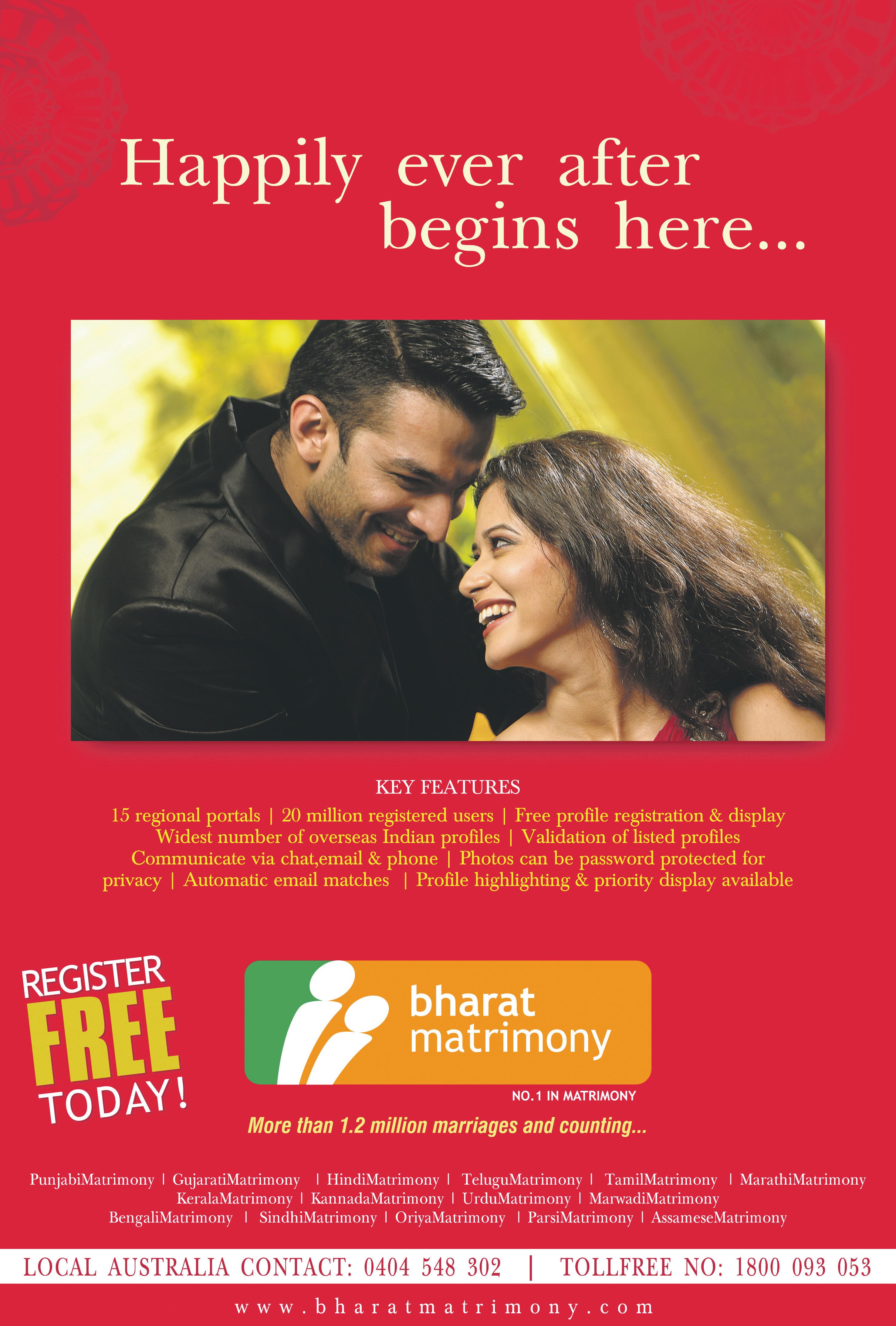
46 SEPTEMBER (2) 2012 www.indianlink.com.au


SEPTEMBER (2) 2012 47 NATIONAL EDITION
Promenade through PRAGUE
been the political, cultural and economic hub of central Europe with its history glossed over with glory during most its 1100 years of existence.

History
My first connection with anything Czech is through shoes. Sounds bizarre, but it’s true. Like many others in India, I grew up wearing Bata shoes, a worldrenowned footwear brand that was established in 1894 by Tomas Bata in Czechoslovakia, and later expanded by his son Tomas Jan Bata to all corners of the world, including the subcontinent.

So as expected, I am overwhelmed with that typical sense of familiarity when standing in front of the multi-floored Bata showroom on the famous Wenseslas Square in Prague, currently rated as one of the most sought-after tourist destinations in Europe.




Edging on the shores of Vltava River with rolling hills on both sides, this metropolis is now home to two million people, and has
Traditionally home to royals and presidents, this World Heritage listed site comprising of bridges, cathedrals, gold-tipped towers and church domes all adorned with over thousand spires, is one of the most historically enriched venues in the world. The city was founded in the 9th century during the Romanesque period, and flourished immensely through subsequent Renaissance and Gothic ages when it became the capital of the Holy Roman Empire. Later under the Habsburg Monarchy, Prague continued its golden journey as an important seat of the AustroHungarian Empire and remained so for 400 years till end of World War I in 1918, when became the capital of Czechoslovakia Republic. After enjoying over two decades of independence, it fell to the Nazis during World War II and at the end of the war in 1945, the city came under Soviet influence till the ‘Velvet Revolution’ in 1989 when

48 SEPTEMBER (2) 2012 travel
This city of a thousand spires has been luring visitors to its historical majesty for centuries
SANDIP HOR
Unlike many other European cities, Prague was untouched by the carnage of two world wars, leaving its architectural silhouette almost as intact as it was built several centuries before
Historic Old Town Square
Old Town astronomical clock
Royal guards

Cobblestone alleyways
Bata showroom

over an area of more than 45 hectares around three enormous courtyards, and comprising of impressive palaces, churches, chapels, halls and towers from the Romanesque and Gothic, to the Renaissance additions of the last Hapsburg emperor. The visual experience on the senses is similar to going through a textbook on European history.
The jewel of the castle quarter is St Vitus’ Cathedral, a major landmark of the city which took almost 500 years to be completed. Visitors are allowed to climb to
a market place during the 11th century, but gained the status of a town two centuries later when palaces, churches, towers and administrative buildings sprang up around the square, said to be among the most impressive in the whole of Europe.
An interesting feature of the Old Town is its growth in a natural, rather than planned manner. We come across streets breaking off at absurd angles with bends and twists unexpectedly greeting walkers. Luckily most of the area has ‘no-car’ restrictions,


to London. Installed in the 15th century, the crowd-pulling feature of the clock is the procession of twelve apostles at the striking of every hour.

Other architectural marvels in and around the square are by no means less significant; in fact all of them compete for attention. However, the Church of our Lady before Tyn, the Gothic Towers of which peer over the parade of Old Town houses; the Powder Gate, standing as silent witness of history since the 11th century; and the Municipal House, Prague’s most prominent Art Nouveau building dot the site of this former royal palace as an upmarket auditorium for concerts and operas, creating an immediate impression on visitors.
the Berlin Wall fell, triggering an end to communist dominance in many European countries. The nation was split into two in 1993 giving birth to Slovakia, but Prague remained the capital city of the new Czech Republic.
Guidebooks recommend seeing the momentous city by walking along its cobblestone streets, so I join my omniscient guide Jindra for an epical journey, history joining us
cities, Prague was untouched by the carnage of two world wars, leaving centuries before. Displaying a style of it demands to be photographed.
the top of its soaring towers for an awe-inspiring vista of Prague unfolding below. We give it a miss due to time constraints, but no regrets as Jindra takes us to many other vantage points in the palace gardens and along the riverfront from where the city views are equally mesmerising.
Czechs love their food and beer, so we stop at a wayside tavern to be gastronomically fulfilled, the Czech way. I order Budweiser beer and ‘svickova’ – a meat dish served with cream sauce and potato dumplings, and while sampling them Jindra adds to my knowledge of history by briefing me about Emperor Charles IV, the most significant ruler of the land during the Middle Ages who built a stone viaduct across the river, famously known as the Charles Bridge.
Architectural highlights
century built Loreto Chapel before
We cross this 520m long pedestrian thoroughfare flanked on both sides with thirty decorative statues of saints, following the same historic route traversed by the Czech kings while journeying from the royal quarters to the Old Town of Prague. This part of the city was


so it’s safe for strolling visitors who are usually so engrossed by the architectural scenery that the dangers of vehicular traffic are forgotten.
The structure that keeps drawing the most attention on the hour is the Old Town Hall whose Astronomical Clock is like a symbol of Prague, as Big Ben is
One of the most striking areas of the Old Town is the old Jewish quarter which is ranked among the most valuable Jewish historical monuments on the planet. The synagogue that dates back from the 13th century is the oldest preserved Jewish shrine in Europe. The adjacent cemetery draws attention to indicate just how several thousand tombstones were placed in a very small area.
After a few days of a hands-on encounter with an array of sights and scenes, I leave Prague with a notion that its charisma is not only by the countless attractions it offers, but also through its vibrant character and bustling ambiance that has kept enthusing visitors from Romanic times to date.
Travel noTebook
P RAG u E
GETTING T h ERE
A great way to travel to Europe is by flying with Singapore Airlines (www.singaporeair.com) which has 103 weekly flights to 14 destinations in Europe, and then travelling intercity by train. This arrangement provides the flexibility of arriving in one city and departing from another, in between criss-crossing the continent by train bypassing queues, delays, security checks, etc., associated with airports. Prague is only few hours away from major cities like Vienna, Munich, Berlin and Budapest. Rail Europe (www. raileurope.com.au) connects travellers with country railways and offers Eurail Passes, which is a perfect solution for multi-country travel spanning over a period of time.
AccommodATI o N
Exclusively located in the historical centre of Prague on Wenceslas Square and close to the main railway station, Jalta Hotel (www.hoteljalta.com) offers excellent service and value.
c UI s INE
Visit a Czech restaurant to try the delicious bramborová polévka (potato soup) and meat dishes with dumplings. There are also several multi cuisine restaurants including Indian - Indian Jewel Restaurant (www.indianjewel.cz), in the Old Town being most popular with locals and tourists for a curry taste.
c URREN cy
Czech Koruna, 1AUD = 21 CZK
TIP
Visit www.czechtourism.com
SEPTEMBER (2) 2012 49
Castle end of Charles Bridge
Wayside café
Famous Bohemia crystal
Czech marionettes
National Museum at Wencelas Square
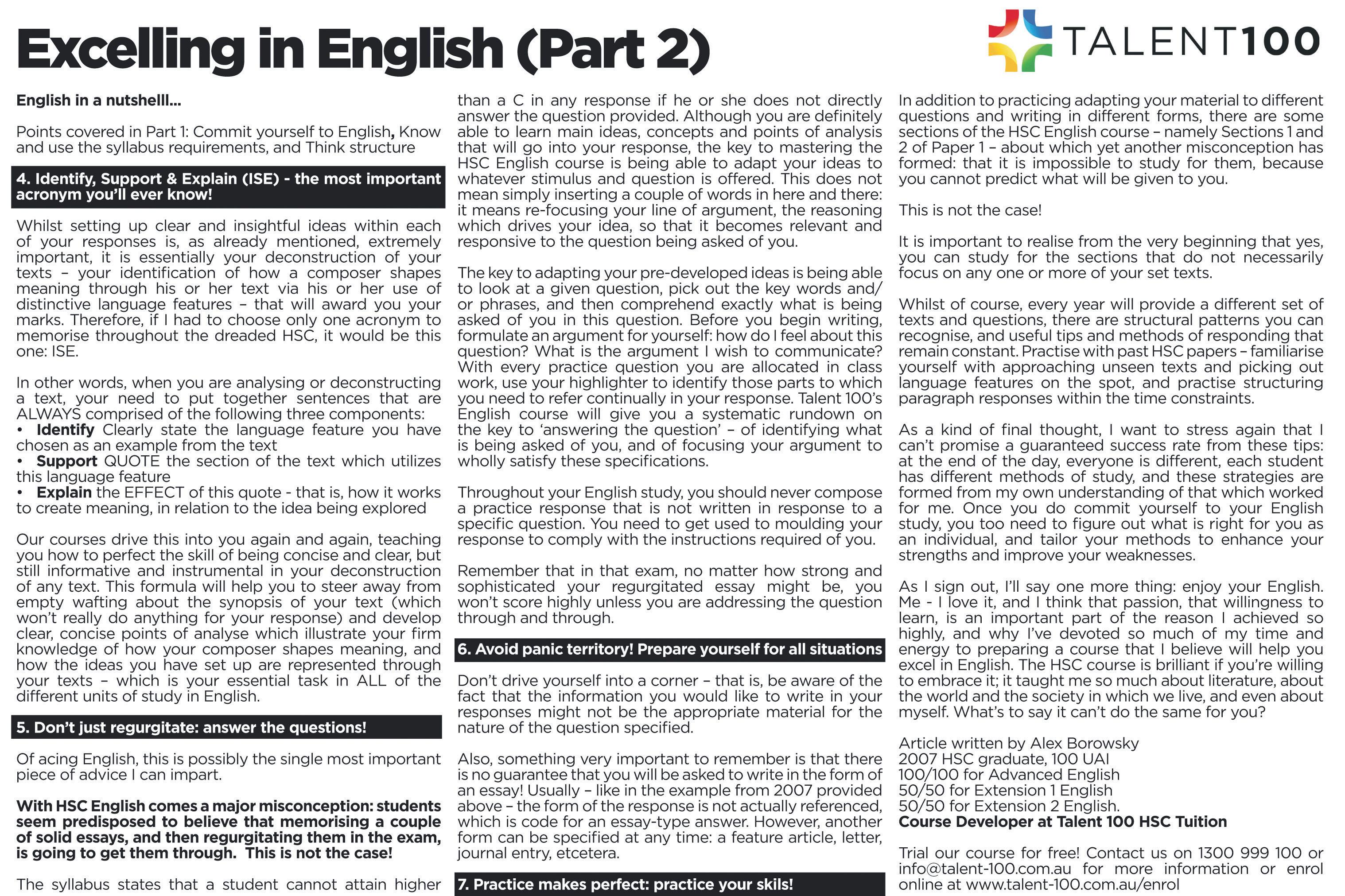

50 SEPTEMBER (2) 2012 www.indianlink.com.au




SEPTEMBER (2) 2012 51 NATIONAL EDITION Visit friends and relatives and also explore other places of interest in India. Witness the Purna Kumbh Mela at Allahabad from 27 Jan to 28 Feb 2013. Experience the Royal Luxury train tour in India on return spread a good word around among your Aussie friends. www.ramworldtravel.com.au email: ram@ramworldtravel.com.au
Street),
Australia’s leading Shopfitting and Shelving Supplier Visit our 300sqm Showroom! Delivery Australia Wide! Unbeatable Price! Supply to many Indian Supermarkets, Grocery, Convenience Store, Bargain Gift and Variety Stores and many more...
Unit 36, 62 Hume HWY (Cnr Knight
Lansvale NSW 2166
come in for a feast!
Established in 2009, family owned and operated, Daawat Indian Feast is proudly Westmead’s first Indian restaurant. It is run around the tradition of great hospitality and excellent quality food, specialising in North Indian cuisine.
As soon as you enter the restaurant, you are greeted with smiling, welcoming faces. It is easy to feel relaxed and ready for a casual meal. Menus arrive on the table immediately. The wait staff have a great knowledge of the menu and are always willing to go the extra mile to help make your meal special. The menu includes an appetizing array of the signature dishes like Kadhai Paneer, Butter Chicken, Lahori Kadai Chicken, Seekh Kebabs, Tandoori Chicken, Biryanis, Prawn Masala, Fish Amritsari and Paranthas/Naans.
Lahori Kadai Chicken comes with unusually tender and tasty chicken cooked with onions, capsicums and masala whereas Butter Chicken just melts in the mouth. Kadhai Paneer is cooked
with freshly cut soft paneer with an aromatic fusion of spices.
The massive population of south Indians and Sri Lankans from the suburbs around, go for the Biryanis made from the freshest ingredients.
Indeed, like its name, the restaurant will serve you nothing
less than a true daawat, ie, an Indian feast!
Daawat has a B.Y.O policy for Beer or Wine only. Located in a busy market of Westmead, the outdoor seating is an ideal spot to dine with good friends over great food while enjoying the crowd outside.
Prices are very reasonable and in fact much cheaper when compared around. Lunch Specials and weekend specials are also available that are great for quick snacks.
Located across the Westmead railway station, the free parking behind the restaurant gives you the luxury to visit conveniently. Daawat
is open 365 days a year from 11am – 10pm.
With a seating capacity of 60, Daawat specialises in a wide variety of events such as birthdays, weddings, anniversaries, corporate events, get togethers etc. Utilising our immense experience, knowledge, resources and passion, Daawat Westmead has successfully catered various private and corporate events such as in-house press conferences of Bollywood stars such as Raju Shrivastav, Ali Hassan, Irfan Malik, Anita Lerche, Shaukat Manzoor and Tariq Khan.

“We have also participated in the Church Street Parramatta festival during AR Rahman’s Sydney 2010 concert and the event Indian Australian Dancing Star 2012,” proprietor Ankita Sharma reveals.
Sharma concludes, “We promise you a true dining experience providing you with authentic Indian cuisine in a cosy and comfortable family environment. Over the last few years, Daawat has successfully catered and offered the very best in Indian food and hospitality, and we hope to continue doing so”.
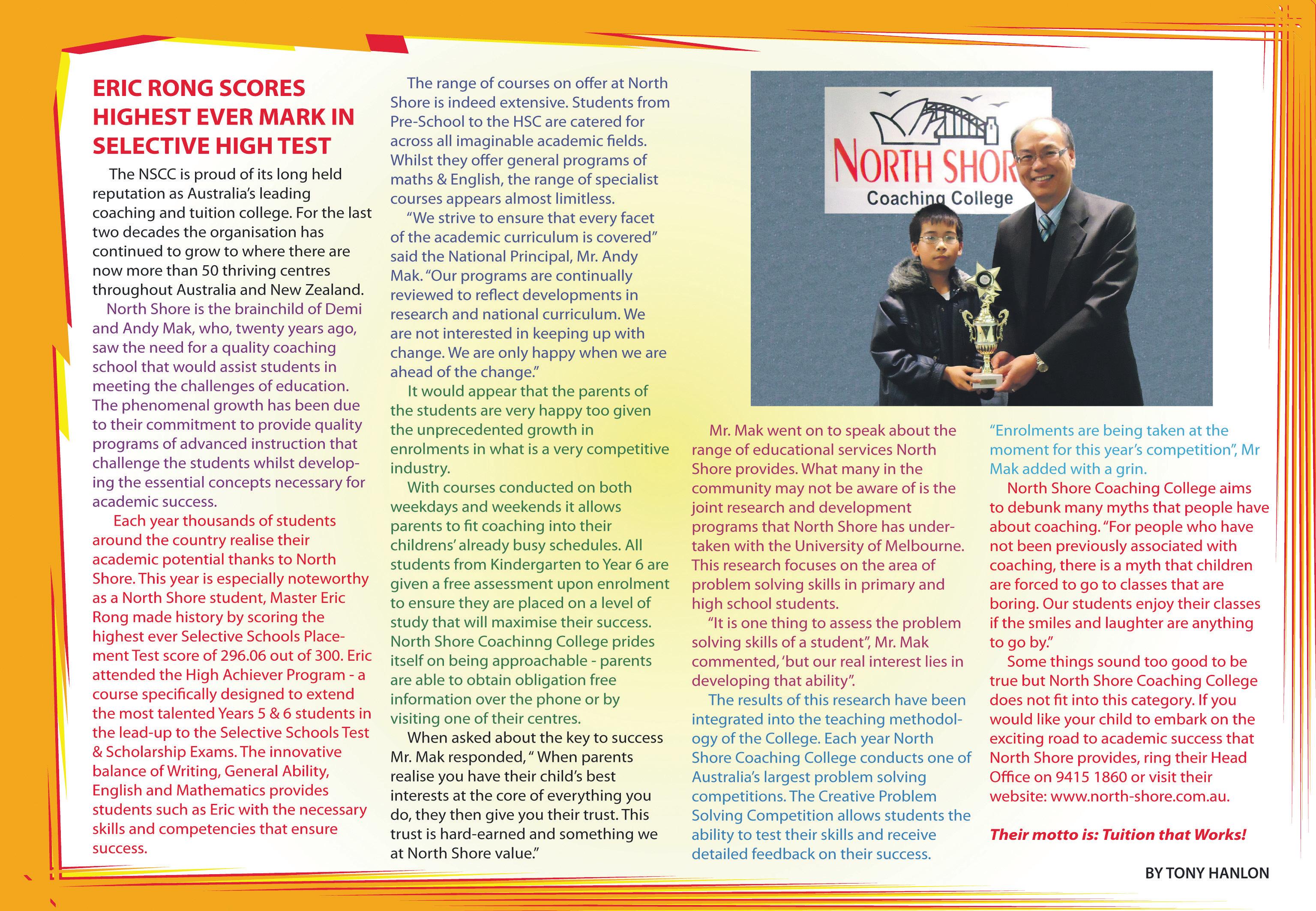
52 SEPTEMBER (2) 2012 www.indianlink.com.au a Dvertor I al
Stand-up comedian Raju Shrivastav at Westmead’s Daawat Indian Feast restaurant
Priceless paneer
A delicious treat, this dairy-based food can lend itself to a range of versatile dishes
Paneer is a very popular food in almost every Indian home, and great source of protein, besides being very neutral and versatile. Paneer can beautifully blend itself with a wide range of ingredients to produce mouth-watering results. No wonder it has carved a niche for itself in the vegetarian world.
Paneer is a mild cheese that can be prepared at home from pressed milk curds, made by curdling milk with an acid, generally lemon juice or diluted vinegar, instead of rennet. The acid helps the paneer hold its shape so that it doesn’t melt, making it good for grilling and frying. My hunt for different paneer recipes began when my 8-year-old suddenly took a fancy for it and is now totally crazy for the food. I have a paneer recipe at least once a week in my cooking schedule, and have gone beyond the standard recipes like kadhai paneer and paneer butter masala. Below are a few unusual recipes that would delight your family and liven up your cooking.
Methi Channa Paneer
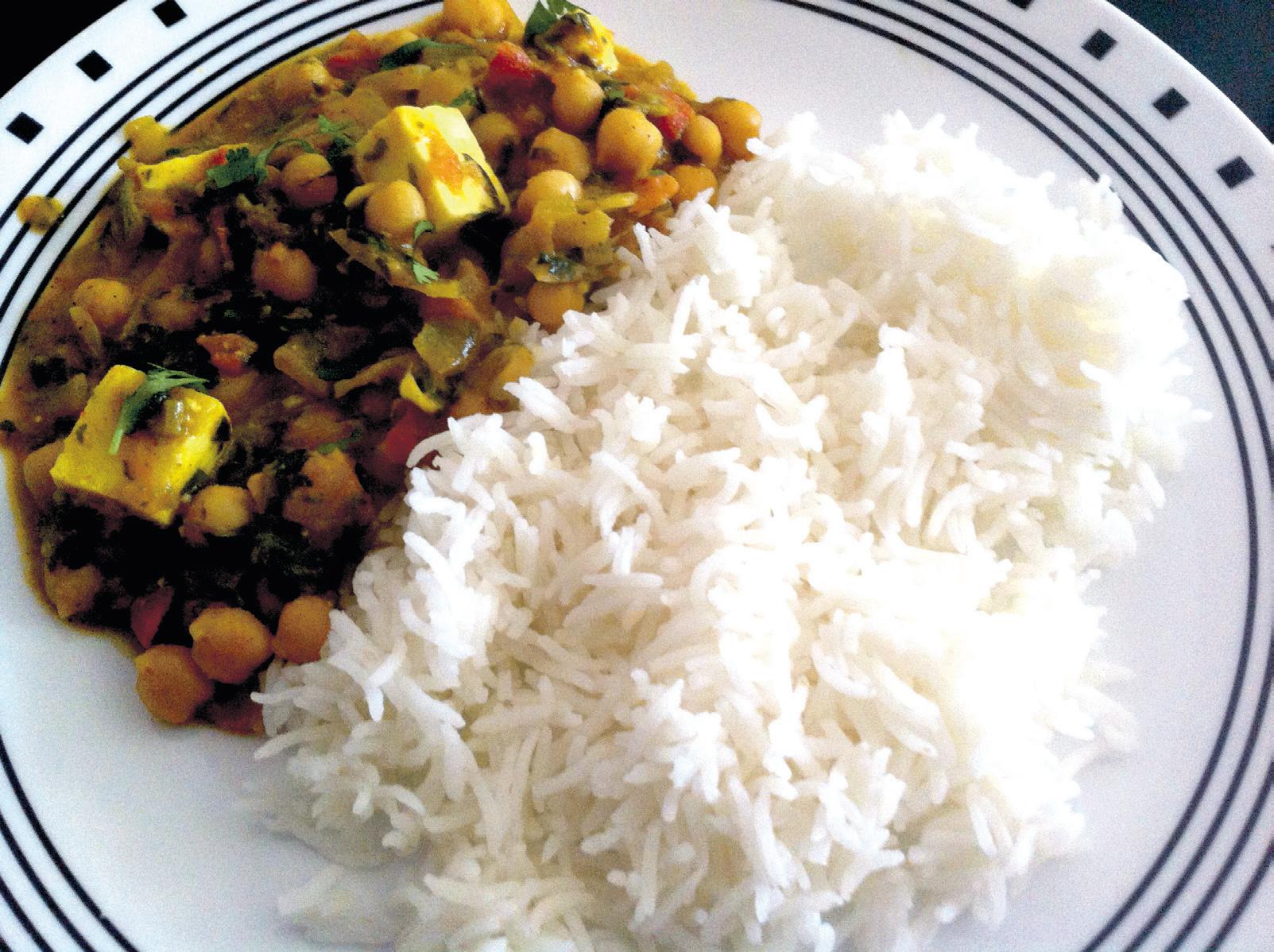
This mouth-watering preparation of paneer and channa coupled along with the goodness of methi, can be served with rice or roti.

2 cups chickpeas (channa)
1 cup paneer (cut into small cubes)
1 big onion (finely chopped)
1 midsized tomato (finely chopped)
2 cups methi leaves (or 2 frozen cubes)
3 to 4 teaspoons oil
For the masala, grind to a coarse paste
1 inch piece ginger
2 cloves garlic
1 heaped tsp chilli powder
1 heaped tsp coriander powder
¼ tsp turmeric powder
½ tsp garam masala powder
Grind into a paste
A handful of boiled channa
4 to 5 cut paneer cubes
For the tempering, grind to a coarse powder
2 cinnamon sticks
4 cloves
½ teaspoon cumin seeds
Soak dried chickpeas (channa) overnight or for at least 5 to 6 hours. Place in a pressure cooker and boil for 4 to 5 whistles. Keep
aside. Heat oil in a deep non-stick pan. Add the coarsely ground masala mixture and fry for a minute. Add the finely chopped onions and sauté until transparent. Next, add the tomatoes with salt according to your taste and sauté until the oil separates from the mix. Now add the methi leaves and the ground paste of channa and paneer cubes, and fry for 2 minutes. Add the paneer cubes and boiled channa, simmer for 3 to 5 minutes. Garnish with coriander leaves and serve hot.
Pudina Paneer

This exotic blend of paneer and pudina (mint leaves) creates a preparation with a delicious aroma and taste.
1½ cups paneer cubes
2 midsized onions
2 midsized tomatoes
½ bunch finely chopped mint
leaves
2 tsp finely chopped coriander
leaves
2 tsp oil
1¾ tsp salt
1tbsp curd
½ tsp chilli powder
1½ tsp coriander powder
¼ tsp turmeric powder
For the tempering
1 bay leaf
1 cinnamon stick
1 clove
Grind for the masala
2 small cloves garlic
1 inch piece ginger
1 tsp pepper
½ tsp cumin seeds
Heat oil in a deep non-stick pan. Add seasoning ingredients above and the ground masala mixture, and fry for a minute. Add finely chopped onions and chilli, coriander and turmeric powders, and sauté for 2 to 3 minutes. Next, add finely chopped tomatoes, salt to taste and sauté till the tomatoes melt and the raw smell of the ingredients disappears. Add paneer cubes, finely chopped mint leaves and curd, and sauté for just 2 minutes. Take off the fire, garnish with coriander leaves and serve with rotis.
Paneer Biryani
An unusual biryani recipe, ideal to make for guests
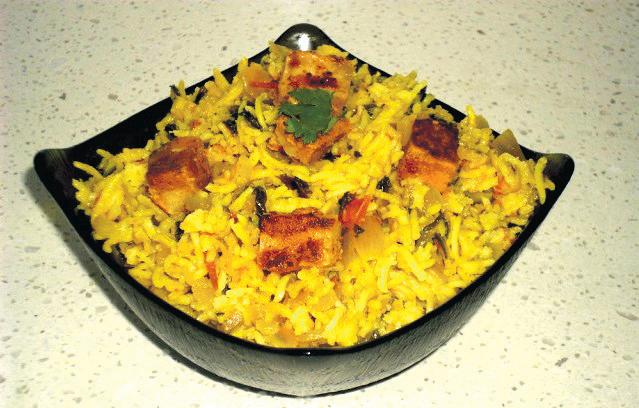
1½ cup rice
2 medium-sized onions
2 tomatoes
10 teaspoons oil
2 pieces cinnamon
2 pieces cloves
3 pieces bay leaves
2 pieces cardamom
1 heaped tbsp thick curds
2 tsp coriander powder
1 tsp garam masala powder
1 tsp chilli powder
1 tsp lemon juice
2½ tsp salt
½ bunch coriander leaves, finely chopped
1 bunch mint leaves, finely chopped
For the marinade
1 cup paneer cubes
2 heaped tbsp yogurt
1 tsp coriander powder
½ tsp chilli powder
¼ tsp garam masala powder
½ tsp salt
Grind to a masala paste
3 green chillies
3 cloves garlic
1 inch piece ginger
Soak the rice for half hour.
Prepare the marinade, add paneer cubes and store overnight in the fridge.
Heat a little oil in a non-stick tawa and add paneer cubes. Fry on low flame till the cubes turn golden brown. Keep aside.
Heat oil in a separate kadhai, add cinnamon, cloves, bay leaves, cardamom and fry for a minute. Add the ground masala paste and sauté for 2 minutes. Add onions fry for 2 more minutes.
Next, add the tomatoes, salt, coriander, chilli and garam masala powders, and sauté till tomatoes soften and blend with the mix. Add chopped mint and coriander leaves, sauté for a minute. Add lemon juice and yogurt, sauté for 2 minutes. Add the mix to the uncooked rice and put the mixture in an electric rice cooker. Add 1½ cups of water, set the rice cooker to cook mode.
Once cooked add in the paneer cubes and mix well. Garnish with coriander leaves and serve hot with raita.
Paneer and Carrot
Rotis
½ cup grated carrot
1 cup grated paneer
2 cups atta (wheat flour)
1½ tsp salt
1tsp ajwain (omam)
¼ tsp turmeric powder
chilli powder
1 tsp
coriander powder
¼ tsp garam
masala powder
3 tsps crushed
kasoori methi
Water, as needed
Oil to toast
Mix together all the ingredients. Add water in small quantities and knead mix into a soft dough. Divide the dough equally into smaller portions shaped like balls. Roll out and make rotis.
Toast on tawa with a teaspoon of oil for each paratha. Serve hot with pickle/ raita

NATIONAL EDITION
F oo D
SOWPERNICA
PaneerandCarrotRotis
MethiChannaPaneer
PaneerBiryani
Pudina Paneer
Driving to relax? As if!
BY RANI JHALA
My friend and I got our driving licences on the same day. She gave up driving two years later, after getting seriously injured in a car crash. It was not her fault, but she paid the price. The other driver was charged with the classic offencesdriving under the influence, driving an unregistered car and driving without a licence.

Nine years later I am still driving, but I am only just holding on to my sanity. Why is it that we go berserk as soon as we get behind the wheel?
Our calm and friendly nature is overridden by this aggressive and challenging persona. I do not ordinarily swear, yet behind the wheel, out they flow.
In order to understand this negative change in me, I began to keep a journal. This is only from last week’s entry:
Monday: I was driving behind what I now call ‘the fifty drivers’. There I was cruising along the road that had a 70kph limit and suddenly I found myself directly behind a white car moving at 50kph. As I exited the road, I was forced to remain behind him. Unfortunately he took the same exit as well. We were now in a 60kph zone but my ‘fellow traveller’ continued in a one-lane road, maintaining the same speed. Three kilometres later, we went through a school zone. And to my utter surprise, the driver continued at 50kph in the 40kph zone. I had to smile as he sped away from me. How far would he go? After all, a 60 zone was coming up again!
Tuesday: I was in the kerbside lane, directly behind a ute. Seeing the ‘merge lane’ sign coming up, I moved into the right lane and still remaining under the speed limit, drove past him. The next minute, I heard a roar as the driver of the ute sped past me and cut in, totally oblivious to the fact that since his lane was ending; he should have waited and merged when it was safe. And then to my utter horror he had the audacity to lift his middle finger. I had to smile when just fifteen minutes later I drove past him, standing by the roadside changing the front tyre of his car. I refrained from returning the salute as I drove past, but I did let out a quiet ‘Idiot!’
Wednesday: Today I incurred the exuberance of a young driver who
Any man who can drive safely while kissing a pretty girl is simply not giving the kiss the attention it deserves.
Albert Einstein
appeared to be taking his girlfriend for a run in his new car. They were right in front of me and I watched as he played with her hair and turned every few seconds to look at her. When this continued for a few minutes I turned to my daughter and prophesied an accident. Sure enough, just minutes later the teenager had run into the car in front of him and caused a multiple pile-up. Since there was major damage to all cars, several of us were asked to act as witnesses. We learnt that the teenager had just got his P-plate, but was driving without displaying it. The car was registered under his mother’s name and some ten minutes later, she came to collect her child. As his mother drove up, I noted that the teenager had moved away from his girlfriend.
I had to smile as I thought, ‘Had you done that in the first place, this would not have happened’.
Thursday: The ‘texters’ are the real patience testers. If only I had a dollar for every time I missed the lights because the person in front of me was texting. Today it was not a ‘texter’ that tested my patience, but the man driving alongside me, reading a newspaper which was folded across his steering wheel. Somehow he successfully navigated himself for a good five minutes before he put the paper aside and lit a cigarette. I had to smile as we drove past a fast-food outlet and
Marshall McLuhan
Author Unknown
he turned into it. ‘Oh Lord! Now he would juggle his breakfast and coffee as well. The stupid fool!’ Friday: Another jaywalker cut in front of me today. One minute she was standing on the median strip and the next minute she had stepped out in front of the car. Had the car not responded immediately to my foot as it slammed on the brake, the woman would have either been on top of bonnet or beneath the wheel of my car. There was no apology or even a smile. Calmly she continued her walk across a three-lane highway, ignoring the abuse from other drivers. This was a bit scary, but people walking off the kerb before your car has had the chance to go past, is a common occurrence. I would smile at their stupidity if they did not put the lives of the drivers at risk.
Saturday: This morning I rushed around dropping the kids to their respective sport venues. Not one of the venues had sufficient parking, so I dropped off the kids at the main entrance. While I waited for my last child to text back that she had met up with her group, I watched in utter amazement as two parents fought for the one parking spot that was becoming available. I had to smile when a third car, reversed in from the other side and took the spot, leaving the first two parents gaping in astonishment. I stopped smiling when I remembered the many times someone had taken my spot by rushing past me as I waited with my indicator on.
Sunday: I handed over the driving to my husband and decided that I would finally enjoy a relaxing drive. We went shopping and returned to find that our car had been dented. From the angle of the damage, it appeared to have been marked by a shopping trolley. No notes and no witnesses. The shopping centre assured us that they would look at the security camera footage
shell, of urban and suburban man.
and see if the incident had been recorded. Without that proof we are now looking at having to pay the excess on our claim, on top of the inconvenience of having to give our car for repairs. Initially upset, I had to finally smile as I thought, put a person behind a wheel and they go crazy, and even a nonmotorised shopping trolley seemed to have that same power over the human mind.
But my pet hate is drivers who simply don’t think of the other people on the road. The motorbike that sneaks through a waiting traffic to get in front; the cyclists who ride in pairs, blocking a one lane road and slowing down the traffic to a crawl; the women who decide to apply their make up while waiting for the lights to change; the teenagers who have blaring music that vibrates through the body of your car; the parents who zoom through school zones oblivious to the primary school kids that are crossing; the do-gooders who stop to let every single car into the lane while a backlog is created behind them; the pedestrians who chat away at the lights and decide to walk when the ‘do-not-walk’ sign lights up; the parents who force you to wait while they finish their conversation at a pedestrian crossing; the grandparent who clips your car as they drive along searching for their grandchildren, not even aware that they have hit your car; the man who sits in a convertible and brushes his hair every time the car stops; mothers who constantly turn to tend to the need of the child in the back seat, and the tailgaters who refuse to understand that you are already driving at the maximum speed limit.
I remember thinking that driving was once considered as a most relaxing activity. Relaxing? As if!
the protective and aggressive
The car has become the carapace,
Road sense is the offspring of courtesy and the parent of safety. Australian Traffic Rule
Mac McCleary
scorn in the one ahead.
driver behind you and
you admire in the
I had to finally smile as I thought, put a person behind a wheel and they go crazy, and even a non-motorised shopping trolley seemed to have that same power over the human mind.
Patience is something
54 SEPTEMBER (2) 2012 www.indianlink.com.au Fiction
Getting behind the wheel can be quite a traumatic experience, mainly because of the insensitive others around you
It takes 8,460 bolts to assemble an automobile, and one nut to scatter it all over the road.
The one thing that unites all human beings, regardless of age, gender, religion, economic status or ethnic background, is that, deep down inside, we ALL believe that we are above average drivers.
Dave Barry
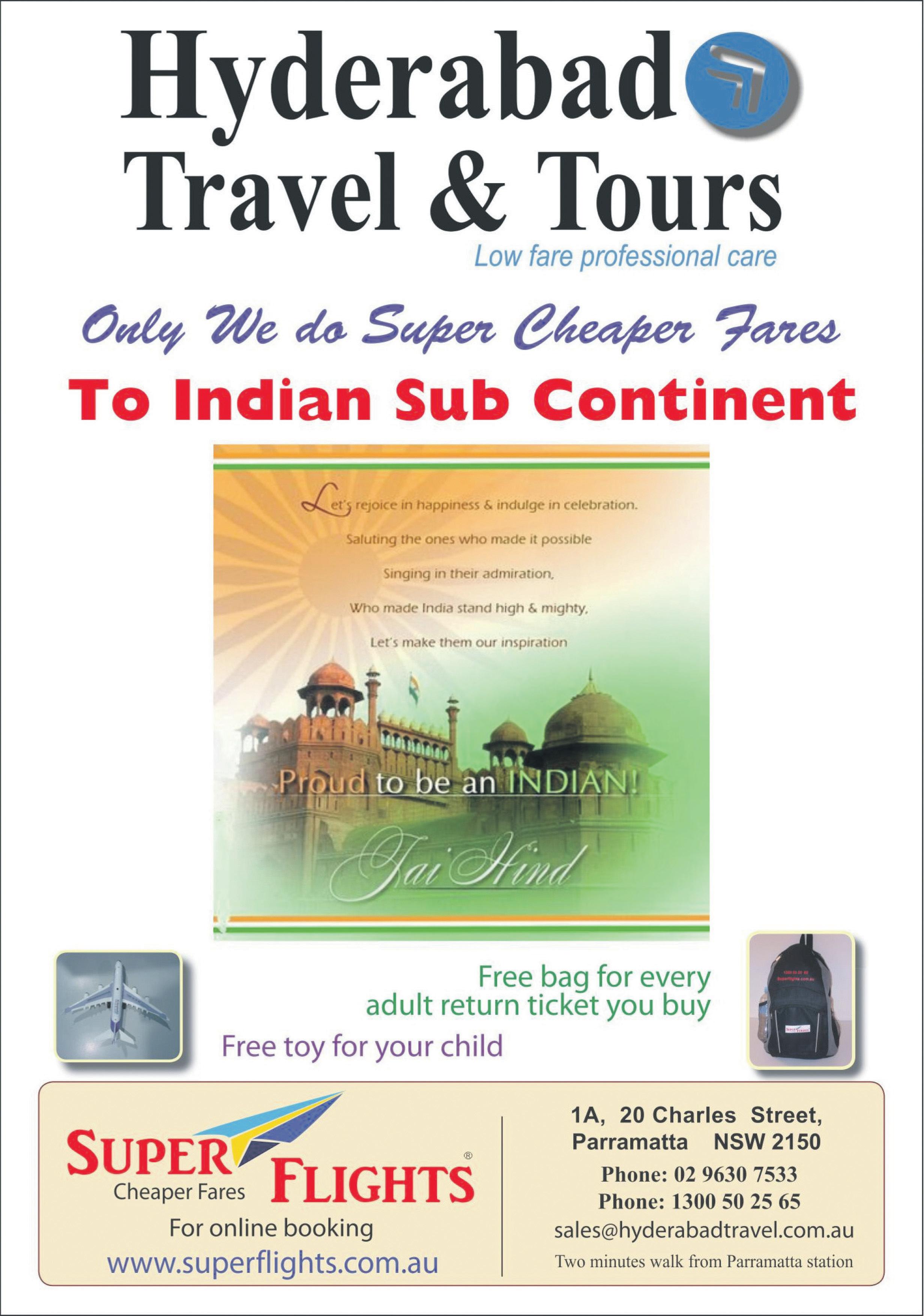
SEPTEMBER (2) 2012 55 NATIONAL EDITION
the Buzz
Barfi’s the best!
That’s what the box office claims, as it savours the sweetness of Anurag Basu’s latest offering. It is not a conventional subject, it doesn’t have the usual success formula and the protagonist has no dialogues. But Ranbir Kapoor as the happy-go-lucky deaf and mute guy called ‘Barfi’ has touched the heartstrings of the viewers, resulting in an overwhelming opening.
did exceptionally well in multiplexes and other cities, and the buzz is that it will pick up by word
This touching tale narrated by talented director Anurag Basu has wowed the critics and the audiences alike. istributors are equally happy with the response to the movie. In the movie, Ranbir’s character is deaf and mute, and Priyanka chopra’s character is autistic. however, despite portraying sensitive issues, Basu has given it a light touch and presented it as a triangular romantic comedy. In addition to the superb performances, sound script and deft execution, the backdrop and music all combine to make a good movie. It’s sweetness all around
Queen of quirkiness
That’s Bipasha Basu, our favourite Bollywood Bong beauty, with brains to match. Bips is seen as one of the most glamorous girls in the industry, but the actress admits that she prefers performance-oriented roles in commercially entertaining films to offbeat cinema.
y choice with films has been very quirky. Whenever I have performed in an unsafe space, it has worked well for me. At this point of time, I am in a very greedy phase where I want performanceoriented roles and a very commercially entertaining film,” she said.
“I don’t want to do a performance-
GUESS WHO ?
A nawabi wedding?
Now we all know that Bollywood, and even Hollywood’s buzzing with the news of the impending marriage between Saif Ali Khan and Kareena Kapoor. The couple have been together since 2007 and have finally set the date as October 16, with Sharmila Tagore, the groom’s mother already sending out invites. It may not have the public presence of Will and Kate’s big day, but almost all Bollywood fans are agog for details. Like whether Kareena will wear Sharmila’s sharara, a traditional outfit that the veteran actress wore at her wedding to the Nawab of Pataudi. Or if her favourite designer Manish Malhotra will design her wedding dress, which will be the best of old world charm. No matter what the choice, the outfit is likely to have a touch of the bride’s simple, elegant taste.

The function with family is to be an intimate, closed-door one, with the reception to be held in Delhi. And what with the likes of Brad Pitt keeping tabs on the wedding, it should be an interesting affair. “I wish Saif and Kareena all the luck and a beautiful life ahead,” Brad said recently. Well, we join him in wishing the happy couple all the best!
oriented role in an art film. I want people to realise that I am a good actor within the realms of a commercially entertaining film,” she added.
o f course, Bipasha has enjoyed her share of offbeat movies too, with Pankh, Lamha, Apaharan and Aakrosh
And despite her non-film background, the model-turned-actress has made a mark for herself in showbiz, something she is proud of, and rightly so.
The 33-year-old actress succinctly summed up her journey saying, “I am one of those really lucky actors. I have survived 10 years in this business and am still choosing the things that I want, am still a regular household name, still making a lot of money.”
If Bips takes credit for her achievements, she is equally open about owning up to her mistakes.
“There are peaks, there are valleys. I own up to my mistakes and I own my success completely. There is nobody who has helped me out ever. I feel very proud of myself,” said the actress, who was recently seen in Raaz 3, a horror film. she has received a positive response for the movie so far, and admits that appreciation has come her way after a long time. The movie which also stars Emraan hasmi and Esha Gupta, has so far reportedly grossed Rs 50 crore.
“I am nervous and anxious and excited. Appreciation pouring in is very humbling... I have got some fantastic reviews after a long time. I think it was much required at this point of time for me. It’s a good feeling,” she said.
Let’s hope Bips gets a chance to spread her wings and fly high.
Priyanka’s proud gaana she’s one of Bollywood’s most accomplished actresses, has sashayed on the catwalk and carried the miss World crown. But for Priyanka chopra, making music was her toughest journey, yet the most enriching. The actress recently unveiled her debut international music single In my city, and the experience has been a challenging one, but marks the beginning of an exciting new chapter in Priyanka’s life.
The song, also featuring international singer will.i.am, has been produced by Redone and Brian Kennedy. It is an emotional and feel-good number, and the National Award-winning actress is undoubtedly proud of her debut performance.

“I walked into this as a novice, with no training or experience of making music, and today, as I share my music with the world, I hope that I have been able to create a sound that India would be proud of,” said the 30-year-old, whose singing genes come from her father.
In my city will be available across
entertainment a BH i L aSH
a S
en GUPta brings us up-to-date on what’s hot and happening in Bollywood
You’ll know her if you’ve seen the latest Bollywood hit. (Find the answer under Caption Contest) www.indianlink.com.au
various platforms internationally over the coming weeks. This is the first single from Priyanka’s much-anticipated debut album, which is expected to be released early next year.
It’s another successful milestone for this talented and inspirational actress, with even salman Khan admitting that he listens to it on loop. “omG! Just heard Priyanka chopra’s English track three times back to back. It’s fabulous, outstanding! sALAAm miss chopra,” tweeted salman. seems like we’ll be hearing much more of Priyanka’s music in the future!

Esha’s rules!
They haven’t been married for quite three months yet, but there’s no doubt about who wears the pants in the family. Esha deol who recently married businessman Bharat Takhtani claims that she doesn’t want her husband to turn to acting.

“I had always said that I never wanted to marry a hero. he is a successful businessman and I hope he continues to be one. There is no need for him to become an actor,” she said after the couple walked the ramp together for jewellery brand ‘Azva’ at the India Bridal Fashion Week 2012 in mumbai recently. Now Esha has walked the ramp before, but this was the first time she walked it after their wedding in late June. calling Bharat “a born model”, she said that she didn’t have to give him any tips on how to walk the ramp. “I didn’t give him any tips, he is a born model. he has done many ramp shows when he was in college. he is very confident,” she said. Azva’s collection was based on the seven vows of an Indian wedding, with a mix of traditional and modern jewellery. The line had an exquisite range of 22-karat gold jewellery including necklaces, earrings and bangles.
The actress looked stunning in a pink and blue lehenga work. she wore a heavy neckpiece and beautiful long earrings. Bharat looked handsome in an off-white with gold work.
For Bharat, seeing Esha as a bride for the second time was stunning. “ grows on me every single day. This is like a deja vu experience for me. looks very beautiful,” he said.
Let’s hope the luurve lasts long, as long as Esha gets her way!
Simple Siddharth found acting tough
he’s the only one in the trio of leads that has no filmi background, which put siddharth malhotra at a slight disadvantage. But the actor who will debut with Student Of The Year (SOTY) is quick to admit that he enjoyed the ride, which came to him as a surprise from director Karan Johar.
siddharth, a model-turned-actor, worked with Johar as an assistant director earlier. In SOTY in mid- october, he shares screen space with mahesh Bhatt’s daughter Alia, and david dhawan’s son Varun. Naturally, siddharth found it tough to be as dramatic as the other two, due to his non-filmy background.

“The only disadvantage in being from outside is doing filmy things. I’m not so
dramatic and not comfortable doing over the top things. When you look at shah Rukh Khan, it’s not what he sings on screen, but how he sings too. he sings (lip syncs) with so much passion and love. This was a challenge at least for me,” siddharth said in an interview.
“These guys (Alia and Varun) have seen this right from the beginning,” he added. siddharth, who hails from New delhi, says he couldn’t believe it when Johar gave him the chance of being a part of the movie. And there was no way he could refuse it.
“Karan Johar doesn’t offer you a film, he announces it. Who are we to refuse him? When he told me he would be directing it, I asked him why he wanted to take me on,” he said. But acting has been a tough job, he
“Being an actor is not easy. you have work schedules that are 13 to 14 hours long, and hardly get any time to sleep. you need to keep working out so that you look good and perform well,” he said. iddharth arrived in mumbai five years ago hoping to act in a movie, but he did take up the job of an assistant director to enter Bollywood. he worked
My Name Is Khan, which made it easier for siddharth to understand the inner workings of a film set, and that experience helped him for his acting debut as well.
“ you know what not to do. you understand the importance of something which an assistant director comes and tells you. you understand production deadlines. ou understand the workings of it because you have been that person,” iddharth met co-actor Varun
My Name is Khan, who was also an assistant director on the film, and they got to know each other well even off-screen. Varun initially had a problem bonding with Alia, daughter of ahesh Bhatt and soni Razdan, but they got over their differences and the trio all worked well together.
o what’s next after SOTY, a romantic comedy? An action flick may be on the cards for this rising star, but naturally, he’s close-lipped about it until the details are iddharth has learned the ropes the hard way, let’s hope his career takes him to the fulfilling heights of stardom.
e is considered as one of the leading action heroes in Bollywood, thanks to a alman Khan will be toning down is toughness in yet to be
alaika Arora Khan who co-produced says some of his action sequences in the sequel have been altered to suit the actor’s health
alman’s action scenes have been modified and done according to specifications taking his health in alaika said recently. alman has been battling health issues and even underwent surgery for Trigeminal Neuralgia, a facial nerve disorder.
COnte St
Ekta: How much more, bro?! I’ve had enough of giving you a push. Get your act together and make a mark of your own, please!!
Jaya

Talking about salman as a brand, malaika said, “he has worked really hard and for an actor there are many ups and downs. They keep going through those phases. one can’t overlook the fact that salman has a huge fan following.”
salman has made a place for himself in the action hero category with hits such as Wanted, Dabangg and the recently released blockbuster Ek Tha Tiger.

Dabangg 2 will be a sequel to the 2010 blockbuster, and again stars sonakshi sinha in the female lead.
The sequel is like a family film - salman plays the lead role, his younger brother Arbaaz makes his directorial debut, and sister-in-law malaika will co-produce it. Now if we could only find a way of tying in sonakshi with the Khans, it would be a true family film!

SEPTEMBER (2) 2012 57 NATIONAL EDITION
CaPtiOn
Answer to ssGUE ?hoW
Ileana ruzcd’
Send in your responses to info@indianlink.com.au and win a surprise prize
between Priyanka Chopra
SAlMAN KHAN
BIPASHA BASU
SIDDHARTH MAlHOTRA
PRIyANKA CHOPRA
Last issue Caption Contest winning entry
Jaya wins a CD of new Hindi film Barfi!
between brother and sister Tusshar and Ekta Kapoor?
Didugu Leichhardt NSW
Cine Talk
Sweet offering, a modern masterpiece
Silences seldom spoke so eloquently. It’s been a while since we saw a film that set style at a subsidiary state to substance, put the characters’ inner life ahead of the flamboyant manifestations of self-identity in a world governed by benevolence and charm.
Barfi! is a very charming film, remarkably devoid of vanity. The story of a deaf-and-mute man who could have grown up watching Chaplin and Raj Kapoor’s cinema, and an autistic girl who has definitely not seen Shah Rukh Khan in My Name Is Khan, is told without the props of loud background music and other prompters to get audiences’ involved in the proceedings.
This is a picaresque world of artless charm which invites you in without band baaja or baaraati. Fanfare is for the circus. Barfi! is pure cinema.
Goodness! I am already gushing. It’s the narcotic effect that Barfi has on you. Within no time at all you are swept into the protagonist’s world, the two lovely women who breeze in and out of his existence and various other characters, all etched with a compassion and vividness that one associates with the cinema of Frank Capra and Ritwik Ghatak. Barfi! exudes the warm glow of a life well lived. This dazzling glow originates from the protagonist Barfi who lives his life king-size with many Chaplinesque antics creating a chain of comic-book adventures for our ‘happy-golooking’ hero, even though he can’t speak or hear. But then speech was always supposed to be the least essential component of cinema.
Ask Ingmar Bergman or Satyajit
Ray. Their characters spoke through lingering silences.
It’s been a while since any protagonist on screen said so much to us without speaking. Rani Mukerji in Sanjay Leela Bhansali’s Black said it all through her muted mode of communication. But she had the formal sign language plus a voiceover for articulate support.
Significantly Anurag Basu, a master storyteller (and never mind the tormenting tepidity of his last film Kites) does away with the crutches of sign language and voiceover.
Ranbir Kapoor as Barfi (or Murphy, whatever!) is left to his own devices. An incredibly enterprising actor, he brings a Chaplinesque aura to Barfi’s character. Blending a very physical pie-in-the-face style of comic acting with an intangible poignancy, Ranbir turns his character and the film into a
muted celebration of life. The tears are hidden from view. But they are there.
His grandfather, Raj Kapoor, has never been very far from Ranbir’s acting skills. Raj Kapoor was highly influenced by Chaplin. Ranbir brings both the legends into the same line of vision, and yet creates a character which is unique in its buoyancy and optimism, never mind the sleeping dogs. Just let them bark in their sleep.
Priyanka Chopra as the autistic Jhilmil steals the show from Ranbir, if that’s possible. Lately, she has been found to be guilty of overacting in Agneepath and Anjaana Anjaani (with Ranbir again). In Barfi! all her recent sins of excess are washed away.
Priyanka’s inherent glamorous personality simply disappears into her character. We don’t see the actress on screen at all! We see
only Jhilmil who reminds us in a very pleasant way of Sridevi in Sadma. This is one of the most flawless interpretations of a physical-psychological disability seen on celluloid.
While Ranbir and Priyanka effortlessly prove themselves the best actors of their generation, Ileana D’Cruz makes a confident engaging debut into Hindi cinema. Is she here to stay? Time will tell.
As for Basu, in his earlier films
Gangster - A Love Story and Life...
In A Metro, he proved himself a maestro of the inner life. Barfi! too is shot on location within the hearts of the characters. Not just the memorable protagonists, even the smaller players specially Roopa Ganguly and Akaash Khurana and Haradhan Bandhopadhyay, leave a lingering impact.
Barfi! celebrates life without dismissing the dark passages and roadblocks that we often

encounter as we travel through that craggy road to death.
To be able to celebrate life so warmly and sensitively the filmmaker has to know death closely. Basu, a cancer survivor, has been there.
Barfi! comes as close to being a modern masterpiece as cinematically possible. To miss it would be a crime. To embrace it is to serenade the sublime.
Subhash K. Jha
FiLm: Barfi!
CaSt: Ranbir Kapoor, Priyanka Chopra, Ileana d’Cruz
DireCtOr: Anurag Basu
58 SEPTEMBER (2) 2012 www.indianlink.com.au
entertainment
A brutal supernatural take on Bollywood rat race
Voodoo karle saajna... If your career starts to slip up, have no fear. Consult God. If He lets you down, consult his nearest rival Satan. Shake hands and even bed the devil, and you have an ally to work on your enemy.

So now we know why actresses in Bollywood can’t get along. They are too busy sticking needles into one another’s careers to focus on their own. Shanaya (Bipasha Basu), we are told at the outset without wasting time, is a top-notch actress on the downslide. Instead of drowning her defeat in drinks, she decides to smother her nearest rival, the upcoming Sanjana’s (Esha Gupta) career, using her director-lover Aditya as a bait.
Writer Shagufta Rafique’s screenplay is more of scream-play. The two actresses between them scream their lovely lungs out, as hands pop out of graves to lunge at shapely throats. Mirrors are broken and used to pierce satanic casualties and to track down ghouls that appear only in mirror images.
Just where Vikram Bhatt gets all this information on the dark side of the moon, we will never know. Presiding over the ritual of unmitigated evil is Satan in human form living in a slum, wearing a suit that has seen better days, sitting on a forlorn chair parked in
ankle-deep water.
This, I guess, is apocalypse in the other world. Hell, director Vikram Bhatt even throws in two seances where our hero – weak, vulnerable, ineffectual and uncertain as only Emraan Hashmi can be, enters to save Sanjana who is under a satanic attack.
The jealous Shanaya unleashes what could comfortably be called an orgy of gory violence on the other actress. If this is what the fear of failure does, then success be damned!
The Bhatts have never shied away from demonstrating onscreen brutality in its bloodiest form. Raaz 3 is their biggest blood fest after Murder 2, which I feel, redefined screen violence.
Raaz 3 is also not for the squeamish. The death of a poor house-help who dares to suggest to Sanjana that she might be a victim of “jadu-tona” (black magic), is particularly gruesome.
Now we know why kitchen staff is so hard to find in Mumbai.
Vikram Bhatt infuses a lot of shock value through the saturated soundtrack which keeps

pounding and pelting sound effects, hammering the horror of a young vulnerable actress being destroyed by voodoo until we are left trembling and cowering in our seats. If the anti-satanic rituals don’t wake up the dead, the soundtrack surely will.
Esha Gupta as Sanjana, is sincere and stark. She uses some of the horrific moments to soften the blow of the over-blown, like the one in the hotel washroom where she’s attacked by scores of insects (a grotesque parody of Alfred Hitchcock’s The Birds) or that tender touching scene in
the hospital where she says the best line of the film to Aditya (Hashmi) who has just confessed he has been helping Shanaya in her black magic and offers to redeem his soul by saving Sanjana.
“Ab mujhe bacha kar kya fayda jab mere paas ab bachaane ke liye kuch bacha hi nahin?” Sanjana whimpers.
In truth Raaz 3 has its moments where horror melts into a kind of full-blown mythological tale. Aditya rescuing Sanjana from death is a clever gender-reversal of the Savitri-Satyavan mythology where the wife won back her husband from Yama, the God of death.
Here Satan in a soggy suit is played by Manish Chaudhari who tries to make sense of the mumbo jumbo. It must have taken a demoniacal degree of self-control for the actor not to giggle when his characters challenges Shanaya with, “Tumhein mere saath wohi karna hoga jo ek aurat ek aadmi ke saath karti hai. Hai himmat?”
Get it? Shanaya quickly does.
It’s Bipasha who holds together the feverish proceedings. She delivers a full-
bodied gutsy performance. Pulling out all stops she plays the devilwoman out to kill the competition by hook or by crook, pouring her soul into her character, making Shanaya’s desperation her own. It is a brave and fearless performance conveying the trauma of a floundering career.
Every actress fears the competition would overtake her. Some go to the plastic surgeon. Others consult the nearest black magician.
Either way the outcome is inevitable. Evil can’t win. At least not in our movies. Vikram Bhatt springs a spook spree that offers viewers the irresistible bait of horror and sex. You wait for the horror to get sexy. Instead the sex gets progressively horrific. No Satan or its messenger can be as scary as Emraan Hashmi chewing on his two heroines’ lips as though he has just relinquished vegetarianism.
FiLm: Raaz 3

Toh Nikal Padi
CaSt: Bipasha Basu, Emraan Hashmi,

Esha Gupta
DireCtOr: Vikram Bhatt
SEPTEMBER (2) 2012 59
NATIONAL EDITION
Buying home is a long term commitment – make sure you get the right rate of interest Australian credit Licence No: 393264 Looking for Home Loan Looking to refinance your existing Home Loan Talk to us – We can get you the best rate of interest home loan available from 5.59% Pa** We Specialise in • Loan for first home buyers • Refinancing existing loan • debt consolidation • Investment Loans Why choose us • Free property report* • obligation Free services • Best rate of interest • We can let you know how much you can borrow • Flexible – We can meet you as per your convenience available after hours and in weekends as well **conditions apply Property Report helps you to give the right offer for the property which you are buying. You can also analyze recent slaes of similar properties in the same area. * avinash (cPa) or anand (cPa) mob: 0425 330 826, 0412 617 819 Ph: 02 9687 5373, Fax: 02 8580 5124 3/154-156 Bridge rd (cnr of Bridge rd & Byrne st) Westmead nsW 2145 15/30-34 Lydbrook st Wentworthville nsW 2145 Email: Avinash@profaccounting.com Website: www.profaccounting.com timings: Weekdays 8:30 am – 9:00 pm Weekends 8:30 am – 9:00 pm (Book appointment for convenience)
Proficient Home Loans
Ask Auntyji Get with the program, Auntyji!
Auntyji says
Dear Auntyji
you have such insightful advice for everyone. such pearls of wisdom you give to all of us. so Auntyji, if you are so sage, so wise, why is it that you are not on Facebook? And why can’t I follow you on Twitter? And surely you would have a blog? Is Auntyji scared of technology? Please tell me that these things are in motion, and it’s only a matter of time before my day can be brightened with insightful tweets from you. And all my friends agree with me on this - you really need to get aligned with technology. What say you?



oh you namarad, oh you besharam, have you no shame calling me a Luddite? Let me tell you why I am on not on social media. Let’s start with Facebook. Facebook is where friendships go to die. It is the biggest time-waster ever and is only useful for narcissists who want the world to know what they are up to and how cuddly shuddly and sho shweet their little chand ka tukda is. Besotted parents post image after image of their ugly babies and recalcitrant bachche, and all their friends feel compelled to post inane ripostes, such as, oh, so cute, oh your baby is so beautiful. And somewhere along the way you feel validated about your miserable existence because 5 people commented on your latest photo. here is the reality for people who post baby pictures on FB. No one cares about your ugly baby but people will make comments in the hope that you will reciprocate with comments about their baby. Additionally, if people don’t comment, they come across as rude or discourteous, so they engage in the insincere and manipulative social behaviour of posting nice comments. People, get over it. your babies are ugly, no one cares what the baby did and honestly, get over yourselves, it’s not about you. stop being such narcissists. Go and walk in the park and pay attention to what your kid is actually doing instead of looking for opportunities to take cutesy pictures to post on FB. Naturally, I don’t loiter on FB because if I did, I would be the one posting honestly refreshing, candid and accurate comments such as, man, your baby looks like Raavan’s offspring. see, now do you really want me on FB?

As for Twitter, you are right. I have so many insightful things to say which are intelligent and funny that of all the people tweeting out there, I should be number one. I have good things to tweet, yet I am not going to waste my time or my pithy comments on people who just don’t have the insight to understand wit when they see it. so yes, while I have lots to say, I don’t want to say it. I’m keeping mum. my khamoshi should say it all. There, is this sufficient reason to understand why I am not on FB or Twitter?
Dear Auntyji
I have a particular problem that I am hoping you will help me solve. I am in love with an Aussie man. he is a wonderful human being and I love him dearly. my only issue with him is that he smokes, and I absolutely hate it. he is trying to give up, but when he goes to the pub each Friday night, he smokes a fair bit. Not only that, he insists I come along and we sit in the beer garden and I second hand smoke with his leisurely drags. This went on for two years, Auntyji, and I complained and complained. Then one day, I told him I am no longer going to the pub with him, if he was going to smoke. so I stopped going to the pub. Now, we have a dear friend whom I really like seeing with Andy on Friday evenings, but like Andy, he too smokes. so I said that let’s go for dinner, and instead of going to the restaurant, they insist on meeting at the pub first. Now being a good muslim girl, I don’t drink nor smoke. This means I need to sit there and wait for them to finish their cigs and beer before we can go for dinner. I am beginning to find this most irritating. Not only that, now, Andy’s solution is that I don’t have to go to the pub. Instead, I can wait at home for them, and when they are done, then we can go and have dinner together. I find this most upsetting. I don’t understand why they just have to go to the pub for drinks on the odd occasion that I get together with both Andy and chris. I don’t think I am being selfish, Aunty. I have not stopped Andy from seeing chris, I have never stopped Andy from going to the pub - and I tolerate his smoking as long as he does not do it near me. so why can’t Andy just go straight to the restaurant with me instead of being a bogan sharaabi who has to have a drink at the pub before going to a restaurant which serves alcohol anyway.
Auntyji says
oh dear. oh dear. What to do. This is what happens when you fall in love with someone – you take them with all their bad habits and foibles. Now I totally understand that you hate smoking and yes, it is a rather disgusting habit. The important thing to note is that he is trying to give up, and with your love, understanding and patience, I am sure he will follow a healthier lifestyle. As for going to pubs with his friend and smoking, well, I get that you don’t like this habit. Especially if they sit in the beer garden and smoke and expect you to go along with this. Well, the solution seems to have revealed itself. If you hate the smoke-filled environment that much, I think you are right not to go along. But you have fallen in love with an Aussie man, and there is a tradition of going to the pub – so I doubt that you will be able to get him to stop doing this. Besides, you don’t say that he comes home drunk – which means that your Andy does show some judgment. so in the instance that they insist on going to the pub before a restaurant, you can’t stop them, and you don’t have to go to the pub either. Just decide on a time to meet at the restaurant, and both of you get there independently. This way, no one gets upset, Andy gets a nice quiet drink with his buddy, and you avoid the smoke-filled atmosphere. All’s well that ends well, nah?
60 SEPTEMBER (2) 2012 www.indianlink.com.au
Beedi jalai le, or not? B ac Kchat Send it in to GPO Box 108 Sydney 2001 or email it to info@indianlink.com.au Do you have a question for Auntyji?
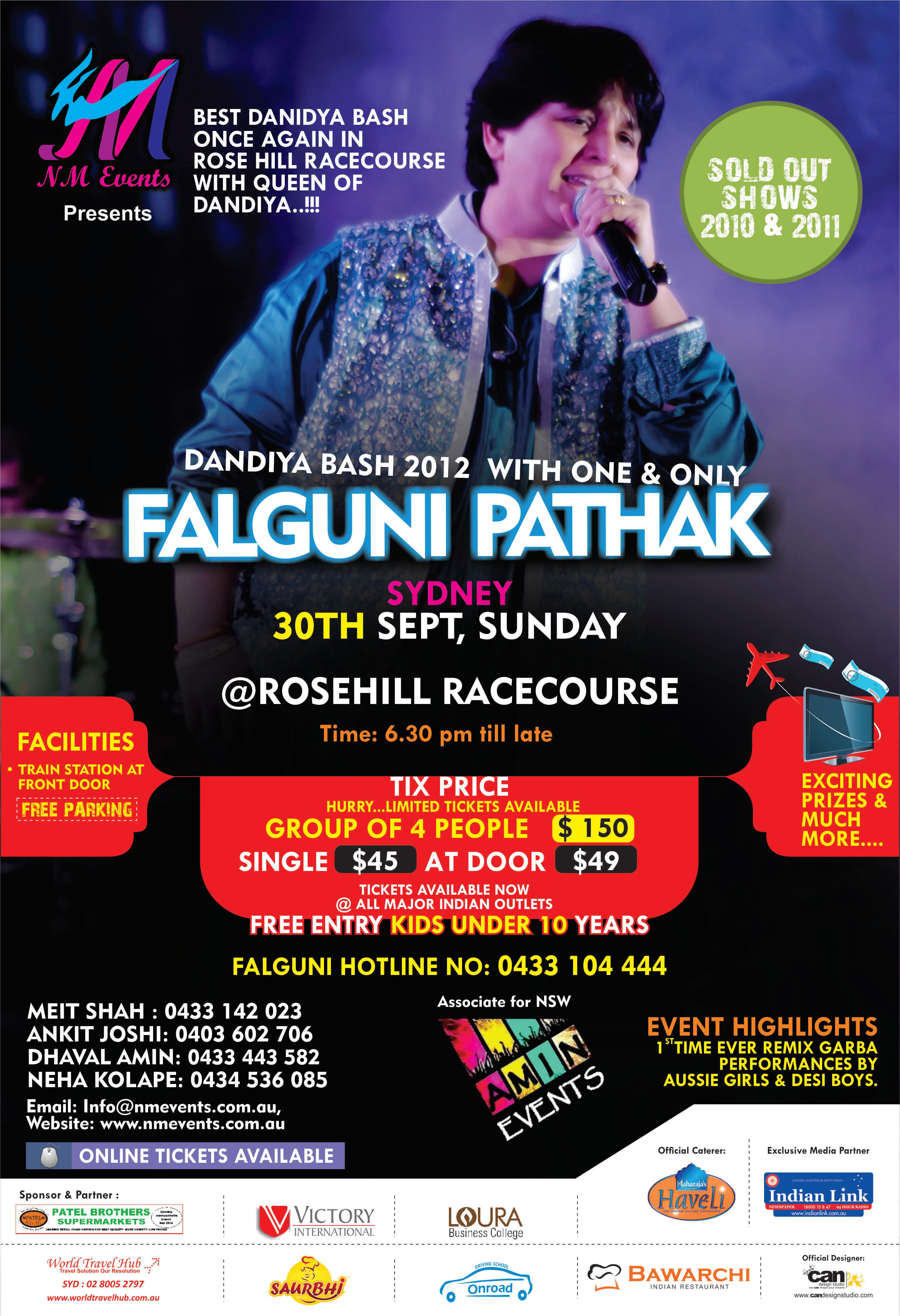
SEPTEMBER (2) 2012 61 NATIONAL EDITION

62 SEPTEMBER (2) 2012 www.indianlink.com.au
IMPoRTANT INFoRMATIoN FoR INTERNATIoNAL STUDENTS
31st December 2012 is approaching fast
If you held a student visa on 8th February 2010, you can use old Skilled Occupation List (SOL as at 08/02/2010) to choose a suitable occupation from that generous SOL and apply for skilled Graduate visa (S/C 485).
OR
If you had applied for subclass 485 visa prior to 8th February 2010 or you held a subclass 485 visa on 8th February 2010, you can use old Skilled occupation List (SOL as at 08/02/2010) to choose a suitable occupation from that generous SOL and apply for subclass 885( Skilled Residence) , subclass 886 (Skilled Sponsored Residence ) or Subclass 487 ( Skilled Regional Sponsored – Provisional ). You can also use old points test.
You Must Lodge above applications prior to 1st January 2013.
Contact us to assess your possible options if you think that you are one of those lucky applicants who can avail the above generous transitional provisions.
We can also help you with the following applications: Expression of interest, Skilled migration, Graduate skilled, State sponsorship, Partner visa, Skill assessments, Student visa, Employer nomination scheme , RSMS, Work visa subclass 457, Visitor visa, Resident return visa, Entertainment visa, MRT & AAT reviews.
Amrit Pal Jagota (MARN: 0532014)
Manvinder K Josan (MARN: 0962796)
Mob: 0414338423 Mob: 0410719375
I NTERNATI
o NAL M IGRATI o N C ENTRE
Suite 1,Level 1,127 Burwood Road,Burwood, NSW 2134
Email: ajagota@iprimus.com.au Phone: 02 97476071, Fax: 02 97474031
Web address: www.theimc.com.au
CANADA Migrate to
We have recently formed collaboration with “Regulated Canadian Immigration Consultant” practise in CANADA. We can now also arrange a free assessment for your Canadian visa options.
PoTENTIAL APPLICANTS WITH AUSTRALIAN QUALIFICATIoN AND EMPLoYMENT EXPERIENCE


HAVE VERY GooD oPPoRTUNITIES FoR CANADIAN PERMANENT RESIDENCE.


CooKS and other suitable applicants CAN be sponsored by Canadian Employers for work visas. Assistance is also available for following Canadian visa applications.
BUSINESS IMMIGRATIoN
VISIToR VISA APPLICATIoNS.
PARTNER VISA
ELIGIBLE FAMILY VISA
PERMANENT RESIDENCE
PRoVINCIAL NoMINEE PRoGRAMMES
STUDY VISA APPLICATIoNS
WoRK PERMIT APPLICATIoNS
If your application has reasonable prospect of success, “Regulated Canadian Immigration Consultant” will advise you in writing of the application process, fees & charges associated with the application.
SEPTEMBER (2) 2012 63 NATIONAL EDITION

64 SEPTEMBER (2) 2012 www.indianlink.com.au






































































































 BY KOMAL UTSAV JAGAD
BY KOMAL UTSAV JAGAD














































 By SAROJA SRINIVASAN
By SAROJA SRINIVASAN




















 BY FRANKEY GERARD FERNANDES
BY FRANKEY GERARD FERNANDES



















































